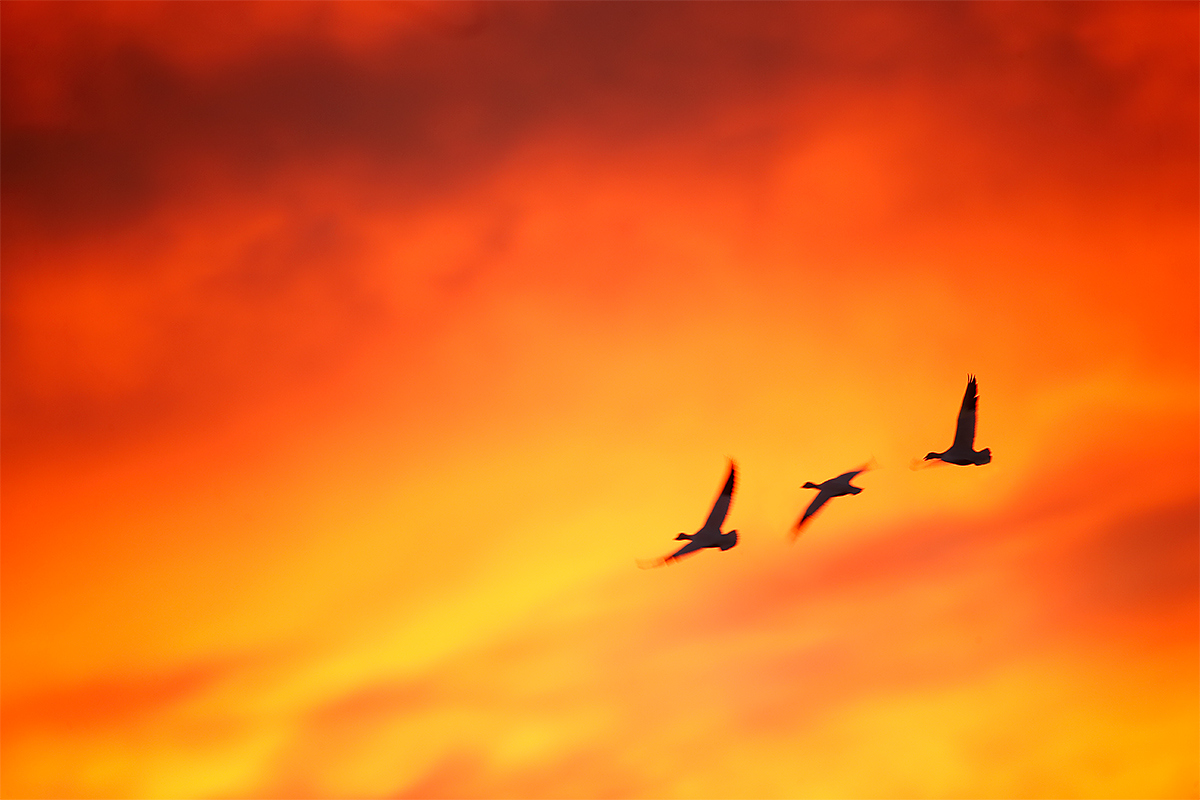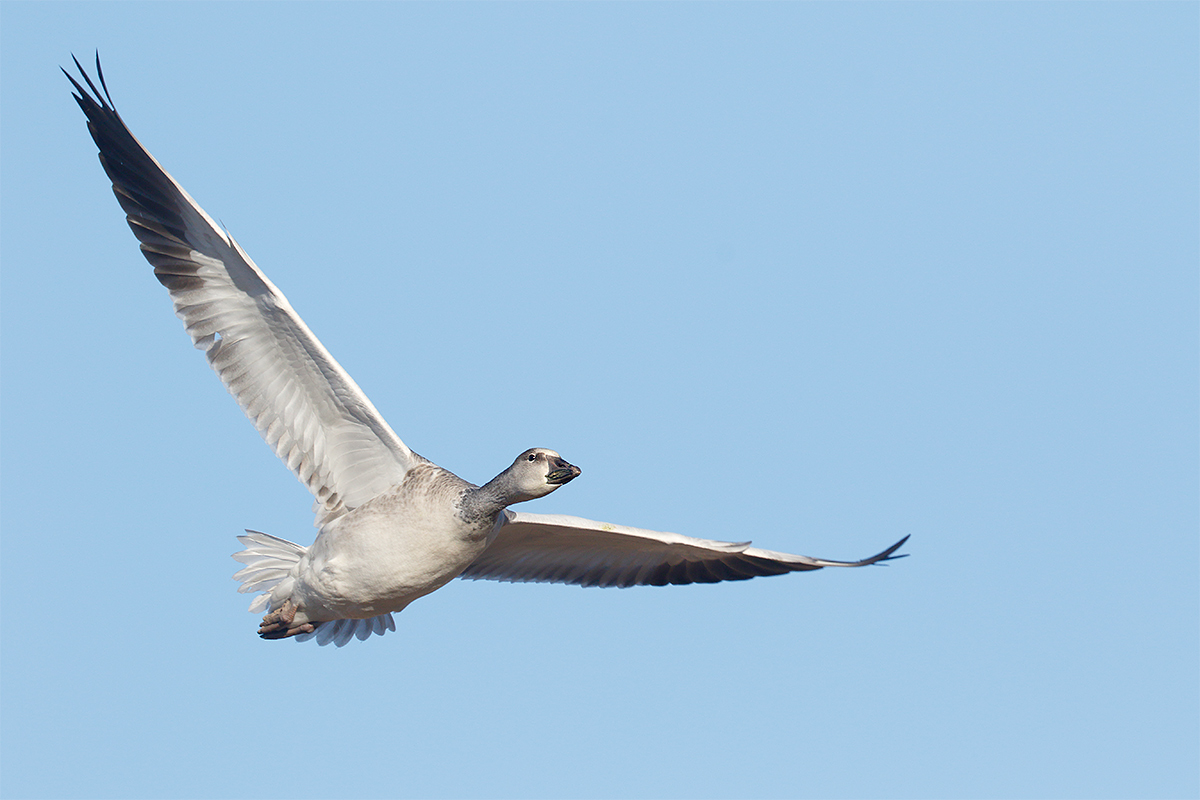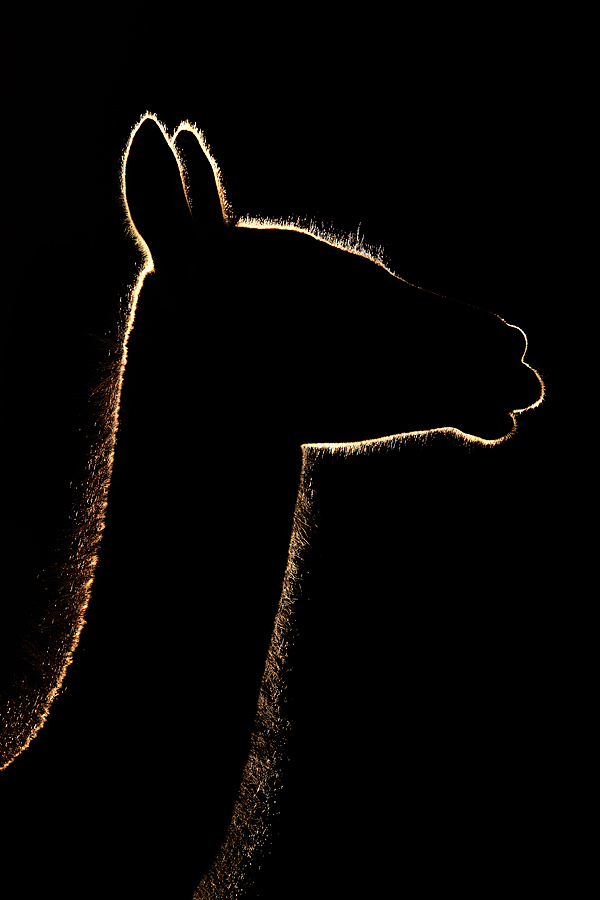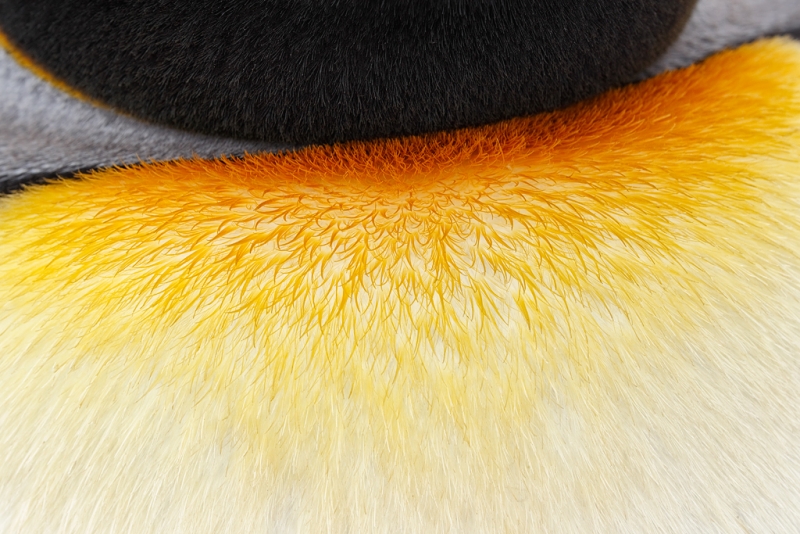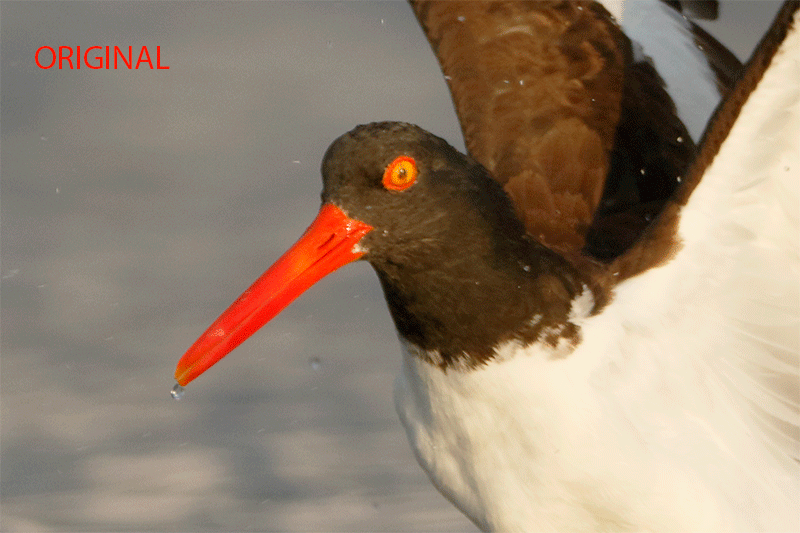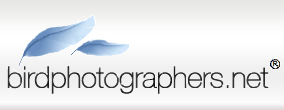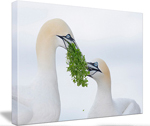November 23rd, 2014
|

|
|
Screen Capture
|
Mac Help Needed
Arash sent me the updated DPP 4 Guide with the sharpness and noise reduction tables updates for the 7D II. When I click on he PDF I get the error message above. Arash is also on a Mac so the problem makes no sense to me :).
Any and all help would be appreciated. I need to make sure that Jim has the updated version at the home office before I make a formal announcement.
The Streak Continues: 358
We had another wonderful Festival of the Cranes Workshop group and everyone learned a ton; Denise and I rocked ’em again . We enjoyed some pretty good photography especially with the pre-dawn blast of about 20,000 geese in one fell swoop. Denise and I headed back to the refuge early and enjoyed some good goose action and a lovely crane pool sunset.
Coming soon: a free Bosque Site Guide update for all: The State of the Bosque…. Today’s blog post, the 358th in a row, took 1 1/2 hours to assemble and was published from my hotel room in Socorro, NM at 3:34am. Tomorrow, with an Armageddon-like forecast, is our fourth and last early morning photography Festival workshop.
|
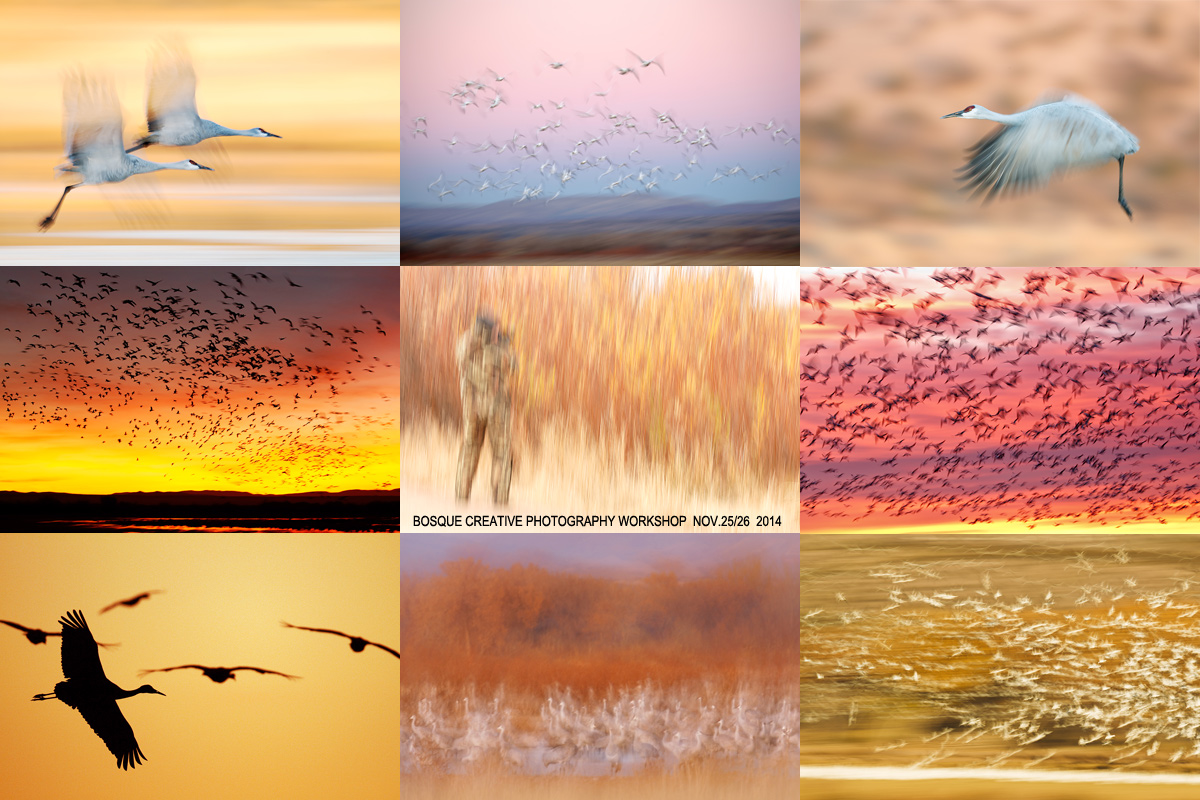
|
|
Join Denise Ippolito and Arthur Morris for two great days of photography, fun, and learning at one of our favorite soul places. We will surely be taking you out of the box on this workshop. Please click on the card to enjoy a larger version.
|
Bosque del Apache 2014 A Creative Adventure/BIRDS AS ART “Creative Photography Instructional Photo-Tour.” (IPT). NOV 24-25, 2014. 2-FULL DAYS: $729. Leaders: Denise Ippolito & Arthur Morris. Introductory Slide program: 7:00pm on Sunday 11/23.
It is still not too late to Get Out of Your Box!
The Creative Bosque IPT is perfect for folks who want to learn to think outside the box, to create new and different images. This workshop is the perfect add-on for folks who attended the Festival of the Cranes. Learn to unleash your creative juices at the wondrous Bosque del Apache National Wildlife Refuge in San Antonio, New Mexico with two great leaders including the amazingly talented and creative Denise Ippolito. In-the-field instruction will include tips on gear set-up, on creating a variety of pleasing blurs, on getting the right exposure, and on designing pleasing images. And lots more. From vertical pan blurs to subject motion blurs to zoom blurs to multiple exposures we will cover it all. If conditions are perfect, we will not hesitate to take advantage of them to do some traditional bird photography. This workshop will include an inspirational introductory slide program on Sunday evening, 11/23, after dinner on your own, two morning and two afternoon photography sessions, all lunches, a digital workflow and Photoshop session after lunch on Monday, and an image critiquing session after lunch on Tuesday.
At this late hour, the only way to to sign up is to either find us on the refuge or get in touch via e-mail.
Please Help Support My Work on the BAA Blog
Thanks a Stack! The last six weeks have been great!
The last six weeks have been quite rewarding with more and more folks making it a habit to use my B&H links especially for their major gear purchases. It is great to feel appreciated. Thanks a stack to all who used our links for purchases large and small.
To show your appreciation for my efforts here, we ask, as always, that you use our the B&H and Amazon affiliate links on the right side of the blog for all of your purchases. B&H Is recommended for you major photography gear purchases, Amazon for your household, entertainment, and general purpose stuff. Please check the availability of all photographic accessories in the BIRDS AS ART Online Store, especially Gitzo tripods, Wimberley tripod heads, and the like. We sell only what I have used, have tested, and can depend on. We will not sell you junk. We know what you need to make creating great images easy and fun. And we are always glad to answer your gear questions via e-mail.
I would of course appreciate your using our B&H affiliate links for all of your major gear, video, and electronic purchases. For the photographic stuff mentioned in the paragraph above we, meaning BAA, would of course greatly appreciate your business. Here is a huge thank you to the many who have been using our links on a regular basis and visiting the BAA Online store as well.
|

|
|
This image was created on the clear sunny afternoon of November 22 at 3:20pm at Bosque del Apache NWR with the hand held Canon EF 24-105mm f/4L IS USM lens (at 35mm) and the Canon EOS 5D Mark III. ISO 50. Evaluative metering +1/3 stop was a small underexposure (but for a very few hot Snow Goose bellies….): 1/15 sec. at f/22 in Tv mode.
Two sensors below the central sensor AI Servo Surround/Rear Focus as framed was active at the moment of exposure. Click here to see the latest version of the Rear Focus Tutorial. Click on the image to see a larger version.
|
Mayhem at 35m: Like it or hate it?
Much of bird photography at Bosque is about understanding the wind. With a southeast breeze I put myself in position just to the right of the flock with a wide angle lens so that when they blasted off they would be coming right at me. I had added an 82mm Singh-Ray Circular Polarizer and set it to dark in order to get down to 1/15 sec. In addition the warming element did a great job of taming the harsh light. See the short tutorial below to learn how to set a circular polarizer to dark.
Your call: like it or hate it? OK to hate it just be civil :). Whichever, please let us know why.
Tip of the Day
Whether you prefer blurs or sharp (I pretty much always prefer the former to the latter), one of the key things to remember when creating images in any way similar to the one above is to concentrate on both keeping the camera relatively square to the world and on getting a clean lower edge. You can kill two birds with one stone by leveling your hand held rig by eyeballing the bottom of the flock….
Singh-Ray Filters
Singh-Ray filters have been used by the world’s top photographers for many decades. Who? Art Wolfe, Tony Sweet, John Barclay, my new friend Ian Plant, my BFF and oft-business partner, Denise Ippolito, Nevada Weir, Brenda Tharp, Cole Thompson, Chuck Kimmerle, and the late Galen Rowell among others. Singh-Ray has been and is the name in quality filters. I often use a 77mm warming polarizer set to dark at Bosque to get to a slower shutter speed in too-bright conditions. Toward that end, BIRDS AS ART is working with Singh-Ray to produce a 5-stop Neutral Density filter to to fit the filter drawers of Canon Super-telephoto lenses. Stayed tuned for info on that.
No other filter manufacturer comes close to matching the quality of Singh-Ray’s optical glass that is comparable to that used by NASA. And they continue to pioneer the most innovative products on the market like their ColorCombo polarizer, Vari-ND variable and Mor-Slo 15-stop neutral density filters. When you use their filters, you’ll create better, more dramatic images and, unlike other filters, with absolutely no sacrifice in image quality. All Singh-Ray filters are handcrafted in the USA.
Best News: 10% Discount/Code at checkout: artie10
To shop for a Singh-Ray warming polarizer (for example), click on the logo link below, click on Polarizers/color enhancing on the menu bar, choose LB Warming Polarizer, choose the size and model, add to cart, and then checkout. At checkout, type artie10 into the “Have a coupon? Click here to enter your code” box, and a healthy 10% discount will be applied to your total. In addition to enjoying the world’s best filter at 10% off you will be supporting my efforts here on the blog.

How to Set A Circular Polarizer to Dark
Mount the polarizer. Put the camera in Av mode at zero EC. Point the lens at the sky 90 degrees off sun angle. Turn the polarizer slowly while noting the shutter speed as you rotate the polarizer. You will want to quit turning it when you find the slowest shutter speed. Now you can work right down sun angle several stops slower than if you were not using a polarizer set to dark.
|
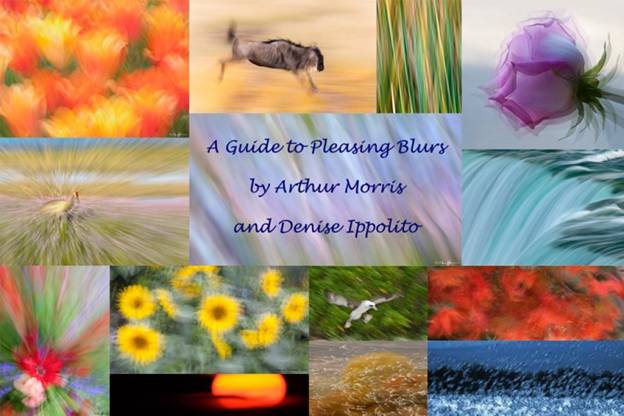
|
|
Learn the secrets of creating contest winning images in our “A Guide to Pleasing Blurs.”
|
A Guide to Pleasing Blurs
While lying in bed in the middle of last night and thinking of finishing this blog post, I realized that the two oof bird images were actually de-focused blurs, one of the many categories that we discuss and detail in our great eGuide, A Guide to Pleasing Blurs by Denise Ippolito and yours truly.
Pleasing Blurs are not accidents. Learn pretty much everything that there is about creating them in this instructive (as always) guide.
IPT Updates
Would you like to visit some of the great bird photography locations on the planet? Would you like to learn from the best? Click here and join us.
Facebook
Be sure to like and follow BAA on Facebook by clicking on the logo link upper right. Tanks a stack!
Support the BAA Blog. Support the BAA Bulletins: Shop B&H here!
We want and need to keep providing you with the latest free information, photography and Photoshop lessons, and all manner of related information. Show your appreciation by making your purchases immediately after clicking on any of our B&H or Amazon Affiliate links in this blog post. Remember, B&H ain’t just photography!
…..
Amazon.com
Those who prefer to support BAA by shopping with Amazon may use this link:
Amazon Canada
Many kind folks from north of the border, eh, have e-mailed stating that they would love to help us out by using one of our affiliate links but that living in Canada and doing so presents numerous problems. Now, they can help us out by using our Amazon Canada affiliate link by starting their searches by clicking here. Many thanks to those who have written.
Typos
In all blog posts and Bulletins, feel free to e-mail or to leave a comment regarding any typos or errors. Just be right :).
November 22nd, 2014 The Streak Continues: 357
Denise and I rocked ’em again on our second Festival Early Morning In the Field workshop. We had fifteen folks. The pre-dawn sky offered a bit more color than the day before but was still pretty boring but everyone learned a ton. The crane pool was only so-so but everyone learned a ton. Then we re-visited the new flooded field but that was not very good either. But everyone learned a ton. Despite a crummy overall morning but everyone learned a ton. Again we were plagued by the seemingly omnipresent northwest breeze. Everyone received lots of individual attention and everyone went home very happy.
Mike Cohen of southeast Florida was in the Friday morning group. At the end of the session he came up to me and said, “That was great. I learned so much. And I am glad that I came and met you in person. Before today, I did not like you. But you are actually charming.” I said, “You’ve heard bad stuff about me from others? Heard that I am arrogant and do not care if you learn? And heard that I will push you out of the way to get my shot.?” He said, “Yeah, in part.” I said, “Please remember that 99% of those folks have never been on an IPT or in a class, have never met me.” He said, “But also a bit from your manner on the blog and in e-mail. But I was amazed to find out that you are a really nice guy.” “Thanks,” I said, “I really am a teddy bear….”
My keynote presentation, “A Twenty Year Love Affair with Bosque” was warmly received by a large crowd. It was a pleasure having 14-year Bosque manager Phil Norton in the audience. He kindly contributed some back story on the state of the refuge since he left and later retired from the refuge system.
The like-new Canon 200-400 lens offered yesterday sold instantly. Today’s blog post, the 357th in a row, took 2 hours to assemble and was published from my hotel room in Socorro, NM at 3:50am.
Festival of the Cranes Early Sunday Morning Photography In-the-Field Workshop
Festival of the Cranes Early Sunday Morning, NOV 23. In-the-Field Photography Workshop: 5:50-10:30am. Limit 16/Openings 5. $125. After sellouts on Thursday, Friday, and Saturday there are still a few openings for the Sunday offering. Sign up at the Festival Info Table in the Bosque Visitor Center.
Join full time professional photographers Arthur Morris/BIRDS AS ART and Denise Ippolito/A Creative Adventure for four 1/2 hours of fun and learning at the refuge. You will learn how to create pleasingly blurred images in the low predawn light, to spot the good situations, to understand the effects of wind speed and direction on bird (especially in flight) photography, to photograph individual cranes in flight, to see and understand the light, to get the right exposure every time after making a single test exposure, and to design pleasing images. In addition you will learn and live Artie’s early morning Bosque del Apache strategies, strategies based on over two decades of experience at the refuge. This is a caravan event and a refuge pass will be provided. Dress with layers for warmth and bring snacks and plenty of water. Workshop leaves sharply at 6:00 AM.
By e-mail from Friday Participant and Blog Regular David Policansky
I’m still replaying the morning in-the-field trip with you and Denise in my head. It was so helpful to watch you in action and hear your explanations of what you were doing and why. I don’t think even your detailed written words can quite take the place of the experience in the field. David
|

|
|
Join Denise Ippolito and Arthur Morris for two great days of photography, fun, and learning at one of our favorite soul places. We will surely be taking you out of the box on this workshop. Please click on the card to enjoy a larger version.
|
Bosque del Apache 2014 A Creative Adventure/BIRDS AS ART “Creative Photography Instructional Photo-Tour.” (IPT). NOV 24-25, 2014. 2-FULL DAYS: $729. Leaders: Denise Ippolito & Arthur Morris. Introductory Slide program: 7:00pm on Sunday 11/23.
It is still not too late to Get Out of Your Box!
The Creative Bosque IPT is perfect for folks who want to learn to think outside the box, to create new and different images. This workshop is the perfect add-on for folks who attended the Festival of the Cranes. Learn to unleash your creative juices at the wondrous Bosque del Apache National Wildlife Refuge in San Antonio, New Mexico with two great leaders including the amazingly talented and creative Denise Ippolito. In-the-field instruction will include tips on gear set-up, on creating a variety of pleasing blurs, on getting the right exposure, and on designing pleasing images. And lots more. From vertical pan blurs to subject motion blurs to zoom blurs to multiple exposures we will cover it all. If conditions are perfect, we will not hesitate to take advantage of them to do some traditional bird photography. This workshop will include an inspirational introductory slide program on Sunday evening, 11/23, after dinner on your own, two morning and two afternoon photography sessions, all lunches, a digital workflow and Photoshop session after lunch on Monday, and an image critiquing session after lunch on Tuesday.
At this late hour, the only way to to sign up is to either find us on the refuge or get in touch via e-mail.
Please Help Support My Work on the BAA Blog
Thanks a Stack! The last six weeks have been great!
The last six weeks have been quite rewarding with more and more folks making it a habit to use my B&H links especially for their major gear purchases. It is great to feel appreciated. Thanks a stack to all who used our links for purchases large and small.
To show your appreciation for my efforts here, we ask, as always, that you use our the B&H and Amazon affiliate links on the right side of the blog for all of your purchases. B&H Is recommended for you major photography gear purchases, Amazon for your household, entertainment, and general purpose stuff. Please check the availability of all photographic accessories in the BIRDS AS ART Online Store, especially Gitzo tripods, Wimberley tripod heads, and the like. We sell only what I have used, have tested, and can depend on. We will not sell you junk. We know what you need to make creating great images easy and fun. And we are always glad to answer your gear questions via e-mail.
I would of course appreciate your using our B&H affiliate links for all of your major gear, video, and electronic purchases. For the photographic stuff mentioned in the paragraph above we, meaning BAA, would of course greatly appreciate your business. Here is a huge thank you to the many who have been using our links on a regular basis and visiting the BAA Online store as well.

 If what you’ve learned here on my blog about the Canon EOS-7D Mark II has inspired you to purchase this great new camera body, please consider using the logo link above to support our efforts here in bringing you the latest, greatest educational materials on daily basis.
If what you’ve learned here on my blog about the Canon EOS-7D Mark II has inspired you to purchase this great new camera body, please consider using the logo link above to support our efforts here in bringing you the latest, greatest educational materials on daily basis.
|

|
|
This Sandhill Crane image was created on the clear early evening of November 20, 2014 just after sunset at Bosque del Apache NWR. I used the Gitzo 3532 LS carbon fiber tripod), the Mongoose M3.6 head, Canon EF 600mm f/4L IS II USM lens, the Canon Extender EF 1.4X III, and the Canon EOS 7D Mark II. ISO 800. Evaluative metering + 1 stop as originally framed: 1/1000 sec. at f/5.6 in Av mode. Color Temperature: 8000K.
65-Point Automatic Selection Rear Focus/AI Servo AF selected two sensors, one on the tail and one on the upper back/near wing as originally framed. They were of course active at the moment of exposure. Click here to see the latest version of the Rear Focus Tutorial. Click on the image to see a larger version.
Sandhill Crane landing Silhouette #1
|
In the “Canon EOS-1D X, EOS-5D Mark III, EOS-7D Mark II at Bosque del Apache NWR/Which One When and Why?” blog post here, I wrote, and I quote, “When I am focal length challenged I will reach for the 600 II, 1.4X III, and 7D II at least until proven otherwise…. All on the tripod of course.”
Under the heading of Crane Pools for Sunset, I continued, “On a typical late afternoon at the crane pools you will want to go both very long and very wide. You get the idea by now 🙂 I am however, looking forward to using the 600II/1.4X III/7D II combo for the incoming crane silhouettes. AF will be faster than with the 600 II/2X III/1D X and I will have the advantage of being at f/5.6 rather than f/8; this will save me a full stop of ISO across the board. A 16-35 or 24-70II on the Giottos MH 1302-655 BallHead (I call it the tiny ballhead) will rock on many evenings after most folks have gone home too early.”
As the two crane silhouette images here show, I was right on the money as far at the 600 II/1.4X III/7D II combination was concerned. In short, the 7D II continues to amaze me.
|
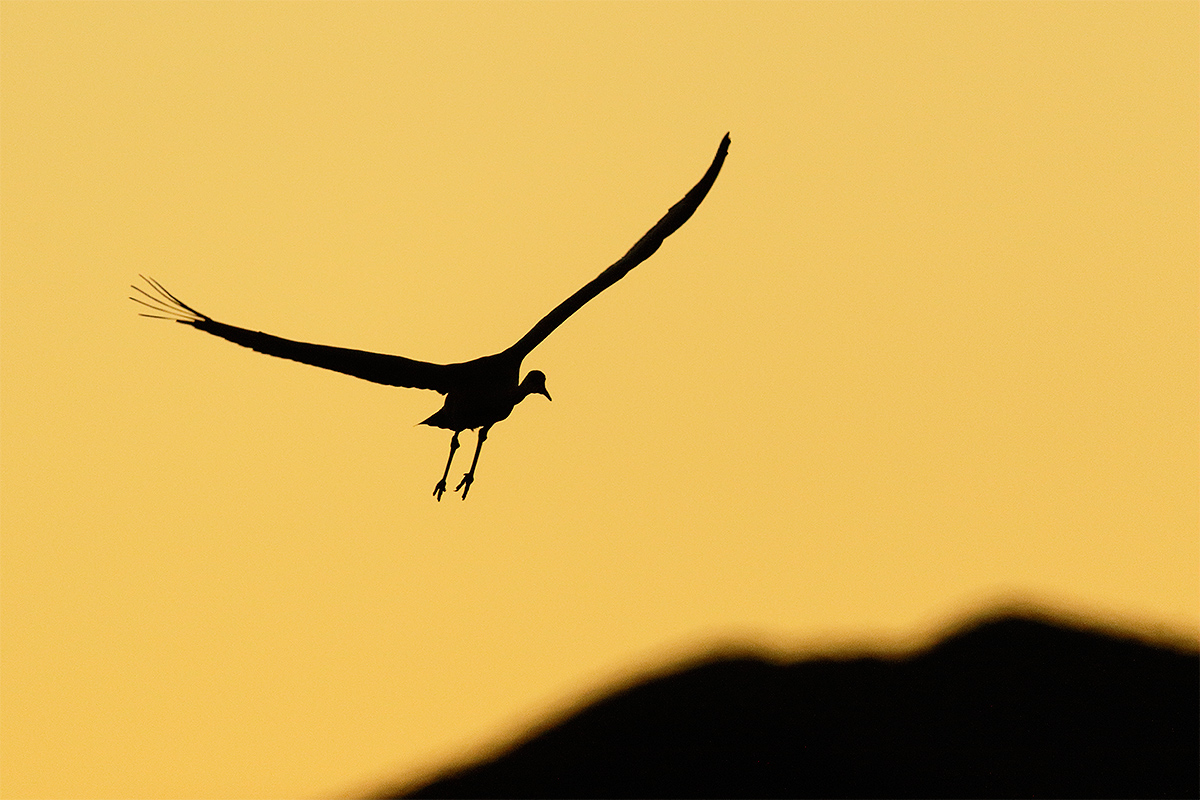
|
|
This Sandhill Crane image was also created on the clear early evening of November 20, 2014 just after sunset at Bosque del Apache NWR. Again I used the Gitzo 3532 LS carbon fiber tripod), the Mongoose M3.6 head, Canon EF 600mm f/4L IS II USM lens, the Canon Extender EF 1.4X III, and the Canon EOS 7D Mark II . ISO 1600. Evaluative metering + 1 stop as originally framed: 1/640 sec. at f/5.6 in Av mode. Color Temperature: 8000 K.
65-Point Automatic Selection Rear Focus/AI Servo AF selected and array of three sensors that covered the bird’s head and legs perfectly. (See the screen capture below.) The three sensors were active at the moment of exposure. Click here to see the latest version of the Rear Focus Tutorial. Click on the image to see a larger version.
Sandhill Crane landing Silhouette #2
|
Your Favorite?
Which of today’s two images is your favorite? Please take a moment to leave a comment and let us know why.
|
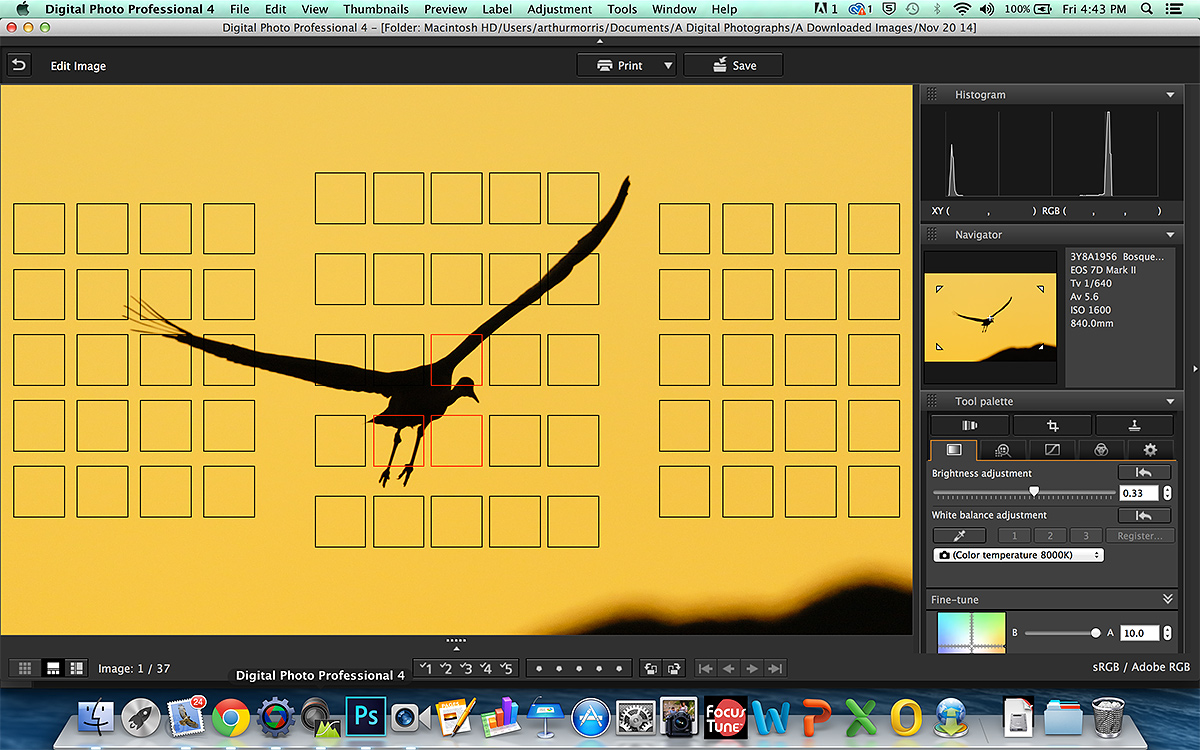
|
|
This is the DPP 4 screen capture for Image #2.
|
The DPP 4 Screen Capture
The DPP 4 screen capture for Image #2 shows the array of AF points that were selected by 65-Point Automatic Selection illuminated in red; pretty darned impressive it you ask me. Those with good eyes can see that I lightened the image 1/3 stop (.33) with the Brightness slider on the Perform basic image adjustment tab. For most images I also use the Adjust image detail tab (for NR), and the Perform image lens correction. For the first time ever I used Fine Tune to tweak the sky color.
|
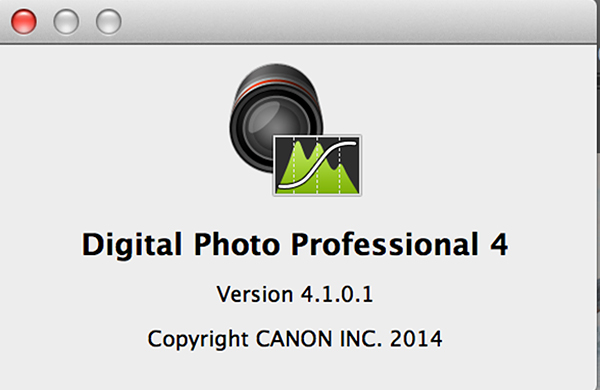
|
|
DPP 4 is completely new and different from the various versions of DPP 3. It handles files only from the following cameras: EOS-1D X, EOS 5D Mark III, EOS-6D, and the EOS-7D Mark II.
|
Great 7D II/DPP v4.01.0 News
An updated version of Canon Digital Photo Professional that supports RAW files from the EOS-7D Mark II is available for download via the Canon USA website. Though some folks had trouble getting access to the Mac version of DPP v4.1.0.1 I was able to download and install it easily yesterday evening. Hint for Mac folks: after you double click on the downloaded zip file you need to go to your desktop and click on the icon that was magically created there in order to begin the installation.
To download DPP v4.1 first click here and then click on Drivers and Software and follow the prompts.
|
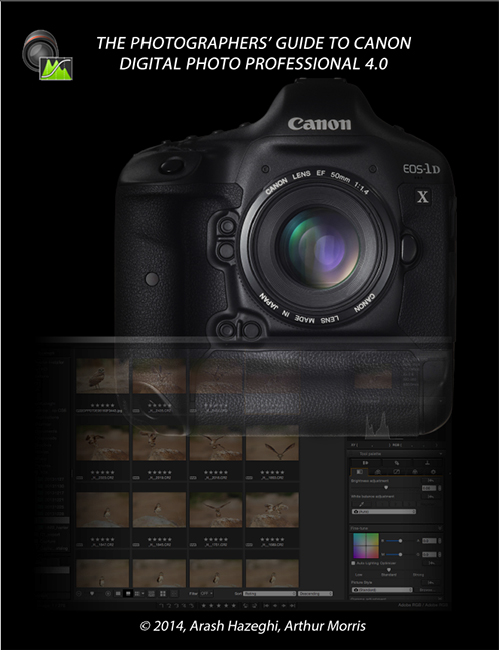
|
|
The Photographers’ Guide to Canon Digital Photo Professional 4.0 by Arash Hazeghi and Arthur Morris is now available. Click here to order.
|
The DPP 4 eGuide (PDF)
BIRDS AS ART is proud to announce the release of The Photographers’ Guide to Canon Digital Photo Professional 4.0 by Arash Hazeghi and Arthur Morris: $40.
Artie first went to DPP because he was not happy with the colors he was getting with 1D X and 5D III images from ACR (Adobe Camera Raw). Though less than intuitive, he found it fast and easy to use once he mastered the basics. He collaborated with Arash Hazeghi on the first DPP RAW Conversion Guide. Do understand that the DPP RAW Conversion Guide details the use of various iterations of DPP 3. He calls those the DPP 3.whatever versions. The latest version is DPP 3.14.41.0.
Some time ago Canon released DPP 4.0, completely and utterly new and different from DPP 3. When it was introduced DPP 4 worked only EOS-1D X, EOS-5D Mark III, and EOS-6D images and that is still the case today. It will not work with RAW files from older Canon digital camera bodies. Both authors are hoping that a new version of DPP 4 that will convert EOS-7D Mark II images will be released soon.
In the meantime, DPP 4 performs superbly with his 1D X and 5D III images. When he first opened DPP 4 he felt as if he were in the cockpit of a Boeing 747 and was being asked to fly it. There were so many tabs and buttons and controls that he simply closed the program. He immediately called Arash and asked him if he wanted to work together on a DPP 4 guide. After 100s of hours of work the guide is now ready to teach you to conveniently and easily use DPP 4 to create the finest possible image files from your 1D X, 5D III, and 6D image files. Basically, Arash sent artie a sophisticated outline that he re-crafted into a clear, concise, easily understood, and easy to follow how-to guide written in the BAA style. Arash created all of the charts, diagrams, and graphics.
His charts with recommendations for both Chrominance and Luminance Noise Reduction values for each of the 3 covered cameras at various ISO settings are alone worth the price of the book. He spent many dozens of hours experimenting with high ISO RAW files and shares his findings with you in the DPP 4 Guide. Folks will surely want to create some sort of easily accessible quick reference on their laptops and home computers.
DPP offers a host of great features some but not all of which are reminiscent of ACR. These include the following: Multi-image display, the extremely valuable Before/after Comparison layout, Highlight/shadow warnings, White Balance, and the eight RAW Conversion tabs that include sliders for Brightness, Highlights, Shadows, Contrast, Hue-Saturation, Color Tone, Sharpness, Noise Reduction, HSL (Hue/Saturation/Luminance), Lens Corrections, and Digital Lens Optimizer among others. We teach you how to best utilize each of those and many more. We share our slightly different DPP workflows and dozens of tips that will simply make your life easier. Arash uses DPP4′s rating system for choosing his keepers while artie continues to rely on BreezeBrowser Pro for that. DPP offers a variety of sorting filters. We explain all of the options. In addition, we teach you how to set your preferences and how to arrange your workspace for the greatest efficiency.
Both authors firmly believe that the manufacturer’s conversion algorithms will always out-perform 2nd party software when it comes to preserving image quality, fine detail, and accurate color rendition.
The authors wish to thank Chuck Westfall and Rudy Winston of Canon USA for their help; they are always available to answer our nit-picking questions. Sincere thanks also to Ken Kovak, Bob Schwartz, Dane Johnson, and John Stuhlmuller for their thoughtful and substantive reviews of late drafts of the DPP 4 manuscript.
You can order your copy of the DPP 4 Guide for $40 through the BAA Online Store by clicking here, by calling Jim or Jen in the office at 863-692-0906 with credit card in hand, by sending us a check made out to “Arthur Morris” or a money order for $40 to BIRDS AS ART, PO Box 7245, Indian Lake Estates, FL 33855, or by by sending a Paypal for $40 to e-mail. IN the latter two instances be sure to note DPP 4 Guide so we know what you are ordering :).
Note: the Sharpness and Noise Reduction Charts will be updated to include the recommended values for the 7D Mark II. I have been sending RAW files to Arash for several days. Now Arash has a lot more work to do. For those who have purchased the DPP 4 Guide, the update will of course be free but please be patient.
Those using older Canon camera bodies like the 1D Mark IV, the 7D, the 50D, the 40D, the various Rebels (not highly recommended for serious nature photography), are directed to the original DPP RAW Conversion Guide click here. DPP 3 (the latest version is DPP v3.14.41.0) does a fine job of converting images from the older camera bodies. I used it for several years.
DPP 4 eGuide Kudos via e-mail from Melvin Grey
Artie, Thank you very much for creating and sending the superb new guide and for the excellent service.THANK YOU and ARASH, once again, for an invaluable guide and THANK YOU for your continuing educational blogs. Melvin
|
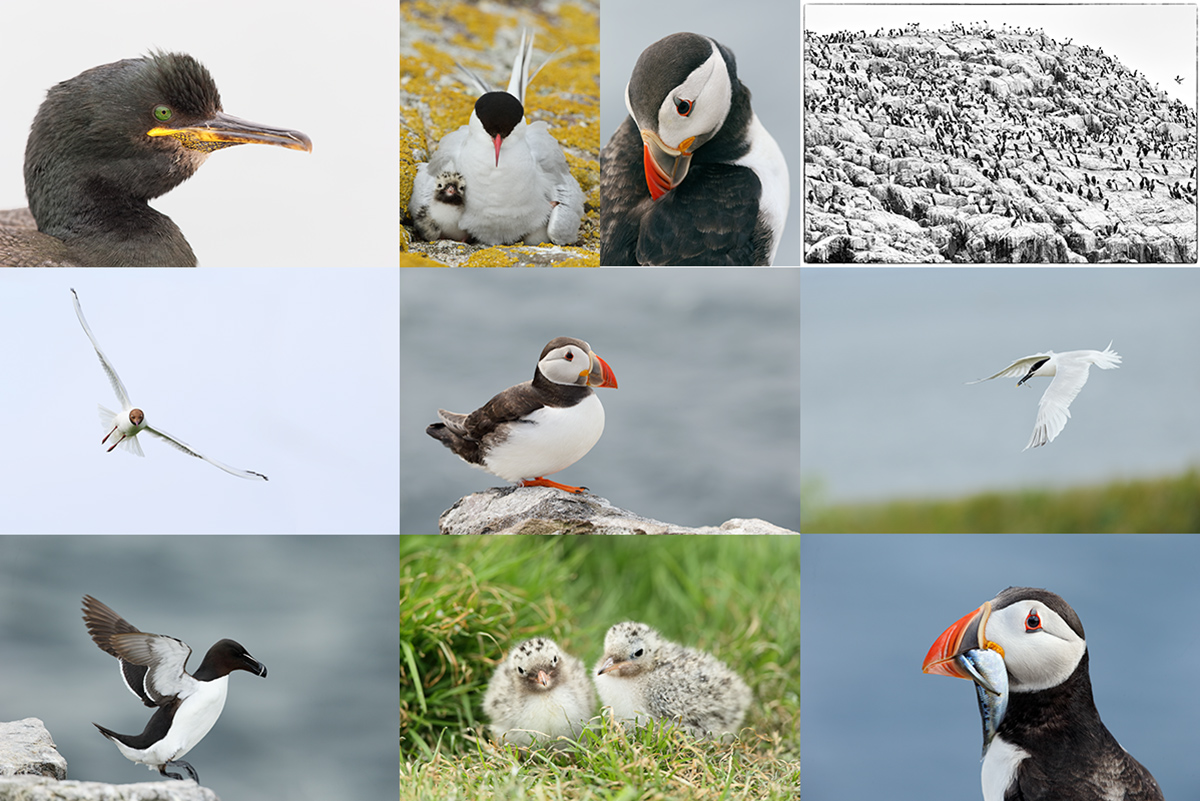
|
|
Images and card design copyright 2014: Arthur Morris/BIRDS AS ART. Click on the card to enjoy a spectacular larger version.
|
The 2015 UK Puffins and Gannets IPT
June 29 through July 5, 2015: $5499: Limit 10 photographers/Openings 1. Two great leaders: Denise Ippolito and Arthur Morris.
Here are the plans for next year: take a red eye from the east coast of the US on 28 June arriving in Edinburgh, Scotland on the morning of Monday 29 June (or simply meet us then either at the Edinburgh Airport (EDI) or later in the day at our cottages if you are driving your own vehicle either from the UK or from somewhere in Europe. Stay 7 nights in two gorgeous modern country cottages.
There are 5 days of planned puffin/seabird trips—weather permitting, and 1 full day of gannet photography with 2 sessions on the boat.
|
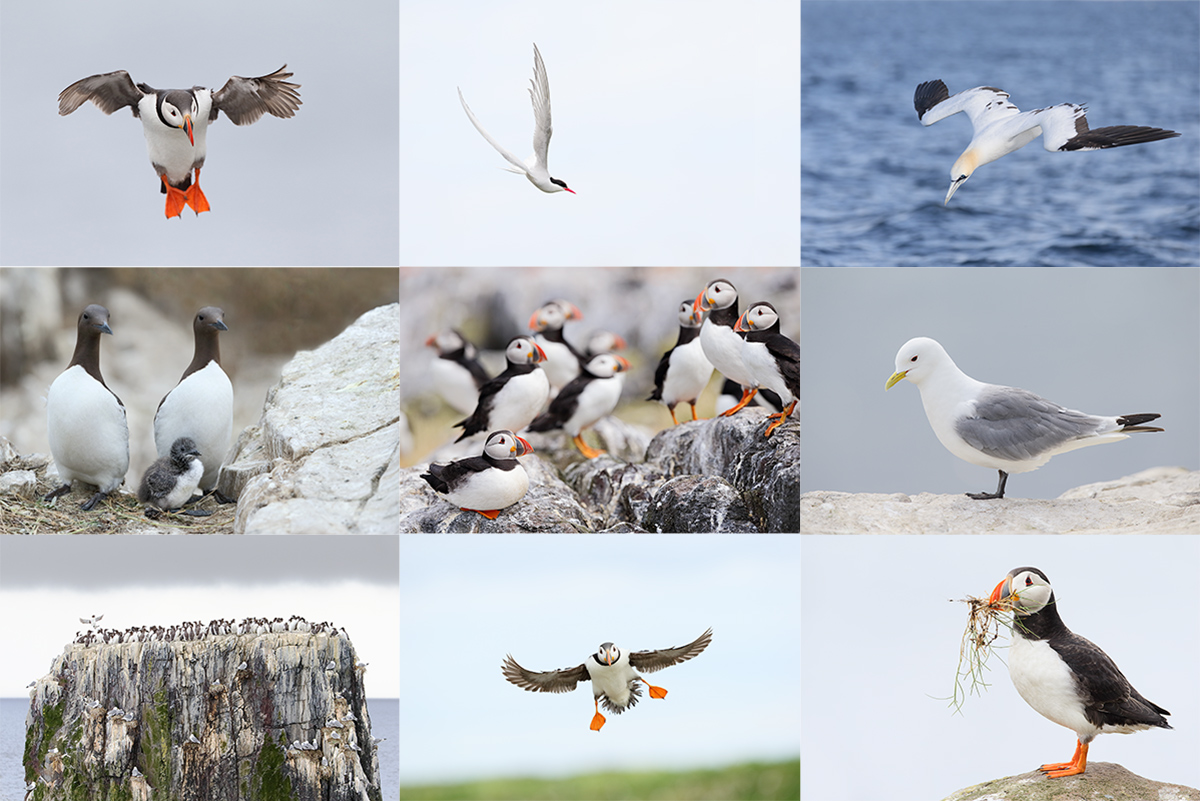
|
|
Images and card design copyright 2014: Arthur Morris/BIRDS AS ART. Click on the card to enjoy a spectacular larger version.
|
The Details
We will be staying in upscale country-side cottages that are beyond lovely with large living areas and lots of open space for image sharing and Photoshop lessons. The shared rooms are decent-sized, each with two roomy single beds and a private bathroom. See the single supplement info below.
All breakfasts, lunches and dinners are included. All 5 puffins boat lunches will need to be prepared in advance, taken with, and consumed at your leisure. I usually eat mine on the short boat trip from one island to the other. Also included is a restaurant lunch on the gannet boat day and a farewell fine dining thank you dinner. The cost of your National Heritage Trust is also included; that covers the twice a day landing fees.
Plan to fly home on the early morning of Monday 6 July or to continue your stay or travels.
|
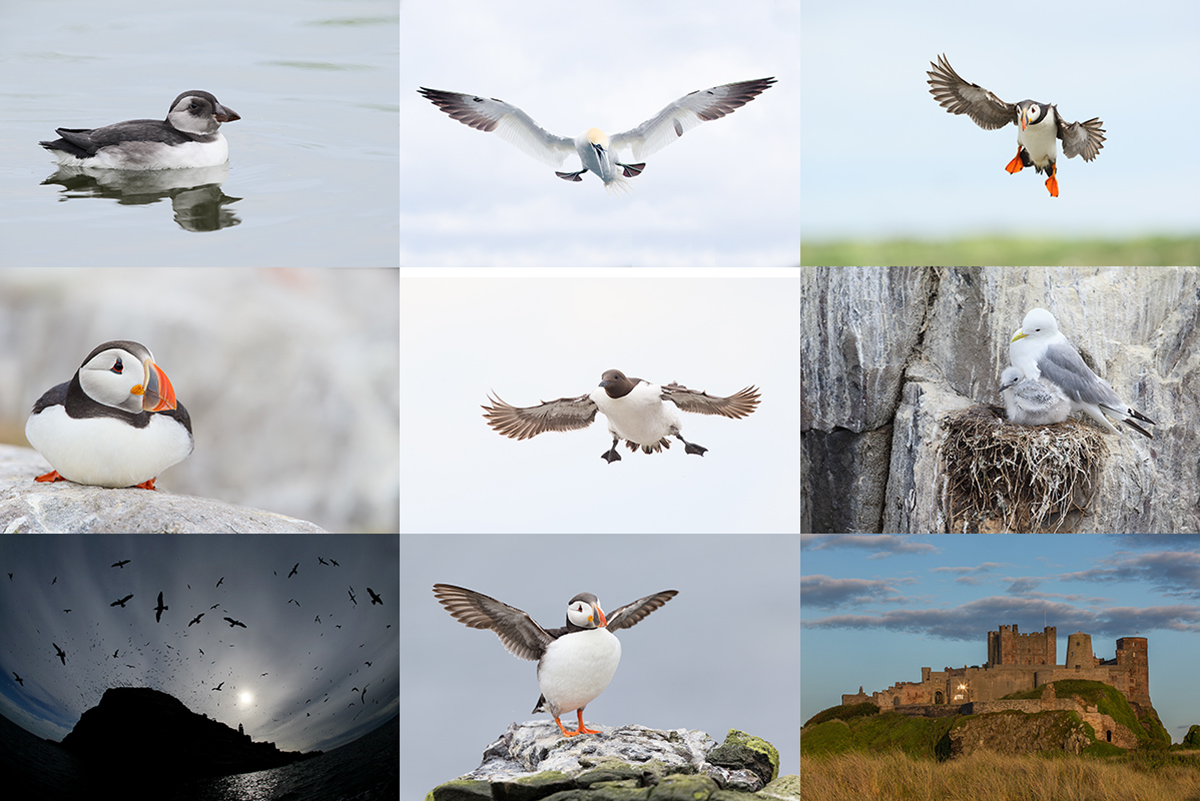
|
|
Images and card design copyright 2014: Arthur Morris/BIRDS AS ART. Click on the card to enjoy a spectacular larger version. Scroll down to join us in the UK in 2015.
|
Single Supplement Info
The single supplement is $1475. As we will be renting a third cottage the $1475 is due with your deposit and is also non-refundable.
If you are good to go please send your $2,000 deposit check now to save a spot. Please make your check out to “Arthur Morris” and send it to Arthur Morris/BIRDS AS ART, PO Box 7245, Indian Lake Estates, FL, 33855. If you cancel and the trip fills, we will be glad to apply a credit applicable to a future IPT for the full amount less a $100 processing fee. If we do not receive your check for the balance on or before the due date we will try to fill your spot from the waiting list. Whether or not your spot is filled, you will lose your deposit. If not, you can secure your spot by paying your balance.
We do hope that you can join us.
Facebook
Be sure to like and follow BAA on Facebook by clicking on the logo link upper right. Tanks a stack!
Support the BAA Blog. Support the BAA Bulletins: Shop B&H here!
We want and need to keep providing you with the latest free information, photography and Photoshop lessons, and all manner of related information. Show your appreciation by making your purchases immediately after clicking on any of our B&H or Amazon Affiliate links in this blog post. Remember, B&H ain’t just photography!
…..
Amazon.com
Those who prefer to support BAA by shopping with Amazon may use this link:
Amazon Canada
Many kind folks from north of the border, eh, have e-mailed stating that they would love to help us out by using one of our affiliate links but that living in Canada and doing so presents numerous problems. Now, they can help us out by using our Amazon Canada affiliate link by starting their searches by clicking here. Many thanks to those who have written.
Typos
In all blog posts and Bulletins, feel free to e-mail or to leave a comment regarding any typos or errors. Just be right :).
November 21st, 2014 Great “Love Affair” News
I learned yesterday that my Canon EoL-sponsored program, “A Twenty Year Love Affair With Bosque,” is not only free and open to the public but that folks do not need to register. Just show up at the Bodega Restaurant in Socorro at 1pm and enjoy: 606 N California St. The program will be over at 2:40pm so you will be have time to get out and enjoy some sweet afternoon light. Blog readers who attend are welcome to come up and give me a hug.
The Streak Continues: 356
Denise and I rocked ’em on our first Festival Bosque Early Morning In the Field workshop. We had sixteen folks who were working with about 13 different camera bodies including several that I had never seen or heard of before. Blog regular and IPT veteran David Policansky helped us out with various menu items on bodies like the 6D, 60D, and the 7D. Though the pre-dawn light was pretty boring everyone learned a ton. Same at the crane pool. And then we re-visited the new flooded field from the previous night. It was very good but for the seemingly omnipresent northwest breeze. Everyone received lots of individual attention and everyone went home very happy. By 10:30 there were lots of farewell-for-now hugs as we headed back to town to get ready for our seminar this afternoon.
The nineteen folks who attended the seminar all learned a ton and went home inspired. This blog post, the 356th in a row, took about 1 1/2 hours to prepare. It was published from my hotel room in Socorro, NM just before 4:30am.
Please Help Support My Work on the BAA Blog
Thanks a Stack! October was a Great Month.
The last six weeks have been quite rewarding with more and more folks making it a habit to use my B&H links especially for their major gear purchases. It is great to feel appreciated. Thanks a stack to all who used our links for purchases large and small.
To show your appreciation for my efforts here, we ask, as always, that you use our the B&H and Amazon affiliate links on the right side of the blog for all of your purchases. B&H Is recommended for you major photography gear purchases, Amazon for your household, entertainment, and general purpose stuff. Please check the availability of all photographic accessories in the BIRDS AS ART Online Store, especially Gitzo tripods, Wimberley tripod heads, and the like. We sell only what I have used, have tested, and can depend on. We will not sell you junk. We know what you need to make creating great images easy and fun. And we are always glad to answer your gear questions via e-mail.
I would of course appreciate your using our B&H affiliate links for all of your major gear, video, and electronic purchases. For the photographic stuff mentioned in the paragraph above we, meaning BAA, would of course greatly appreciate your business. Here is a huge thank you to the many who have been using our links on a regular basis and visiting the BAA Online store as well.
Fire in the Sky
After a long tiring day for both of us we were rewarded with a wonderful sunset. Water was added to a new field and there were probably 20,000 birds there that first afternoon. At first the sunset promised to be amazing. Then it looked like a fizzle. And then it was amazing.
The only bummer was that the huge flock did not blast off until well after dark…. But it was a sight to see.
Like New Canon EF 200-400mm f/4L IS USM lens with Internal 1.4x Extender for Sale
Sold
Bob Taylor is offering a rarely used Canon EF 200-400mm f/4L IS USM lens with Internal 1.4x Extender in like new condition for the amazingly low price of $9799, $2,000 less than the than price of a new one at B&H, $11,7999.
The sale includes the E-145C Lens Cap (actually a lens hood made of tough synthetic fabric, the rearlens cap, the lens wide strap, the ET-120 Lens Hood, the lens trunk, a LensCoat, the lens manual, and and insured shipping via UPS Ground to US addresses only. The lens and other items listed below will be shipped only after your check clears unless other arrangements are made.
Contact Bob by phone at 1(408)532-7738, on his cell at 1(408)202-0086 or via bobt8840@gmail.com. Pacific time zone.
You seen my images made with this great, versatile lens. Gets you from 200 to 560mm in an instant, and to 784mm with the additional of an external 14X TC. It is my favorite early morning fly-out lens at Bosque. I would never think of heading to Africa, the Southern Ocean, or the Galapagos without mine. If you live in a location with relatively tame birds like Florida or San Diego, or if you live out west and photograph the large mammals, this is likely the best lens for you. And you have never seen a price this low for one in like new condition before. If you have been seriously considering this lens, please do not hesitate.
Selling Your Used Photo Gear Through BIRDS AS ART
Selling your used (or like-new) photo gear through the BAA Blog or via a BAA Online Bulletin is a great idea. We charge only a 5% commission. One of the more popular used gear for sale sites charges a minimum of 20% plus assorted fees! Yikes. The minimum item price here is $500 (or less for a $25 fee). If you are interested please e-mail with the words Items for Sale Info Request cut and pasted into the Subject line :). Stuff that is priced fairly–I offer free pricing advice, usually sells in no time flat. In the past few months, we have sold just about everything in sight. Do know that prices on some items like the EOS-1D Mark IV, the EOS-7D, and the original 400mm IS DO lens, have been dropping steadily.
You can see the complete current listings here.
Price Drops!
Used EOS-1D Mark IV Digital Camera Body
Price reduced $549 on 11/21/2014!
Multiple IPT veteran and good friend Monte Brown is offering a used EOS-1D Mark IV digital camera body in excellent condition (with about 22,000 shutter actuations) for $1900. The sale includes the charger and an extra battery, the original box, cables, software, manuals, and insured ground shipping to US addresses only. Your camera will be shipped only after your check clears unless other arrangements are made.
Please contact Monte via e-mail or by phone at 765-744-1421 (Eastern time).
Two Mark IVs served as my workhorse bodies for more than three years.
Used Canon EF 70-200mm f/4L IS Zoom Lens
Price reduced $74 on 11/21/2014!
Multiple IPT veteran and good friend Monte Brown is offering a used Canon EF 70-200mm f/4L IS Zoom Lens in very good to excellent condition for only $725. The sale includes both front and rear lens caps, the older-style tough fabric case, the original box, and insured ground shipping to US addresses only. Your lens will be shipped only after your check clears unless other arrangements are made.
Please contact Monte via e-mail or by phone at 765-744-1421 (Eastern time).
I used this lens for about two years. It makes a great lightweight, intermediate telephoto lens that is sharp, easily hand held, and works well with a 1.4X teleconverter. It is great for hand held flight photography and would go great with a 7D II as a starter bird photography lens for folks who work around relatively tame birds.
IPT Updates
Would you like to visit some of the great bird photography locations on the planet? Would you like to learn from the best? Click here and join us.
Facebook
Be sure to like and follow BAA on Facebook by clicking on the logo link upper right. Tanks a stack!
Support the BAA Blog. Support the BAA Bulletins: Shop B&H here!
We want and need to keep providing you with the latest free information, photography and Photoshop lessons, and all manner of related information. Show your appreciation by making your purchases immediately after clicking on any of our B&H or Amazon Affiliate links in this blog post. Remember, B&H ain’t just photography!
…..
Amazon.com
Those who prefer to support BAA by shopping with Amazon may use this link:
Amazon Canada
Many kind folks from north of the border, eh, have e-mailed stating that they would love to help us out by using one of our affiliate links but that living in Canada and doing so presents numerous problems. Now, they can help us out by using our Amazon Canada affiliate link by starting their searches by clicking here. Many thanks to those who have written.
Typos
In all blog posts and Bulletins, feel free to e-mail or to leave a comment regarding any typos or errors. Just be right :).
November 20th, 2014 Great “Love Affair” News
I just learned that my Canon EoL-sponsored program, “A Twenty Year Love Affair With Bosque,” is not only free and open to the public but that folks do not need to register. Just show up at the Bodega Restaurant in Socorro at 1pm and enjoy: 606 N California St. The program will be over at 2:40pm so you will be have time to get out and enjoy some sweet afternoon light. Blog readers who attend are welcome to come up and give me a hug.
The Streak Continues: 355
On Tuesday night I was sick as a dog after eating some un-refrigerated left-overs…. Can you say food poisoning? Not fun. The only thing that saved me is the fact that I travel with activated charcoal tablets and downed most of the bottle during the night. I slept very little but felt well enough to head down to the refuge at 6:15am. I missed some sublime predawn colors.
I dropped off the 100-400 II at Fed Ex just south of the airport; it will be back to Canon at the new HQ at Melville, long Island, NY before 9am tomorrow. I was sad to see it go :(. Then I continued on to ABQ to pick up Lady D.
The geese were right next to the road just past the paybooth as Denise and I were setting up our gear, having headed to the refuge practically straight from the airport. By the time we were ready to spring into action, the last of the geese floating in still blue water had departed.
After a superb night’s sleep I am feeling a thousand times better than yesterday. This blog post, the 355th in a row, took about 2 1/2 hours to prepare. It was published from my hotel room in Socorro, NM at 4:15am.
If you are in Bosque right now it would be best not to miss our seminar at the Festival this afternoon :).
Please Help Support My Work on the BAA Blog
Thanks a Stack! October was a Great Month.
The last six weeks have been quite rewarding month with more and more folks making it a habit to use my B&H links especially for their major gear purchases. It is great to feel appreciated. Thanks a stack to all who used our links for purchases large and small.
To show your appreciation for my efforts here, we ask, as always, that you use our the B&H and Amazon affiliate links on the right side of the blog for all of your purchases. B&H Is recommended for you major photography gear purchases, Amazon for your household, entertainment, and general purpose stuff. Please check the availability of all photographic accessories in the BIRDS AS ART Online Store, especially Gitzo tripods, Wimberley tripod heads, and the like. We sell only what I have used, have tested, and can depend on. We will not sell you junk. We know what you need to make creating great images easy and fun. And we are always glad to answer your gear questions via e-mail.
I would of course appreciate your using our B&H affiliate links for all of your major gear, video, and electronic purchases. For the photographic stuff mentioned in the paragraph above we, meaning BAA, would of course greatly appreciate your business. Here is a huge thank you to the many who have been using our links on a regular basis and visiting the BAA Online store as well.

 If what you’ve learned here on my blog about the Canon EOS-7D Mark II has inspired you to purchase this great new camera body, please consider using the logo link above to support our efforts here in bringing you the latest, greatest educational materials on daily basis.
If what you’ve learned here on my blog about the Canon EOS-7D Mark II has inspired you to purchase this great new camera body, please consider using the logo link above to support our efforts here in bringing you the latest, greatest educational materials on daily basis.
|
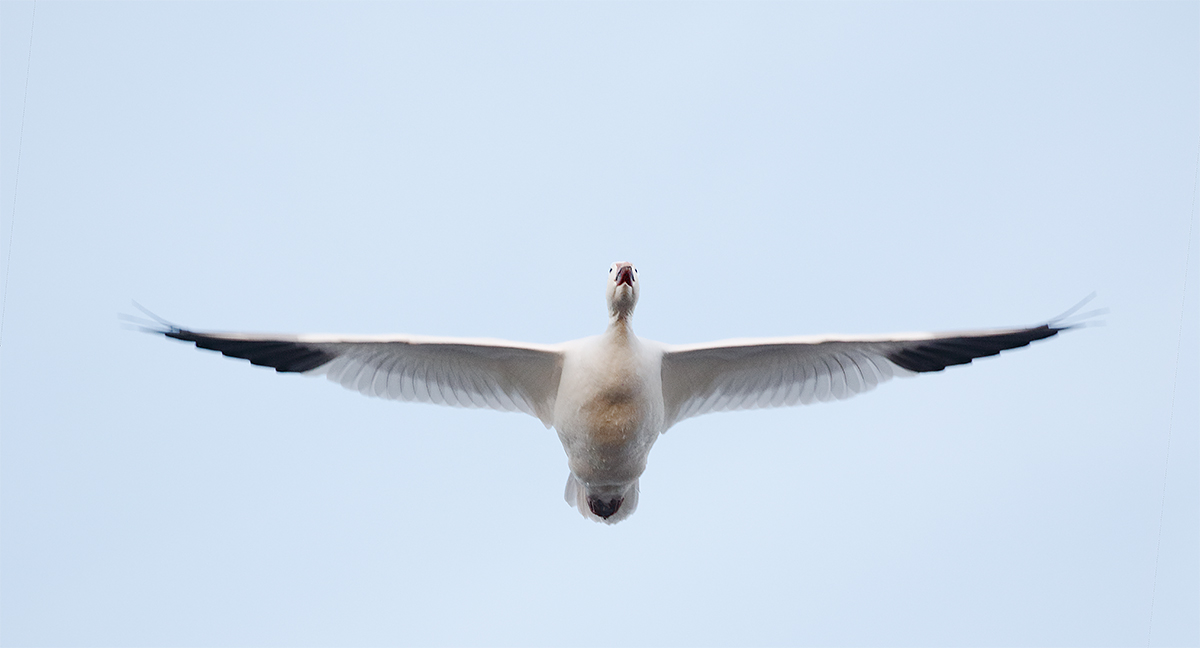
|
|
This image was created on Wednesday morning past with the Canon EF 100-400mm f/4.5-5.6L IS II USM lens (hand held at 400mm) and the Canon EOS 7D Mark II. ISO 1600. Evaluative metering +2 1/3 stops: 1/1000 sec. at f/5.6 in Manual mode.
Central sensor AI Servo/Surround Rear Button AF on the bird’s face was active at the moment of exposure. Click here to see the latest version of the Rear Focus Tutorial. Click on the image to see a larger version.
|
Canon 100-400mm IS L II/7D Mark II: 640 Hand Held for Flight Rocks
I had only limited opportunities to work with the 100-400II. And none really in an excellent flight situation. That said, I did get to use it some on Wednesday morning at one of the crane pools. BTW, both crane pools are in pretty poor shape and the one to the north is completely overgrown. Refuge manager Kevin Cobble explained that unexpected but welcome rain left both pools too muddy to be plowed and disked. In addition, we have had winds from the NW every morning since I arrived. The cranes take off to the west without offering any good flight photography chances.
Hand holding the 100-400 II will take a bit of getting used to as it does not balance as nicely as the original one; I find it a bit awkward as I did the Canon EF 70-300mm f/4-5.6L IS USM lens. I am sure that folks who own and use the new 100-400 will get used to it quickly. I hope to be one of those. The lens trend lately is lighter and lighter and the 7D II drives the whole shooting match….
|
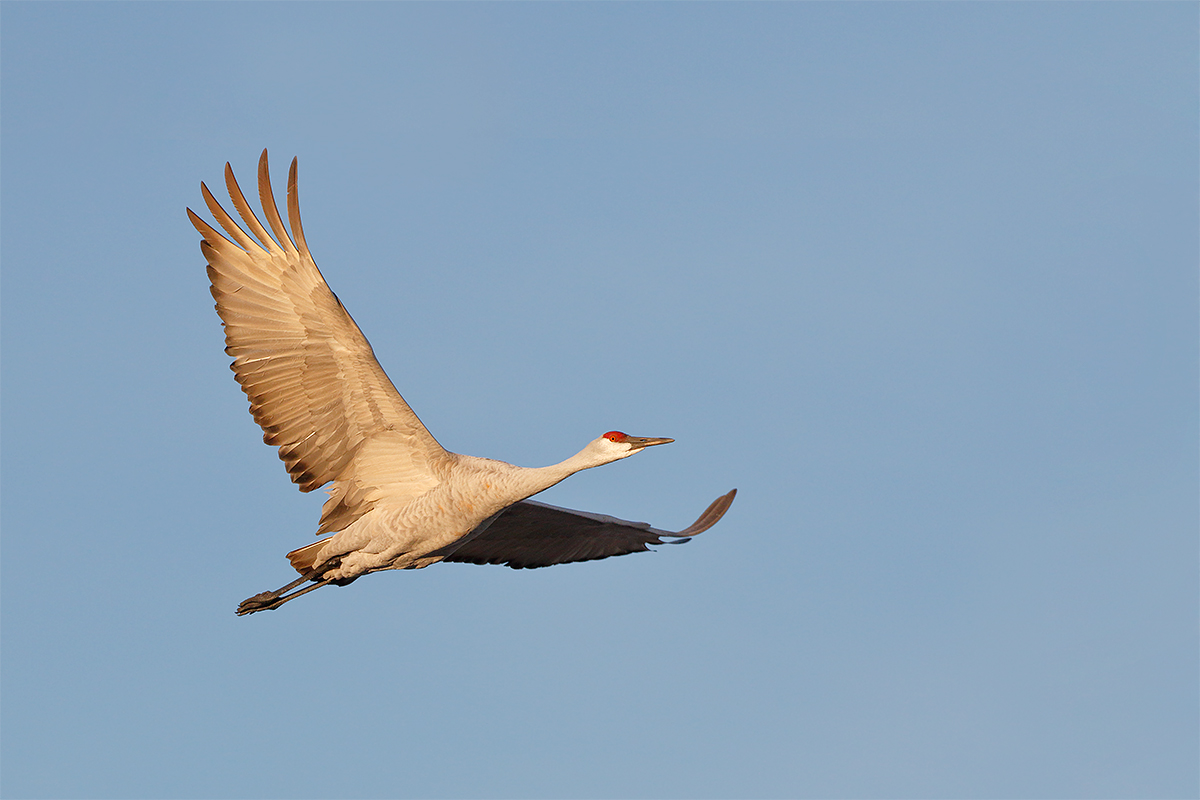
|
|
This image was also created on Wednesday morning past with the Canon EF 100-400mm f/4.5-5.6L IS II USM lens (hand held at 255mm) and the Canon EOS 7D Mark II. ISO 800. Evaluative metering off the yellow grass at zero: 1/2000 sec. at f/7.1 in Manual mode.
Central sensor AI Servo/Surround Rear Button AF on the bird’s butt as originally framed was active at the moment of exposure. Click here to see the latest version of the Rear Focus Tutorial. Click on the image to see a larger version.
|
Several Important Things to Note
1: 7D Mark II AF is indeed remarkable.
2: Having the ability to zoom out for flight photography.
3: The new Canon EF 100-400mm f/4.5-5.6L IS II USM lens will have two primary uses:
a: hanging on a Black Rapid RS-7 strap as an auxiliary intermediate flight lens for folks toting big glass.
b: as the main lens of folks who can not afford or carry one of the super-telephotos.
4: The Canon EF 100-400mm f/4.5-5.6L IS II USM lens in combination with the Canon EOS 7D Mark II will further revolutionize bird photography opening up a new world to both beginning bird photographers and birders curious about photographing birds.
|
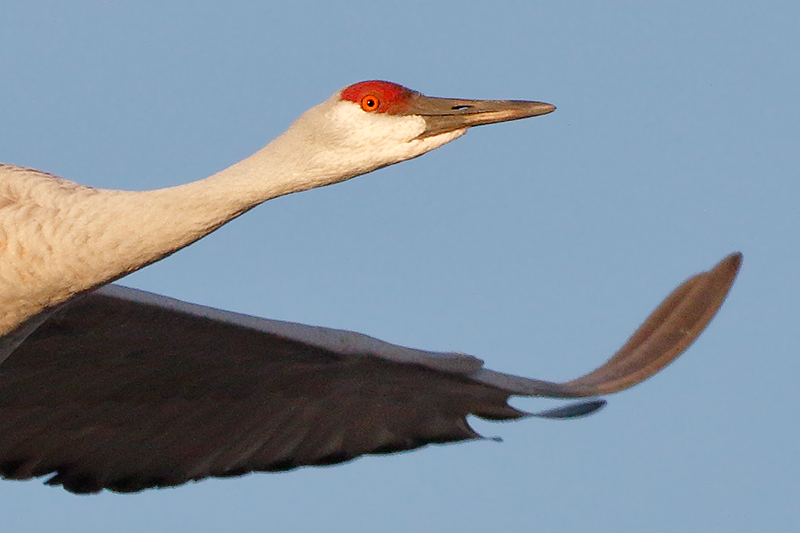
|
|
This sharpened JPEG represents a 200% view of the optimized image. Amazingly, the optimized image that opened this blog post is a fairly substantial crop. See more below.
|
Whaddy Think?
Considering that the optimized image was a decent crop I would say that both sharpness and image quality are astoundingly good. Background noise was smoothed with a small dose of Filter > Blur > Surface Blur. In addition I did some Eye Doctor work and sharpened the face only with a contrast mask. The subject bird was moved down and back in the frame using techniques from APTATS II and clean-up was done using techniques from APTATS II and Denise Ippolito’s protective cloning on a layer techniques. See more below.
|
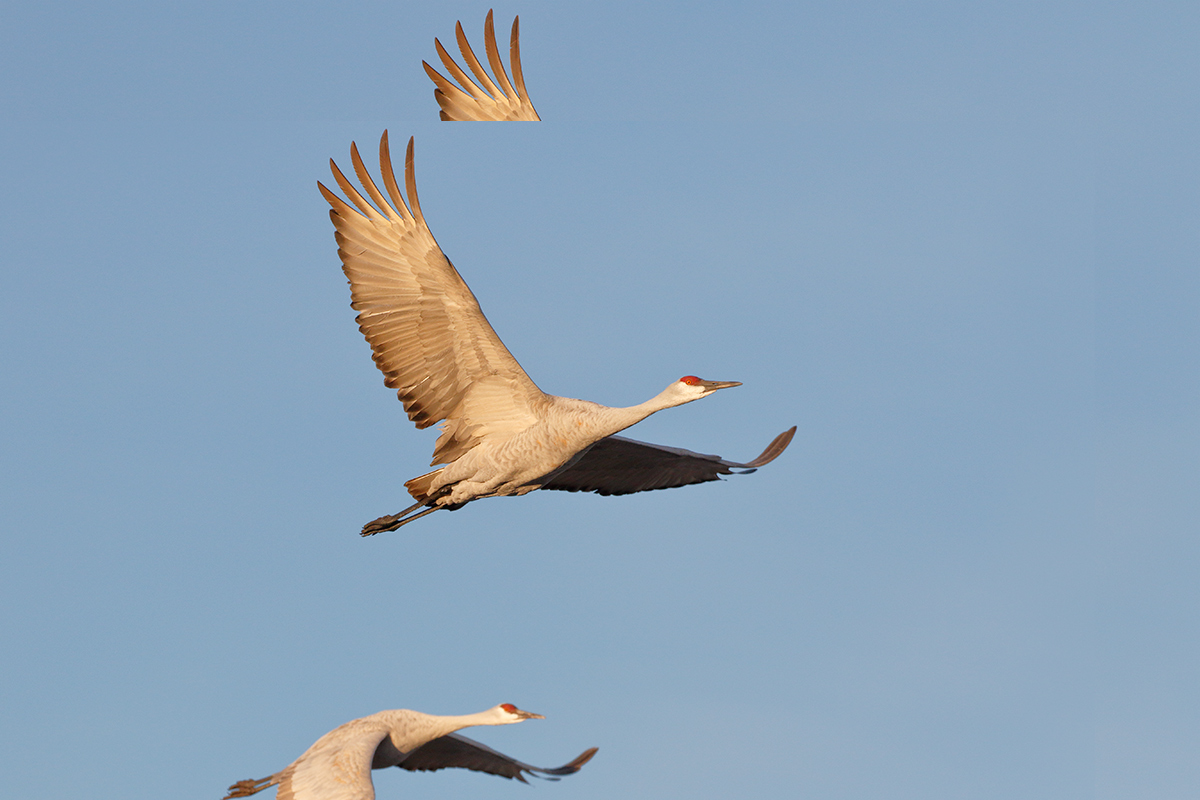
|
|
This is an in-progress JPEG. It shows where I was at after moving the bird down and back in the frame.
|
Digital Basics
Everything that I did to optimize today’s image is covered in detail in my Digital Basics File–written in my easy-to-follow, easy-to-understand style. Are you tired of making your images look worse in Photoshop? Digital Basics File is an instructional PDF that is sent via e-mail. It includes my complete digital workflow, dozens of great Photoshop tips (including the Surface Blur settings as taught to me by Denise Ippolito), details on using all of my image clean-up tools, the use of Contrast Masks, several different ways of expanding and filling in canvas, all of my time-saving Keyboard Shortcuts, Quick Masking, Layer Masking, and NIK Color Efex Pro basics, Contrast Masks, Digital Eye Doctor techniques, using Gaussian Blurs, Tim Grey Dodge and Burn, a variety of ways to make selections, how to create time-saving actions, and tons more.
APTATS I & II
Learn the details of advanced Quick Masking techniques in APTATS I. Learn Advanced Layer Masking Techniques in APTATS II. Mention this blog post and apply a $5 discount to either with phone orders only. Buy both APTATS I and APTATS II and we will be glad to apply at $15 discount with phone orders only. Please call Jim or Jennifer at 863-692-0906 weekdays to order.
The Bosque Site Guide
All BAA Site Guides are designed so that with a bit of study you can show up at a great place and know exactly where to be at what time on what wind and in what lighting conditions. With a Site Guide on your laptop you will feel like a 20-year veteran even on your first visit. Site Guides are the next best thing to being on an IPT. If you plan on visiting the refuge it would be foolish to make the trip without having this guide in hand. Why spend money on gear and travel and then spend days stumbling around in the wrong spots? If you have visited previously, and are still unsure of where you should be at this time of day with that wind, this guide will prove invaluable to you as well.
You can order yours here or check out all of our site guides here.
Canon Telephoto Lens Specifications, Info, and Links; Bookmark This Page!
I have added the 100-400II to the chart here. Bookmark this page and consult it often as it makes comparing different lenses an easy chore. The chart includes weight in both pounds and kilograms, MFDs in feet and inches and in meters, magnification, filter size, and the year of introduction.
IPT Updates
Would you like to visit some of the great bird photography locations on the planet? Would you like to learn from the best? Click here and join us.
|
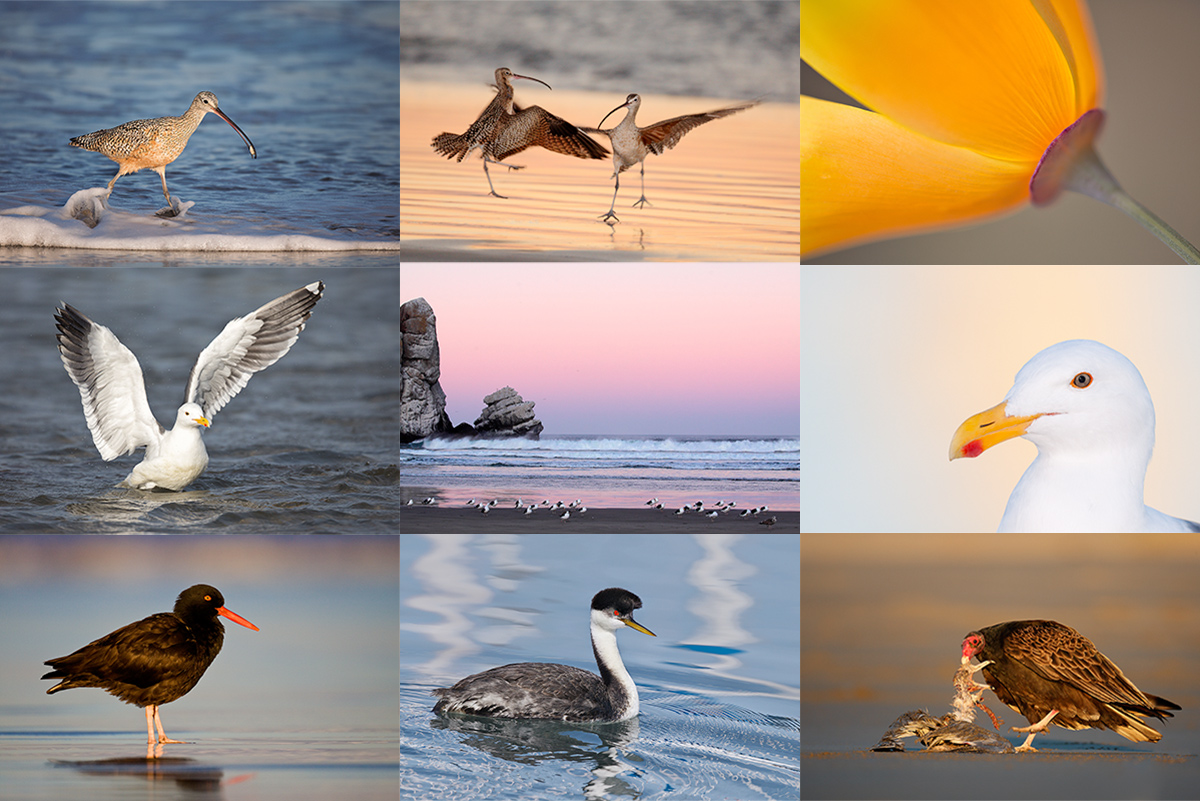
|
|
Morro Bay offers a wealth of very attractive natural history subjects in a variety of attractive settings.
|
2015 Morro Bay 5-DAY BIRDS AS ART Instructional Photo-Tour (IPT): MAR 14 thru MAR 18, 2015: $1999 (Limit: 8/Openings: 8.)
Meet and Greet after dinner on your own at 8:00pm on MAR 13.
Join me in one of the most beautiful and scenic places on the planet to photograph a large variety of birds of the sea and shore. As above, the star of the show will be Long-billed Curlew. There will be lots of Marbled Godwits and Willets as well as lots of the smaller shorebird species. Black Oystercatcher is likely and we should get to photograph large flocks of Western Sandpipers in flight over the bay. With any luck we should enjoy some great sunrise and sunset photography. There are lots of gulls including Western, California, and Mew. There is one good location where we should get to photograph Western, Clarke’s, Eared, and Pied-billed Grebe, Lesser Scaup, and Common Loon. We may get to photograph some passerines including Anna’s Hummingbird, Brewer’s Blackbird, and White-crowned Sparrow. And we have a chance for several species of raptors. Yikes, I almost forgot California Poppy. And California Ground Squirrel. Sea Otters are also possible.
This IPT will include five 3 1/2 hour morning photo sessions, five 2 1/2 hour afternoon sessions, five lunches, after-lunch image review and Photoshop sessions, and of course tons of great in-the-field instruction and photographic instruction. To ensure early starts, breakfasts will be your responsibility.
A $499 non-refundable deposit is required to hold your slot for this IPT. You can send a check (made out to “Arthur Morris) to use at BIRDS AS ART, PO Box 7245, Indian Lake Estates, FL, 33855. Or call Jim or Jennifer at the office with a credit card at 863-692-0906. Your balance, payable only by check, will be due on 12/1//2014. If the trip fills, we will be glad to apply a credit applicable to a future IPT for the full amount less a $100 processing fee. If we do not receive your check for the balance on or before the due date we will try to fill your spot from the waiting list. If your spot is filled, you will lose your deposit. If not, you can secure your spot by paying your balance. Please print, complete, and sign the form that is linked to here and shoot it to us along with your deposit check. If you register by phone, please print, complete and sign the form as noted above and either mail it to us or e-mail the scan. If you have any questions, please feel free to contact me via e-mail.
See lots more Morro Bay images here.
Facebook
Be sure to like and follow BAA on Facebook by clicking on the logo link upper right. Tanks a stack!
Support the BAA Blog. Support the BAA Bulletins: Shop B&H here!
We want and need to keep providing you with the latest free information, photography and Photoshop lessons, and all manner of related information. Show your appreciation by making your purchases immediately after clicking on any of our B&H or Amazon Affiliate links in this blog post. Remember, B&H ain’t just photography!
…..
Amazon.com
Those who prefer to support BAA by shopping with Amazon may use this link:
Amazon Canada
Many kind folks from north of the border, eh, have e-mailed stating that they would love to help us out by using one of our affiliate links but that living in Canada and doing so presents numerous problems. Now, they can help us out by using our Amazon Canada affiliate link by starting their searches by clicking here. Many thanks to those who have written.
Typos
In all blog posts and Bulletins, feel free to e-mail or to leave a comment regarding any typos or errors. Just be right :).
November 19th, 2014 The Streak Continues: 354
On Tuesday we enjoyed fire in the mist conditions at sunrise. Learn more below. The crew was thrilled to see this amazing display despite the fact that the birds at the time were scarcer than the proverbial hen’s teeth. By 1:00pm, we had finished shooting all the footage for the 7-segment “Bird Photography” video project that is being created by the Canon Digital Learning Center. Again we worked long and hard. Everyone in the crew was as nice as could be and is incredibly professional. And that goes double for project director/producer Jem Schofield who spent another day trying to get me to behave. It was great also to have Rudy Winston along as the project advisor; his help and guidance were invaluable.
More and more cranes are using the crane pools each day. The birds were right next to the road until a train went by and scared all the birds to the far side of the pond. This blog post, the 354th in a row, took about 2 hours to prepare. It was published from my hotel room in Socorro, NM at 3:51am.
E-mail Problems
After spending more than 1 1/2 hours on the phone with ATT technical help and missing out on an afternoon photography session, I was able to send and receive e-mails. Apple Mail is, however, still acting quite finicky….
Fire in the Mist Fizzles…
Though conditions seemed perfect on Monday morning–it was a toasty 14 degrees at 6:00am yesterday, the mist dissipated as it got closer to sunrise. My prediction was close but no cigar.
Please Help Support My Work on the BAA Blog
Thanks a Stack! October was a Great Month.
The last six weeks have been quite rewarding month with more and more folks making it a habit to use my B&H links especially for their major gear purchases. It is great to feel appreciated. Thanks a stack to all who used our links for purchases large and small.
To show your appreciation for my efforts here, we ask, as always, that you use our the B&H and Amazon affiliate links on the right side of the blog for all of your purchases. B&H Is recommended for you major photography gear purchases, Amazon for your household, entertainment, and general purpose stuff. Please check the availability of all photographic accessories in the BIRDS AS ART Online Store, especially Gitzo tripods, Wimberley tripod heads, and the like. We sell only what I have used, have tested, and can depend on. We will not sell you junk. We know what you need to make creating great images easy and fun. And we are always glad to answer your gear questions via e-mail.
I would of course appreciate your using our B&H affiliate links for all of your major gear, video, and electronic purchases. For the photographic stuff mentioned in the paragraph above we, meaning BAA, would of course greatly appreciate your business. Here is a huge thank you to the many who have been using our links on a regular basis and visiting the BAA Online store as well.


|
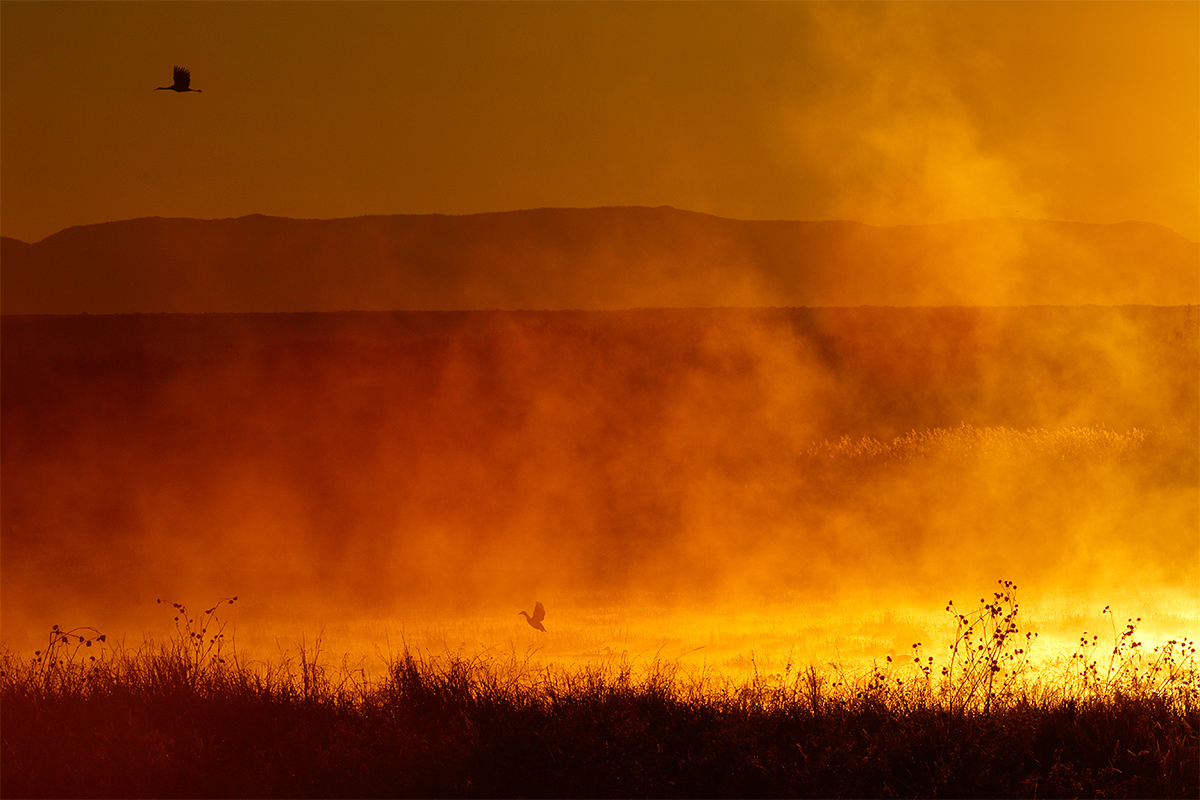
|
|
This image was created on Tuesday, November 18, 2014 at at 6:54am at Bosque del Apache NWR, San Antonio, NM. I used the Gitzo 3532 LS carbon fiber tripod), the Mongoose M3.6 head, the Canon EF 200-400mm f/4L IS USM lens with Internal 1.4x Extender (at 219mm), and the Canon EOS 7D Mark II . ISO 400. Evaluative metering -1 1/3 stops as framed: 1/800 sec. at f/25 in Manual mode.
65-Point Automatic Selection/Rear Focus AF on the catkins lower right, release, and recompose. Click here to see the latest version of the Rear Focus Tutorial. Click on the image to see a larger version.
Fire in the Mist: A Day Late, But Not a Dollar Short
|
What Can I Say?
In Monday’s blog post I mentioned that conditions looked good for fire in the mist that morning. That prediction was a near miss. Tuesday, the second consecutive 14 degree morning, made me a genius after the fact. There were more than 100 photographers at the refuge. At a minimum, they owned more than half a million dollars of photography gear, that a conservative estimate. There was several who lead photographic tours, and several of those are presenting at the Festival of the Cranes. Guess how many folks were in the right spot for Tuesday morning’s spectacular fire in the mist display? That would be two. Me first, followed by an old student, Carl Kling. I am not sure if Carl figured it out on his own or if he saw me and knew that as usual the best place to be was right next to me. He was smiling.
From where I sit, it is ironic that the Bosque Site Guide explains fire in the mist, when to expect it, and how to get yourself in the right spot. In addition, most folks simply do not understand how to juxtapose themselves to the light in order to maximize their photographic opportunities. The best way to learn to do that is to join me on an IPT.
This morning’s proceedings reminded me of a guy a few years ago who wrote asking about a Bosque IPT. He stated that he would do anything to get some fire in the mist. He considered joining the IPT, but passed on the opportunity explaining that he did not need me to learn to make great images at Bosque. The end result, Denise and our group got some of the best ever fire in the mist stuff on the first IPT morning. The guy? He was in the wrong spot and got nothing.
The Image Optimization
In the original image, there were three flying cranes just right of center. I eliminated two of them along with several blackbirds with the Patch Tool, and used a Quick Mask to move the crane that you see well forward in the frame to improve the compositional balance. As I was not able to match the tonality of the sky perfectly, I added a Regular Layer Mask and, working large, painted away the mismatched sky. Then I selected the duck with its wings raised with the Quick Selection Tool and darkened it by pulling down the curve.
Digital Basics
Everything that I did to optimize today’s image is covered in detail in my Digital Basics File–written in my easy-to-follow, easy-to-understand style. Are you tired of making your images look worse in Photoshop? Digital Basics File is an instructional PDF that is sent via e-mail. It includes my complete digital workflow, dozens of great Photoshop tips (including the Surface Blur settings as taught to me by Denise Ippolito), details on using all of my image clean-up tools, the use of Contrast Masks, several different ways of expanding and filling in canvas, all of my time-saving Keyboard Shortcuts, Quick Masking, Layer Masking, and NIK Color Efex Pro basics, Contrast Masks, Digital Eye Doctor techniques, using Gaussian Blurs, Tim Grey Dodge and Burn, a variety of ways to make selections, how to create time-saving actions, and tons more.
APTATS I & II
Learn the details of advanced Quick Masking techniques in APTATS I. Learn Advanced Layer Masking Techniques in APTATS II. Mention this blog post and apply a $5 discount to either with phone orders only. Buy both APTATS I and APTATS II and we will be glad to apply at $15 discount with phone orders only. Please call Jim or Jennifer at 863-692-0906 weekdays to order.
The Bosque Site Guide
All BAA Site Guides are designed so that with a bit of study you can show up at a great place and know exactly where to be at what time on what wind and in what lighting conditions. With a Site Guide on your laptop you will feel like a 20-year veteran even on your first visit. Site Guides are the next best thing to being on an IPT. If you plan on visiting the refuge it would be foolish to make the trip without having this guide in hand. Why spend money on gear and travel and then spend days stumbling around in the wrong spots? If you have visited previously, and are still unsure of where you should be at this time of day with that wind, this guide will prove invaluable to you as well.
You can order yours here or check out all of our site guides here.
Canon Telephoto Lens Specifications, Info, and Links; Bookmark This Page!
I have added the 100-400II to the chart here. Bookmark this page and consult it often as it makes comparing different lenses and easy chore. The chart includes weight in both pounds and kilograms, MFDs in feet and inches and in meters, magnification, filter size, and the year of introduction.
IPT Updates
Would you like to visit some of the great bird photography locations on the planet? Would you like to learn from the best? Click here and join us.
|

|
|
Morro Bay offers a wealth of very attractive natural history subjects in a variety of attractive settings.
|
2015 Morro Bay 5-DAY BIRDS AS ART Instructional Photo-Tour (IPT): MAR 14 thru MAR 18, 2015: $1999 (Limit: 8/Openings: 8.)
Meet and Greet after dinner on your own at 8:00pm on MAR 13.
Join me in one of the most beautiful and scenic places on the planet to photograph a large variety of birds of the sea and shore. As above, the star of the show will be Long-billed Curlew. There will be lots of Marbled Godwits and Willets as well as lots of the smaller shorebird species. Black Oystercatcher is likely and we should get to photograph large flocks of Western Sandpipers in flight over the bay. With any luck we should enjoy some great sunrise and sunset photography. There are lots of gulls including Western, California, and Mew. There is one good location where we should get to photograph Western, Clarke’s, Eared, and Pied-billed Grebe, Lesser Scaup, and Common Loon. We may get to photograph some passerines including Anna’s Hummingbird, Brewer’s Blackbird, and White-crowned Sparrow. And we have a chance for several species of raptors. Yikes, I almost forgot California Poppy. And California Ground Squirrel. Sea Otters are also possible.
This IPT will include five 3 1/2 hour morning photo sessions, five 2 1/2 hour afternoon sessions, five lunches, after-lunch image review and Photoshop sessions, and of course tons of great in-the-field instruction and photographic instruction. To ensure early starts, breakfasts will be your responsibility.
A $499 non-refundable deposit is required to hold your slot for this IPT. You can send a check (made out to “Arthur Morris) to use at BIRDS AS ART, PO Box 7245, Indian Lake Estates, FL, 33855. Or call Jim or Jennifer at the office with a credit card at 863-692-0906. Your balance, payable only by check, will be due on 12/1//2014. If the trip fills, we will be glad to apply a credit applicable to a future IPT for the full amount less a $100 processing fee. If we do not receive your check for the balance on or before the due date we will try to fill your spot from the waiting list. If your spot is filled, you will lose your deposit. If not, you can secure your spot by paying your balance. Please print, complete, and sign the form that is linked to here and shoot it to us along with your deposit check. If you register by phone, please print, complete and sign the form as noted above and either mail it to us or e-mail the scan. If you have any questions, please feel free to contact me via e-mail.
See lots more Morro Bay images here.
Facebook
Be sure to like and follow BAA on Facebook by clicking on the logo link upper right. Tanks a stack!
Support the BAA Blog. Support the BAA Bulletins: Shop B&H here!
We want and need to keep providing you with the latest free information, photography and Photoshop lessons, and all manner of related information. Show your appreciation by making your purchases immediately after clicking on any of our B&H or Amazon Affiliate links in this blog post. Remember, B&H ain’t just photography!
…..
Amazon.com
Those who prefer to support BAA by shopping with Amazon may use this link:
Amazon Canada
Many kind folks from north of the border, eh, have e-mailed stating that they would love to help us out by using one of our affiliate links but that living in Canada and doing so presents numerous problems. Now, they can help us out by using our Amazon Canada affiliate link by starting their searches by clicking here. Many thanks to those who have written.
Typos
In all blog posts and Bulletins, feel free to e-mail or to leave a comment regarding any typos or errors. Just be right :).
November 18th, 2014 The Streak Continues: 353
On Monday, day one of the “Bird Photography” video project that is being created by the Canon Digital Learning Center, everyone worked long and hard to complete six of the needed seven educational segments. As we were concentrating on creating educational content and getting it on tape, several decent photographic opportunities needed to be bypassed; when we returned to the refuge at about 1:30pm there were about 20,000 white geese in the main impoundment with dozens every minute braking in flight and landing right next to the road into the perfect southwest wind. They were so close to the photographers that you could have killed them with a hand held 70-200 and a 1.4X III TC (or with a 7D II). It killed me to drive by that situation as south winds are so rare at Bosque, but a deal is a deal and we needed to create three more educational segments that afternoon. Jeez, I almost forgot to mention that lots of single Snow and Ross’s Geese were floating in perfectly still blue water along with their mirror-image reflections…. As I say, you gotta love it.
As part of the deal, the video and sound crew will follow me around on Tuesday morning while I visit my favorite early morning spots and actually getting to do some serious bird photography. Both video cameras will be hand held and most of what we create tomorrow will be done in an over-the shoulder, documentary style. Once the light gets too harsh for good photography we will create the seventh and final segment, “What’s in the Gear Bag?” We have affectionately been referring to that as “The Junk in the Trunk.”
Everyone in the crew is as nice as could be and is incredibly professional. And that goes double for project director Jem Schofield whose most difficult task has been keeping me in line!
My plan for this morning is to use the 100-400 II/7D Mark II combo as much as possible, and I hope, of course, to be sharing some more 100-400 II images with y’all here soon. This blog post, the 353rd in a row, took about 2 hours to prepare. It was published from my hotel room in Socorro, NM at 3:51am, same as yesterday.
E-mail Problems
Please be aware that I am having att e-mail problems and at present am not able to send or receive e-mails at my samandmayasgrandpa address. In addition, I am unable to access my ATT via webmail. I will be calling them after we wrap things up this afternoon.
Fire in the Mist Fizzles…
Though conditions seemed perfect on Monday morning–it was a toasty 14 degrees at 6:00am yesterday, the mist dissipated as it got closer to sunrise. My prediction was close but no cigar.
Please Help Support My Work on the BAA Blog
Thanks a Stack! October was a Great Month.
The last six weeks have been quite rewarding month with more and more folks making it a habit to use my B&H links especially for their major gear purchases. It is great to feel appreciated. Thanks a stack to all who used our links for purchases large and small.
To show your appreciation for my efforts here, we ask, as always, that you use our the B&H and Amazon affiliate links on the right side of the blog for all of your purchases. B&H Is recommended for you major photography gear purchases, Amazon for your household, entertainment, and general purpose stuff. Please check the availability of all photographic accessories in the BIRDS AS ART Online Store, especially Gitzo tripods, Wimberley tripod heads, and the like. We sell only what I have used, have tested, and can depend on. We will not sell you junk. We know what you need to make creating great images easy and fun. And we are always glad to answer your gear questions via e-mail.
I would of course appreciate your using our B&H affiliate links for all of your major gear, video, and electronic purchases. For the photographic stuff mentioned in the paragraph above we, meaning BAA, would of course greatly appreciate your business. Here is a huge thank you to the many who have been using our links on a regular basis and visiting the BAA Online store as well.


If what you’ve learned here on my blog about the Canon EOS-7D Mark II has inspired you to purchase this great new camera body, please consider using the logo link above to support our efforts here in bringing you the latest, greatest educational materials on daily basis.
|
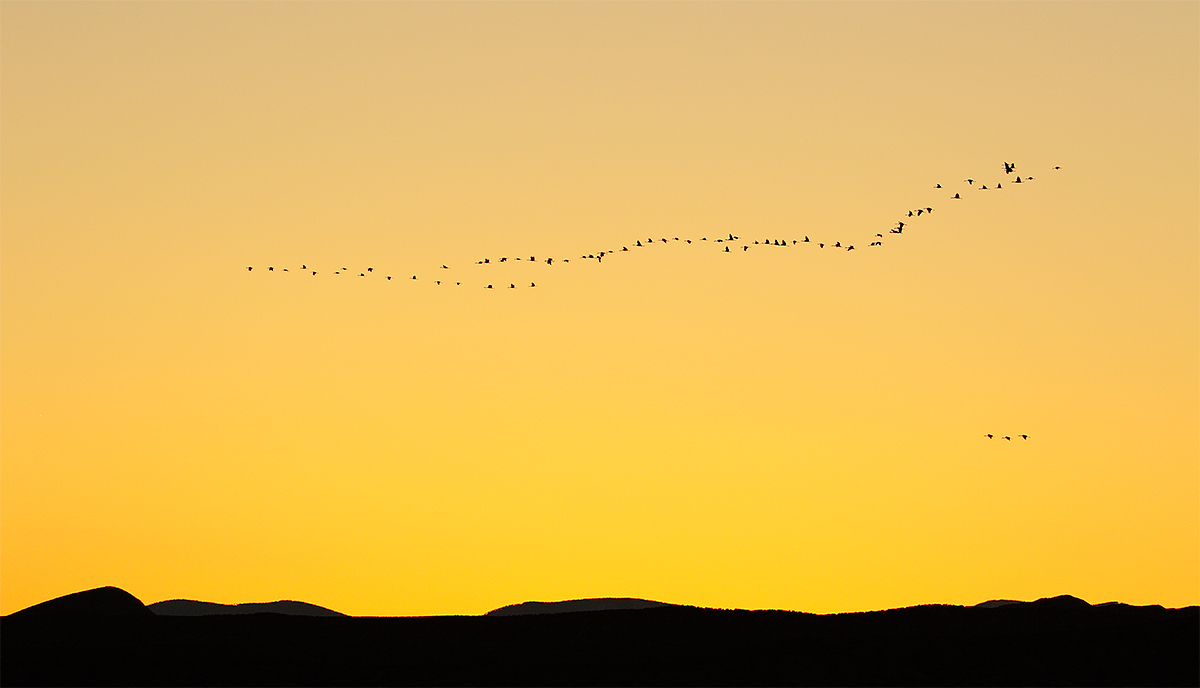
|
|
This image was created on the late afternoon of November 17th while working on the seven-segment “Bird Photography” project that is being created by the Canon Digital Learning Center. I used a pre-production beta version of the new Canon EF 100-400mm f/4.5-5.6L IS II USM lens, the Canon Extender EF 1.4X III (hand held at 146mm), and the Canon EOS 7D Mark II. ISO 400. Evaluative metering +1 1/3 stops: 1/500 sec. at f/7.1 in Av mode.
Central sensor (by necessity)/AI Servo Expand/Rear Focus AF as framed was active at the moment of exposure. Click here if you missed the Rear Focus Tutorial. Be sure to click on the image to see a larger version.
|
Canon EF 100-400mm f/4.5-5.6L IS II USM Lens/ First Impressions
Thanks to Rudy Winston and the rest of the gang at Canon USA for allowing me to get my hands on a pre-production beta version of the new Canon EF 100-400mm f/4.5-5.6L IS II USM lens. Though a bit heavier than the original 1-4, the version II is a bit smaller, less bulky, and less clunky than its predecessor and with the twist zoom, it handles like a dream. Unlike the 200-400 with Internal Extender, you can zoom throughout the entire focal length range easily with a single twist of the wrist. As we spent pretty much all of the day creating educational comment there was little time for actual bird photography until very late in the day. So I grabbed the new lens, put on my 7D Mark II, and quickly added a 1.4X TC. As you can see from the shooting data, adding the TC was not at all necessary for either of today’s images. But I was very impressed with the speed of initial AF acquisition both with the lens alone and with a 1.4X III TC in place.
|
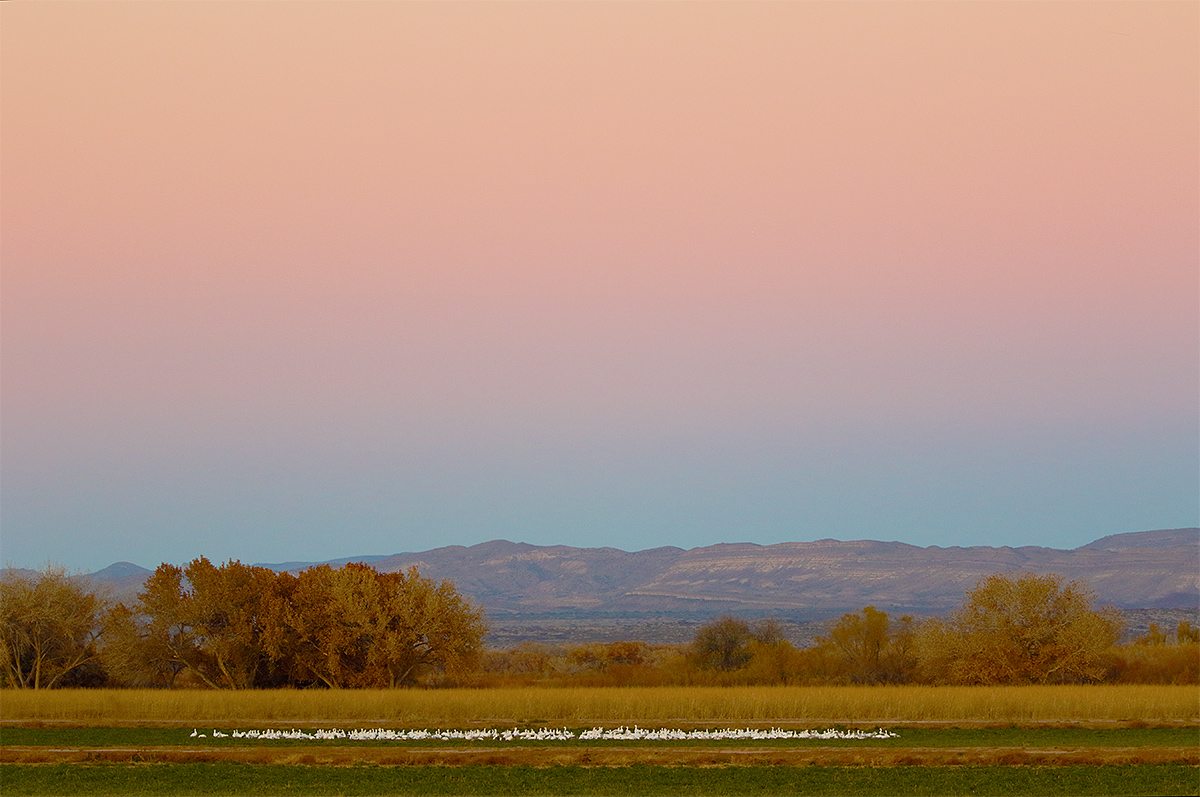
|
|
This image was also created on the late afternoon of November 17th while working on the seven-segment “Bird Photography” project that is being created by the Canon Digital Learning Center. I used a pre-production beta version of the new Canon EF 100-400mm f/4.5-5.6L IS II USM lens, the Canon Extender EF 1.4X III (hand held at 156mm), and the Canon EOS 7D Mark II. ISO 800. Evaluative metering +2/3 stops: 1/60 sec. at f/7.1 in Av mode.
Central sensor (by necessity)/AI Servo Expand/Rear Focus AF on the geese and recompose. Click here if you missed the Rear Focus Tutorial. Be sure to click on the image to see a larger version.
|
A 100-400 II Plus for Hand Holding
The tripod collar, which allows the lens to rotate in a super-smooth manner, is not removable. But the lens foot, to which the lens plate is attached, is detachable. It can be removed by twisting a single large screw. This lightens the weight of the rig by several ounces making hand holding that much easier. The new lens balances nicely with the 7D Mark II. BTW, the Wimberley P-20 plate is ideal for the 100-400 II as it is for most intermediate telephoto lenses. The flange keeps the plate from rotating. I do not see a big need for a low foot for the new lens.
IPT Updates
Would you like to visit some of the great bird photography locations on the planet? Would you like to learn from the best? Click here and join us.
|
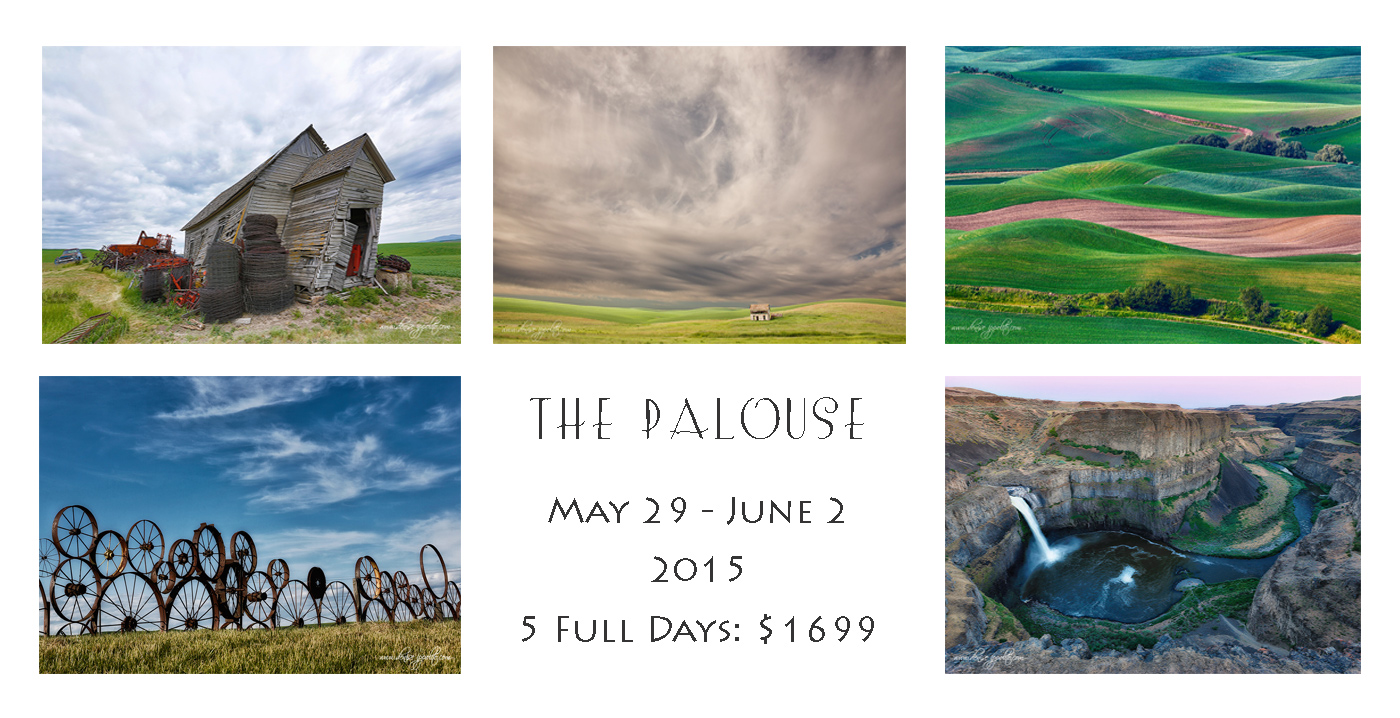
|
|
Card and design by Denise Ippolito. Scroll down here to see lots more of Denise’s Palouse images.
|
Palouse #1. The Palouse A Creative Adventure/BIRDS AS ART Instructional Photo-Tour (IPT)/Eastern Washington State. May 29-June 2, 2015/5 Full Days: $1699/Limit 12 photographers/Openings: 1.
With two recent cancellations, we still have one opening on this long sold out trip. See item next for additional details.
|
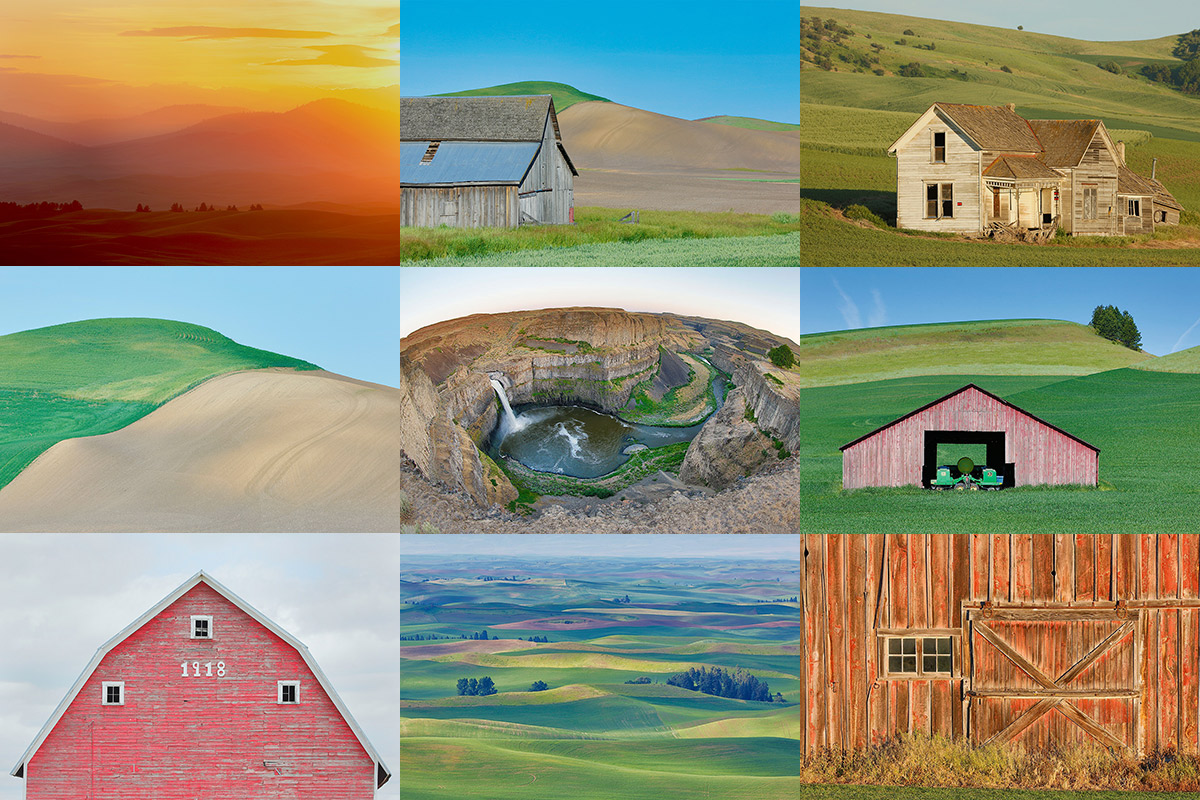
|
|
Card and design by Arthur Morris/BIRDS AS ART.
|
The Palouse A Creative Adventure/BIRDS AS ART Instructional Photo-Tour (IPT)/Eastern Washington State. June 5-9, 2015/5 Full Days: $1699/Limit 12 photographers/Openings 2.
Rolling farmlands provide a magical patchwork of textures and colors, especially when viewed from the top of Steptoe Butte where we will likely enjoy spectacular sunrises and possibly a nice sunset or two. We will photograph grand landscapes and mini-scenics of the rolling hills and farm fields. We will take you to some really neat old abandoned barns and farmhouses in idyllic settings. There is no better way to improve your compositional and image design skills and to develop your creativity than to join us for this trip. Two great leaders: Denise Ippolito and Arthur Morris. Photoshop and image sharing sessions when we have the time and energy…. We get up early and stay out late and the days are long.
After 6 days of back-breaking scouting work in early June 2014 we found all of the iconic locations and, in addition, lots of spectacular new old barns and breath-taking landforms and views. We will teach you what makes one situation prime and another seemingly similar one a waste of your time.
What’s included: In-the-field instruction, guidance, lessons, and inspiration, our newfound but very extensive knowledge of the area, all lunches, motel lobby breakfasts, and Photoshop and image sharing sessions when possible.
You will learn and hone both basic and advanced compositional and image design skills. You will learn to get the right exposure every time. You will learn to develop your creative eye. You will learn the basics of HDR (high dynamic range) photography. You will learn a variety of in-camera creative techniques; Canon 5D Mark III bodies are a plus. And most importantly you will learn to see the situation and to create a variety of top-notch images. Do see both of our blogs for lots more on that in the coming weeks. You will learn how the quality and direction of light combine to determine the success of your images. And–please don’t gasp–we will be working quite a bit with sidelight when creating landscapes. Lastly, we will be touching on infrared photography.
A non-refundable $699 deposit is due now. The balance will be due on January 29, 2015. If you cancel and the trip fills, we will be glad to apply a credit applicable to a future IPT for the full amount less a $100 processing fee. If we do not receive your check for the balance on or before the due date we will try to fill your spot from the waiting list. Whether or not your spot is filled, you will lose your deposit. If not, you can secure your spot by paying your balance.
With the unpredictable nature of the photography business, I have not said this often lately, but it seems quite likely that this one will fill up very quickly. Please let me know via e-mail that you will be joining us. Then you can either call Jim or Jennifer at 863-692-0906 during business hours or send us a check; the latter is preferred.
Please send your deposit check made out to “Arthur Morris” to us at Arthur Morris/BIRDS AS ART, PO Box 7245, Indian Lake Estates, FL, 33855. If you have any questions, please feel free to contact me via e-mail. You can also contact denise via e-mail here
Facebook
Be sure to like and follow BAA on Facebook by clicking on the logo link upper right. Tanks a stack!
Support the BAA Blog. Support the BAA Bulletins: Shop B&H here!
We want and need to keep providing you with the latest free information, photography and Photoshop lessons, and all manner of related information. Show your appreciation by making your purchases immediately after clicking on any of our B&H or Amazon Affiliate links in this blog post. Remember, B&H ain’t just photography!
…..
Amazon.com
Those who prefer to support BAA by shopping with Amazon may use this link:
Amazon Canada
Many kind folks from north of the border, eh, have e-mailed stating that they would love to help us out by using one of our affiliate links but that living in Canada and doing so presents numerous problems. Now, they can help us out by using our Amazon Canada affiliate link by starting their searches by clicking here. Many thanks to those who have written.
Typos
In all blog posts and Bulletins, feel free to e-mail or to leave a comment regarding any typos or errors. Just be right :).
November 17th, 2014 The Streak Continues: 352
On Sunday, we created video only B-roll for the seven-segment “Bird Photography” project that is being created by the Canon Digital Learning Center. The crew is great and having Rudy Winston along is a huge plus. The man knows everything about everything Canon. The audio guys and two grips arrive tonight. More on how we did–not too great overall–in a future blog post. At some point the videos will be online and you will all get to see them, and, hopefully learn a ton. This blog post, the 352nd in a row, took about 1 1/2 hours to prepare. It was published from my hotel room in Socorro, NM at 3:51am.
Fire in the Mist Alert…
With a relatively warm last two days and the temperature this morning at the refuge predicted to be in the low to mid-20s, there is a chance for fire in the mist conditions….
Please Help Support My Work on the BAA Blog
Thanks a Stack! October was a Great Month.
The last six weeks have been quite rewarding month with more and more folks making it a habit to use my B&H links especially for their major gear purchases. It is great to feel appreciated. Thanks a stack to all who used our links for purchases large and small.
To show your appreciation for my efforts here, we ask, as always, that you use our the B&H and Amazon affiliate links on the right side of the blog for all of your purchases. B&H Is recommended for you major photography gear purchases, Amazon for your household, entertainment, and general purpose stuff. Please check the availability of all photographic accessories in the BIRDS AS ART Online Store, especially Gitzo tripods, Wimberley tripod heads, and the like. We sell only what I have used, have tested, and can depend on. We will not sell you junk. We know what you need to make creating great images easy and fun. And we are always glad to answer your gear questions via e-mail.
I would of course appreciate your using our B&H affiliate links for all of your major gear, video, and electronic purchases. For the photographic stuff mentioned in the paragraph above we, meaning BAA, would of course greatly appreciate your business. Here is a huge thank you to the many who have been using our links on a regular basis and visiting the BAA Online store as well.


If what you’ve learned here on my blog about the Canon EOS-7D Mark II has inspired you to purchase this great new camera body, please consider using the logo link above to support our efforts here in bringing you the latest, greatest educational materials on a daily basis.
|
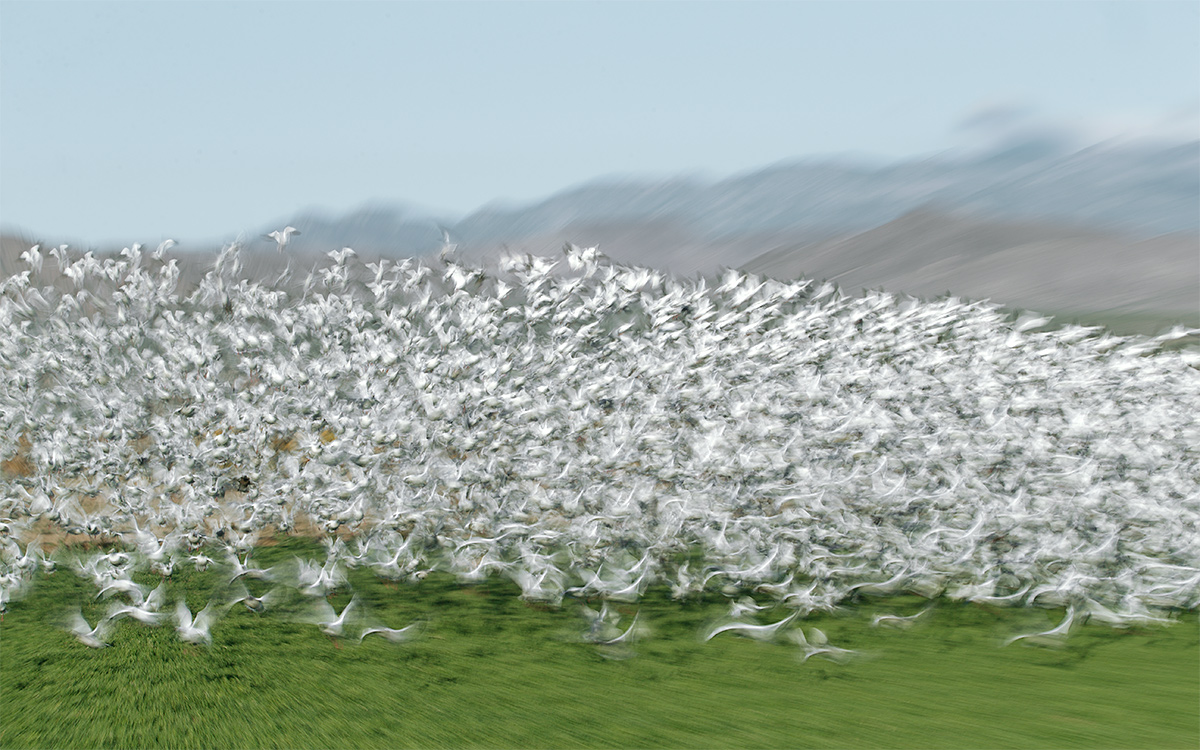
|
|
This image was created with the Canon EF 70-200mm f/2.8L IS II lens , the the Canon Extender EF 2X III (hand held at 185mm), and the Canon EOS-1D X. ISO 50. Evaluative metering + 1/3 stop: 1/13 sec. at f/11 as framed was a slight underexposure due to the blur darkening effect.
Two sensors down from the central sensor/AI Servo Surround/Rear Focus AF as framed was active at the moment of exposure. Click here if you missed the Rear Focus Tutorial. Be sure to click on the image to see a larger version.
|
It’s Not Like I’m Saying That a Blastoff is Imminent…
I was at the farm fields on Saturday morning chatting with Richard Russ and a friend of his. Richard had been on a San Diego IPT a few years back, gotten sick after the first day, and missed the rest of the workshop. There was a nice group of geese right in front of us and we were all doing flight photography–see the first two images in yesterday’s blog post here if you missed it–but conditions were not great; the wind was from the north and the birds were a good ways off.
I said to them, “You guys are not set up for the money shot.” “Whaddya mean?” “This,” I said, “holding up the rig on my right shoulder supported by a Black Rapid Strap. “70-200 II, 2X III, 1D X, and a 3-Stop (0.9) Singh-Ray Neutral Density Filter. At ISO 50 the 3-stop ND has me down to 1/13 sec. at only f/11 (in Manual mode). Realizing that the “money shot” I was talking about was a pleasing blastoff blur, they each headed right to their vehicle.
“No rush,” I said, “It’s not like I’m saying that a blastoff is imminent.” And of course, the instant the word “imminent” was out of my mouth there was a truly spectacular blastoff with the birds flying right at me. Luck comes to those who are prepared.
PS
The coyote did it!
Singh-Ray Filters
Singh-Ray filters have been used by the world’s top photographers for many decades. Who? Art Wolfe, Tony Sweet, John Barclay, my new friend Ian Plant, my BFF and oft-business partner, Denise Ippolito, Nevada Weir, Brenda Tharp, Cole Thompson, Chuck Kimmerle, and the late Galen Rowell among others. Singh-Ray has been and is the name in quality filters. I often use a 77mm warming polarizer set to dark at Bosque to get to a slower shutter speed in too-bright conditions. Toward that end, BIRDS AS ART is working with Singh-Ray to produce a 5-stop Neutral Density filter to to fit the filter drawers of Canon Super-telephoto lenses. Stayed tuned for info on that.
No other filter manufacturer comes close to matching the quality of Singh-Ray’s optical glass that is comparable to that used by NASA. And they continue to pioneer the most innovative products on the market like their ColorCombo polarizer, Vari-ND variable and Mor-Slo 15-stop neutral density filters. When you use their filters, you’ll create better, more dramatic images and, unlike other filters, with absolutely no sacrifice in image quality. All Singh-Ray filters are handcrafted in the USA.
Best News: 10% Discount/Code at checkout: artie10
To shop for a Singh-Ray warming polarizer (for example), click on the logo link below, click on Polarizers/color enhancing on the menu bar, choose LB Warming Polarizer, choose the size and model, add to cart, and then checkout. At checkout, type artie10 into the “Have a coupon? Click here to enter your code” box, and a healthy 10% discount will be applied to your total. In addition to enjoying the world’s best filter at 10% off you will be supporting my efforts here on the blog.

|
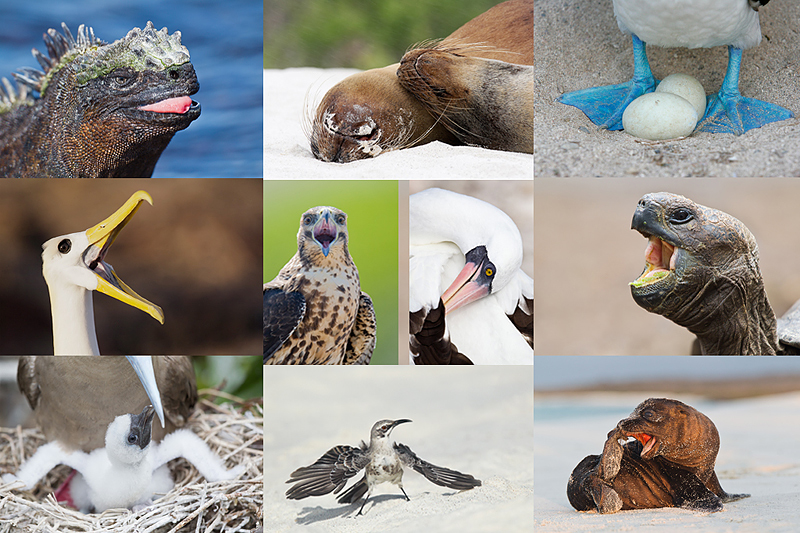
|
|
Do consider joining me for a once in a lifetime trip to the Galapagos archipelago in July, 2015.
|
GALAPAGOS Photo Cruise of a Lifetime IPT/The Complete Galapagos Photographic Experience. July 14-28, 2015 on the boat. 13 FULL and two half-days of photography: $12,499. Limit 14 including the leader:/Openings: 4.
My two-week Galapagos Photo-Cruises are without equal. The world’s best guide, a killer itinerary, a great boat (the Samba), and the best leader with eight Galapagos cruises under his belt. Pre-trip and pre-landing location-specific gear advice. In-the-field photo instruction and guidance. Jeez, I almost forgot: fine dining at sea!
The great spots that we will visit include Tower Island (including Prince Phillips Steps and Darwin Bay), Hood Island (including Punta Suarez, the world’s only nesting site of Waved Albatross, and Gardner Bay)—each of the preceding are world class wildlife photography designations that rank right up there with Antarctica, Africa, and Midway. We will also visit Fernandina, Puerto Ayora for the tortoises, Puerto Egas—James Bay, North Seymour and Isla Lobos for nesting Blue-footed Booby (most years), South Plaza, Floreana, and Urbina Bay, all spectacular in their own right. We visit every great spot on a single trip. Plus tons more. And there will he lots of opportunities to snorkel on sunny mid-days for those like me who wish to partake.
We will be the first boat on each island in the morning and the last boat to leave each island every afternoon. If we are blessed with overcast weather, we will often spend 5-6 hours at the best sites. And as noted above, mid-day snorkeling is an option on most sunny days depending on location. Note: some of the walks are a bit strenuous. Great images are possible on all landings with a hand held 70-200mm lens and a 1.4X teleconverter. I bring a longer lens ashore on most landings as that fits my style. I generally work with either the Canon 300mm f/2.8L IS or the Canon 200-400mm f/4 L IS with Internal Extender.
Do know that there is a NatureScapes Galapagos trip: one week for $8495. Thus, my trip represents a tremendous value; why go all that way and miss half of the great photographic locations?
The Logistics
Fly to Guayacil, Ecuador on July 12, 2015. Travel insurance/rest day: July 13 (We may or may not offer a photo outing on the 13th). Fly to the archipelago on July 14 and board the Samba. Get off the boat on July 28. Fly to Guayacil that afternoon. Fly home on the early morning of July 29 unless you are staying on or going elsewhere (or catching a red-eye flight on the evening of the 28th).
$12,499 includes just about everything: all transfers, guide and park fees, all food on the boat, transfers and ground transportation, your flights to the archipelago, and three nights (double occupancy) in a top notch hotel in Guayacil. If you are good to go, a non-refundable deposit of $5,000 per person is due immediately. The second payment of $4,000 is not due until 11/1/14. The final payment of $3449 per person will be due on 2/1/15. A $200 discount will be applied to each of the balances for couples or friends who register at the same time.
Purchasing travel insurance within 2 weeks of our cashing your deposit check is strongly recommended. On my past two cruises a total of 5 folks were forced to cancel less than one week prior to the trip. My family and I use Travel Insurance Services and strongly recommend that you do the same.
Not included: your round trip airfare from your home to and from Guayacil, beverages on the boat, phone calls, your meals in Guayacil, personal items, and a $600/person cash tip for the crew and the guide—this works out to roughly $40/day to be shared by the 7 folks who will be waiting on us hand and foot every day for two weeks. The service is so wonderful that many folks choose to tip extra.
Please e-mail for the complete itinerary and for additional info and images. Please cut and paste “Galapagos 2015 Info Please) into the Subject line.
IPT Updates
Would you like to visit some of the great bird photography locations on the planet? Would you like to learn from the best? Click here and join us.
Facebook
Be sure to like and follow BAA on Facebook by clicking on the logo link upper right. Tanks a stack!
Support the BAA Blog. Support the BAA Bulletins: Shop B&H here!
We want and need to keep providing you with the latest free information, photography and Photoshop lessons, and all manner of related information. Show your appreciation by making your purchases immediately after clicking on any of our B&H or Amazon Affiliate links in this blog post. Remember, B&H ain’t just photography!
…..
Amazon.com
Those who prefer to support BAA by shopping with Amazon may use this link:
Amazon Canada
Many kind folks from north of the border, eh, have e-mailed stating that they would love to help us out by using one of our affiliate links but that living in Canada and doing so presents numerous problems. Now, they can help us out by using our Amazon Canada affiliate link by starting their searches by clicking here. Many thanks to those who have written.
Typos
In all blog posts and Bulletins, feel free to e-mail or to leave a comment regarding any typos or errors. Just be right :).
November 16th, 2014 The Streak Continues: 351
On Saturday, I photographed at the refuge morning and afternoon. Not too bad. I got lots of rest during the day. Tomorrow we start work on a seven segment “Bird Photography” video project that is being created by the Canon Digital Learning Center. At some point you will all get to see them, and hopefully learn a ton. This blog post, the 351st in a row, took about 2 hours to prepare. It was published from my hotel room in Socorro, NM at 3:31am.
Alas….
I learned from Chuck Westfall that the ET-83D lens hood, the hood for the new Canon EF 100-400mm f/4.5-5.6L IS II USM lens does not fit the old lens and vice versa. It was announced only as a replacement.
Please Help Support My Work on the BAA Blog
Thanks a Stack! October was a Great Month.
October was a very rewarding month. Thanks a stack to all who used our B&H links for purchases large and small.
To show your appreciation for my efforts here, we ask, as always, that you use our the B&H and Amazon affiliate links on the right side of the blog for all of your purchases. B&H Is recommended for you major photography gear purchases, Amazon for your household, entertainment, and general purpose stuff. Please check the availability of all photographic accessories in the BIRDS AS ART Online Store, especially Gitzo tripods, Wimberley tripod heads, and the like. We sell only what I have used, have tested, and can depend on. We will not sell you junk. We know what you need to make creating great images easy and fun. And we are always glad to answer your gear questions via e-mail.
I would of course appreciate your using our B&H affiliate links for all of your major gear, video, and electronic purchases. For the photographic stuff mentioned in the paragraph above we, meaning BAA, would of course greatly appreciate your business. Here is a huge thank you to the many who have been using our links on a regular basis and visiting the BAA Online store as well.


If what you’ve learned here on my blog about the Canon EOS-7D Mark II has inspired you to purchase this great new camera body, please consider using the logo link above to support our efforts here in bringing you the latest, greatest educational materials on daily basis.
Incoming
The geese were feeding in an alfalfa field a good ways from the tour loop road. Even worse, the wind was from the north, not too strong, but from the north. The trick in these situations is to find a bird or two with a mind of its own, that is, not flying and landing in the typical pattern. You need a bit of patience but as long as the wind is not strong, this strategy usually works pretty well.
Exposure for the white geese in full sun will always be very close to ISO 400: 1/2000 sec. at f/8. Since the young geese are a shade darker than their parents I opened up one click of shutter speed to 1/1600 sec. at f/8. I used techniques from APTATS II to move the bird forward a bit and down a bit in the frame. Then I cleaned up the left-over wing tips with the Patch Tool.
Digital Basics
Everything that I did to optimize both of today’s images is covered in detail in my Digital Basics File–written in my easy-to-follow, easy-to-understand style. Are you tired of making your images look worse in Photoshop? Digital Basics File is an instructional PDF that is sent via e-mail. It includes my complete digital workflow, dozens of great Photoshop tips (including the Surface Blur settings as taught to me by Denise Ippolito), details on using all of my image clean-up tools, the use of Contrast Masks, several different ways of expanding and filling in canvas, all of my time-saving Keyboard Shortcuts, Quick Masking, Layer Masking, and NIK Color Efex Pro basics, Contrast Masks, Digital Eye Doctor techniques, using Gaussian Blurs, Tim Grey Dodge and Burn, a variety of ways to make selections, how to create time-saving actions, and tons more.
APTATS I & II
Learn the details of advanced Quick Masking techniques in APTATS I. Learn Advanced Layer Masking Techniques in APTATS II. Mention this blog post and apply a $5 discount to either with phone orders only. Buy both APTATS I and APTATS II and we will be glad to apply at $15 discount with phone orders only. Please call Jim or Jennifer at 863-692-0906 weekdays to order.
|
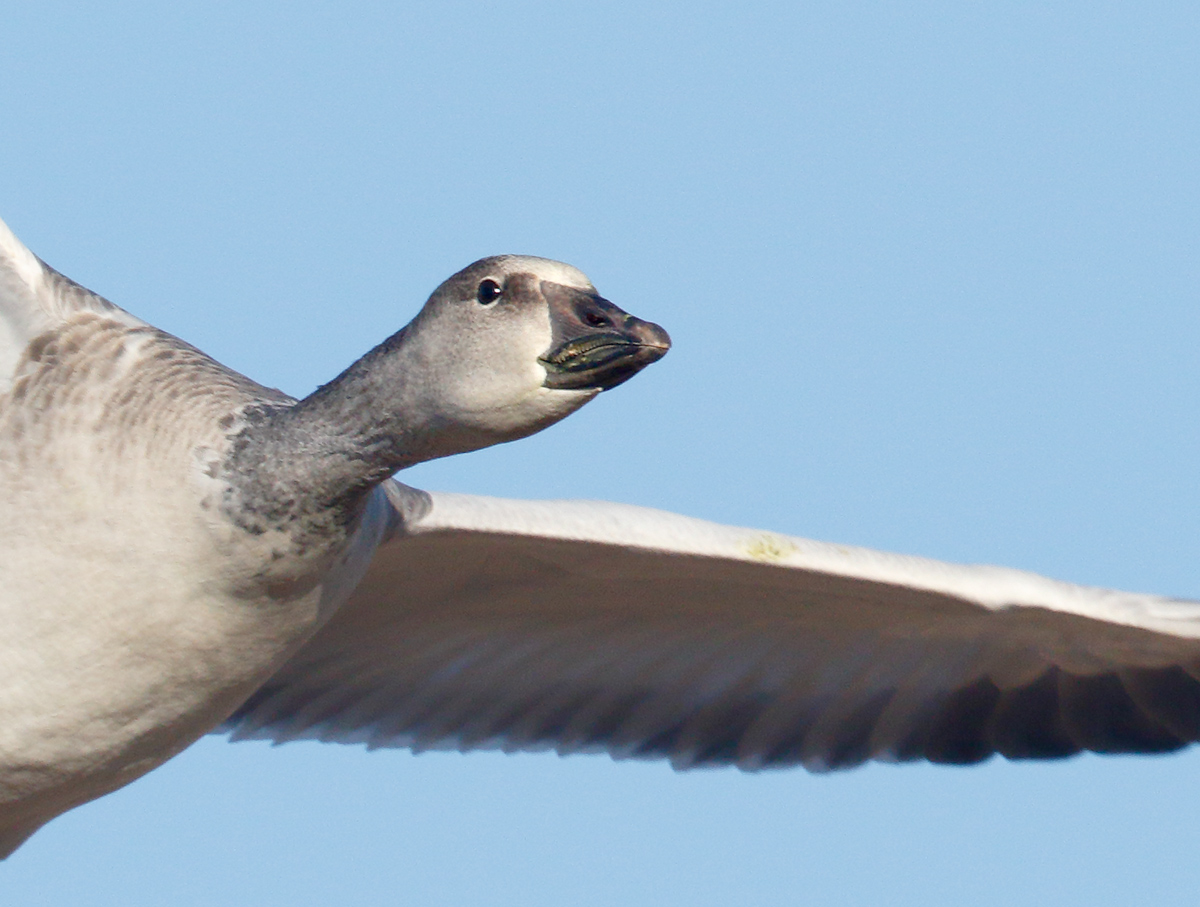
|
|
This JPEG represents an unsharpened 100% view of the optimized image above.
|
7D II AF with the 1.4X III TC
The 600II/1.4X III TC performed superbly with the 7DII. Initial AF acquisition was fast and the tracking was accurate. Unlike previous camera bodies, the AF locks on with a bit of a thud and then does not let go….
Sun Angle
As always at Bosque, the biggest mistake that the average photographer makes on a consistent basis is failing to work on sun angle. Study the two images above and note the absence of almost all shadows. This happens when you work with your shadow pointing pretty much at the subject.
|

|
|
This JPEG represents an unsharpened 100% view of the optimized image above.
|
Your Thoughts?
How would you rate the image sharpness based on the two 100% crops?
|
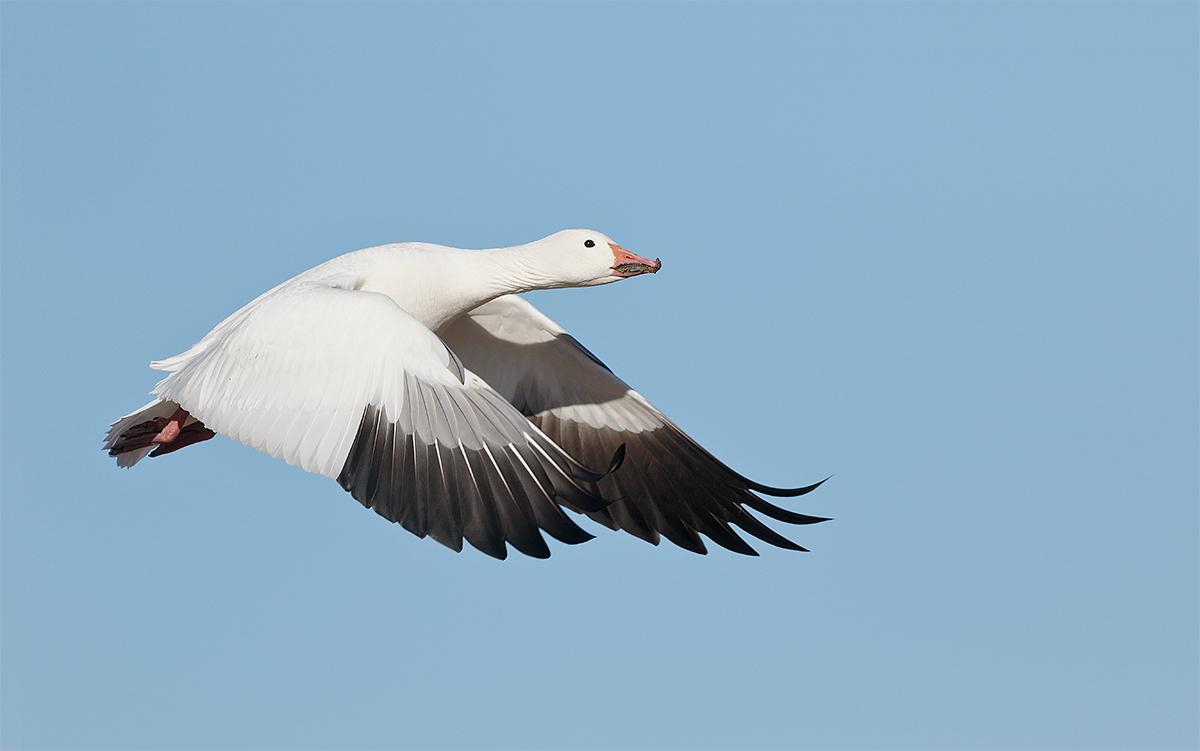
|
|
This image was created at 8:43am on the clear morning of November 15, 2014 at Bosque del Apache NWR< San Antonio, NM. I used hand held Canon EF 300mm f/2.8L IS II USM lens the Canon Extender EF 1.4X III, and the Canon EOS 7D Mark II . ISO 400: 1/6400 sec. at f/4.5 in Manual mode.
Central sensor AI Servo Surround/shutter button AF on the tip of the near wing was active at the moment of exposure. Click on the image to see a larger version.
Image #1: Snow Goose taking off: adult with mud on bill, full downstroke
|
300II/1.4X III/7D II
After one great blast-off–story and image coming soon–I got bored quickly and decided to look for a better situation. I found some geese landing close to the tour loop road, grabbed the 300II/1.4X III/7D II, and sat just above the irrigation ditch so as not to scare the birds. Several folks joined me and as they exited their vehicles I asked them to sit explaining that if they did the birds would most likely begin landing again. They did and the birds did. Best of all, the wind had switched from west north to east northeast: the birds were landing at us. It was pretty much a shooting gallery situation and the 7D II performed admirably with the 1.4X III in place. Most of the 200+ images that I created with the LensAligned/Focus Tuned rig were razor sharp on the birds eye. The soft images were a result of operator error.
Hand holding the 300II with my new lightweight 7DII was a snap. While waiting for another group of birds to land I would rest my left elbow and thus the lens on my left knee. Hand holding makes it easier to get on and frame the birds than working on a tripod.
How Did the Canon EOS-7D Mark II Perform for Flight Photography with the 1.4X III Teleconverter?
Just fine, thank you. It performed amazingly well as I expected. If you are gonna buy one, please scroll up and use my B&H affiliate link :).
Your Favorite?
Which of the 3 images is the best? Be sure to let us know why. I have a clear favorite.
IPT Updates
Would you like to visit some of the great bird photography locations on the planet? Would you like to learn from the best? Click here and join us.
Selling Your Used Photo Gear Through BIRDS AS ART
Selling your used (or like-new) photo gear through the BAA Blog or via a BAA Online Bulletin is a great idea. We charge only a 5% commission. One of the more popular used gear for sale sites charges a minimum of 20% plus assorted fees! Yikes. The minimum item price here is $500 (or less for a $25 fee). If you are interested please e-mail with the words Items for Sale Info Request cut and pasted into the Subject line :). Stuff that is priced fairly–I offer free pricing advice, usually sells in no time flat. In the past few months, we have sold just about everything in sight. Do know that prices on some items like the EOS-1D Mark IV, the EOS-7D, and the original 400mm IS DO lens, have been dropping steadily.
Used Gear Cautions
Though I am not in a position to post images of gear for sale here or elsewhere, prospective buyers are encouraged to request for photos of the gear that they are interested in purchasing via e-mail. Doing so will help to avoid any misunderstandings as to the condition of the gear. Sellers are advised to take care to photograph their used gear with care against clean backgrounds so that the stuff is represented accurately and in the best light; please pardon the pun :).
Canon EF 300mm f/4L IS USM Lens
George Snyder is offering a used Canon EF 300mm f/4L IS USM lens in like new condition for $879. The sale includes the tripod ring, the front and rear lens caps, the tough fabric case, the original box and lens manual, and insured shipping via UPS Ground to US addresses only. Your new gear will be shipped only after your check clears unless other arrangements are made. You can contact George via e-mail or by phone at 715 359-2929. Central time.)
The 300 f/4 is a great starter lens for bird photography, a great, lightweight flight lens, and with its great minimum focusing distance, a fine macro lens for medium sized subjects like flowers and frogs. It will be just fine with a 1.4X TC with the new 7D II….
Used Canon EF 500mm f/4L IS (Image Stabilizer) USM Lens
Kathleen Graff is offering a used Canon EF 500mm f/4L IS (Image Stabilizer) USM lens in very good to excellent condition for $4799. The sale includes the front leather hood, the rear dust cap, the original case with keys, a Lens Coat, a 4th GD Custom Lens Adapter Plate CP-51, the lens manual, and insured shipping to US addresses only. Photos available. Your lens will be shipped only after your check clears unless other arrangements are made.
Please contact Kathleen via e-mail with a copy sent here. Alternatively, you can try her by phone at 262-797-2530 or 262-389-7998.
The old five was at one time the world’s most popular telephoto lens. It still makes great images with both TCs.
Used Canon EF 500mm f/4L IS (Image Stabilizer) USM Lens
Mike Stevens is offering a used Canon EF 500mm f/4L IS (Image Stabilizer) USM lens in like-new condition (used just once) for a ridiculously low $4999. The sale includes the front leather hood, the rear dust cap, the original case, a Wimberley P-50 lens plate, and insured shipping to US addresses only. Your lens will be shipped only after your check clears unless other arrangements are made; Paypal is an option.
Please contact Mike via e-mail, by phone at 951-260-2507, or on his cell at 951-821-1600.
The old five was at one time the world’s most popular telephoto lens. It still makes great images with both TCs.
Used Canon EF 800mm f/5.6L IS (Image Stabilizer) USM Lens
Mike Stevens is offering a used Canon EF 800mm f/5.6L IS (Image Stabilizer) USM lens in like-new condition (used just once) for a ridiculously low $7999. The sale includes the front leather hood, the rear dust cap, the original case, a Wimberley P-50 lens plate, and insured shipping to US addresses only. Your lens will be shipped only after your check clears unless other arrangements are made; Paypal is an option.
Please contact Mike via e-mail, by phone at 951-260-2507, or on his cell at 951-821-1600.
The 800 was my go-to super-telephoto lens for about 4 years.
Used EOS-1D Mark IV Digital Camera Body
Price reduced $249 on 10/30/2014!
Multiple IPT veteran and good friend Monte Brown is offering a used EOS-1D Mark IV digital camera body in excellent condition (with about 22,000 shutter actuations) for $2200. The sale includes the charger and an extra battery, the original box, cables, software, manuals, and insured ground shipping to US addresses only. Your camera will be shipped only after your check clears unless other arrangements are made.
Please contact Monte via e-mail or by phone at 765-744-1421 (Eastern time).
Two Mark IVs served as my workhorse bodies for more than three years.
Used Canon EF 100-400mm L IS Zoom Lens
Multiple IPT veteran and good friend Monte Brown is offering a used Used Canon EF 100-400mm IS L zoom lens in very good to excellent condition for only $899. The sale includes both front and rear lens caps, the older-style tough fabric case, and insured ground shipping to US addresses only. Your lens will be shipped only after your check clears unless other arrangements are made.
Please contact Monte via e-mail or by phone at 765-744-1421 (Eastern time).
I used and loved my 100-400 for many years. Monte’s is one of the sharpest copies of this lens that I have ever seen. On a bear boat trip he made dozens of super-sharp Bald Eagle images that amazed everyone in the group.
Used Canon EF 70-200mm f/4L IS Zoom Lens
Multiple IPT veteran and good friend Monte Brown is offering a used Canon EF 70-200mm f/4L IS Zoom Lens in very good to excellent condition for only $799. The sale includes both front and rear lens caps, the older-style tough fabric case, the original box, and insured ground shipping to US addresses only. Your lens will be shipped only after your check clears unless other arrangements are made.
Please contact Monte via e-mail or by phone at 765-744-1421 (Eastern time).
I used this lens for about two years. It makes a great lightweight, intermediate telephoto lens that is sharp, easily hand held, and works well with a 1.4X teleconverter. It is great for hand held flight photography and would go great with a 7D II as a starter bird photography lens for folks who work around relatively tame birds.
Used EOS-1D Mark IV Digital Camera Body
IPT veteran Brent Thompson is offering a used EOS-1D Mark IV digital camera body in excellent condition for $2449. The sale includes the RRS L-plate, the charger and battery, and all the manuals and cables that came in the box, the camera strap, the original box, and insured ground shipping to continental US addresses only. Your camera will be shipped only after your check clears unless other arrangements are made.
Please contact Brent via e-mail, by phone at 650-857-8695, or on his cell at 408-219-5023 (Pacific time).
Two Mark IVs served as my workhorse bodies for more than three years.
Used EOS-1D Mark IV Digital Camera Body
Price reduced $299 on 10/30/2014!
Marc Lombardi is offering a used EOS-1D Mark IV digital camera body in excellent condition with 57800 actuations for $2400. The body has one minor cosmetic scratch on top. The sale includes the charger and two batteries, a RRS plate, and insured ground shipping to US addresses only. Your camera will be shipped only after your check clears unless other arrangements are made.
Please contact Marc via e-mail or by phone at 610-585-3500 (Eastern time).
Two Mark IVs served as my workhorse bodies for more than three years.
Used Canon EF 100-400 f 4.5-5.6 L IS Lens
Multiple IPT veteran Jack Panzeca is offering a used Canon EF 100-400 f 4.5-5.6 L IS lens in very good + condition for $999 including insured shipping via UPS Ground to US addresses only. The tripod collar has one small scratch. The sale includes the original tough fabric case, the original box, the front and rear caps, the lens hood, and the strap. Your gear will be shipped only after your check clears.
Please contact Jack via e-mail or by phone at 817 819 1756. Central Time Zone.
The 100-400 is a versatile intermediate telephoto zoom lens with 1,000+ uses. It makes a great starter lens especially for folks who do general nature and wildlife in addition to birds. I’ve sold 100s of images made with a 1-4 and denise loved hers for many years forsaking it only recently for the Canon EF 70-200mm f/2.8L IS II USM lens. Jack’s 100-400 is priced to sell.
Used Canon EF 500mm f/4L IS (Image Stabilizer) USM Lens
Price reduced $350 on 10/17/2014!
Dan Womack is offering a used Canon EF 500mm f/4L IS (Image Stabilizer) USM lens in excellent condition with clean glass with a few small nicks on the lens hood for $5150. B&H is offering a virtually identical used “old 500” for $6,299.95; you can save more than $1000 by grabbing Dan’s lens asap. The sale includes the front leather hood, the rear dust cap, the original case with keys, and insured shipping to US addresses only. Your lens will be shipped only after your check clears unless other arrangements are made.
Please contact Dan via e-mail or by phone at 337 412 1898.
Used Canon TS-E 90mm f/2.8 Tilt-Shift Manual Focus Lens
Price reduced $100 on 10/17/2014
Multiple IPT veteran Shelly Goldstein is offering a used Canon TS-E 90mm f/2.8 Tilt-Shift Manual Focus lens in excellent condition for the ridiculously low price of $799. The lens sells new for $1,399.00. The sale includes the front lens cap, the lens shade, the rear dust cap, and insured shipping via Fed Ex Ground to US addresses only. The lens was cleaned and checked by Canon in September 2014.
You can contact Shelly via e-mail or by phone at 646-423-0392 (EST). Your lens will be shipped only after your check clears.
The 90 Tilt Shift is a specialized lens that enable precise control of depth of field along with perspective control. It is useful for portrait, product, and landscape photography. George Lepp loves it for flower field and macro photography, using it often with the 2X III teleconverter.
Used Canon EF 500mm f/4L IS (Image Stabilizer) USM Lens
IPT veteran Stuart Hahn is offering a used original owner Canon EF 500mm f/4L IS (Image Stabilizer) USM lens in excellent condition with clean glass for $5250. B&H is offering a virtually identical used “old 500” for $6,299.95; you can save more than $1000 by grabbing Stu’s lens asap. The sale includes the front leather lens hood, the rear dust cap, a used RRS B-91 Flash Bracket, the original case with keys, and insured shipping via UPS Ground to US addresses only. Your lens will be shipped only after your check clears unless other arrangements are made.
Please contact Stu via e-mail or by phone (after October 3) at 916-485-1630 (Pacific time).
Facebook
Be sure to like and follow BAA on Facebook by clicking on the logo link upper right. Tanks a stack!
Support the BAA Blog. Support the BAA Bulletins: Shop B&H here!
We want and need to keep providing you with the latest free information, photography and Photoshop lessons, and all manner of related information. Show your appreciation by making your purchases immediately after clicking on any of our B&H or Amazon Affiliate links in this blog post. Remember, B&H ain’t just photography!
…..
Amazon.com
Those who prefer to support BAA by shopping with Amazon may use this link:
Amazon Canada
Many kind folks from north of the border, eh, have e-mailed stating that they would love to help us out by using one of our affiliate links but that living in Canada and doing so presents numerous problems. Now, they can help us out by using our Amazon Canada affiliate link by starting their searches by clicking here. Many thanks to those who have written.
Typos
In all blog posts and Bulletins, feel free to e-mail or to leave a comment regarding any typos or errors. Just be right :).
November 15th, 2014 Bosque Never Ceases to Amaze!
Click on the Facebook link on the right to check out my first Bosque keeper. Think it was dark? ISO 1600. 1/8 sec. at f/4.5. 70-200 and 5D III as per yesterday’s blog post :). It is hard to believe that after 20 straight years of being at Bosque for the Thanksgiving season I was able to create something completely new and different. Hey, while you are there, like us and share.
Mac Question
When I am trying to add a new JPEG to either an e-mail or to Facebook with the files arranged by Date Last Opened, Finder often opens showing yesterday’s JPEGs, not the ones I just created. In this instance is there a way to refresh Finder? If I open Finder on its own, it shows the JPEG that I just created at the top of the Web BB folder. But even after I do that the Finder window for an e-mail attachment or a Facebook upload only shows the JPEGs created on the previous day…. The only way to get around it is to reboot…. Help!
The Streak Continues: 350
On Friday I flew to Albuquerque, NM. A 3:30am wake-up call and a cab to the airport was followed by an uneventful day of flying Southwest: Reagan to Dallas Love Field to ABQ. National Rent a Car, down I-25, lunch at K-Bob’s, check into the hotel. No nap! Grab a few things, and head down to Bosque. Let just say for now that there are lots of geese. I was sound asleep by 7:30pm and wide awake by 2:00am. This blog post, the 350th in a row, took about 2 hours to prepare. It was published from hotel room in Socorro, NM at 2:31am.
It looks as if the sale of the 600 II featured in Tuesday’s blog post will soon be completed. There is still lots of great used gear listed here.
Thanks to all who pre-ordered the new Canon 100-400 II using our affiliate link. All orders have been forwarded for expediting. And it looks as if all expedited 7D II orders, even the most recent ones, have been shipped. Many thanks to Yechiel Orgel at B&H for his help :).
Please Help Support My Work on the BAA Blog
Thanks a Stack! October was a Great Month.
October was a very rewarding month. Thanks a stack to all who used our B&H links for purchases large and small.
To show your appreciation for my efforts here, we ask, as always, that you use our the B&H and Amazon affiliate links on the right side of the blog for all of your purchases. B&H Is recommended for you major photography gear purchases, Amazon for your household, entertainment, and general purpose stuff. Please check the availability of all photographic accessories in the BIRDS AS ART Online Store, especially Gitzo tripods, Wimberley tripod heads, and the like. We sell only what I have used, have tested, and can depend on. We will not sell you junk. We know what you need to make creating great images easy and fun. And we are always glad to answer your gear questions via e-mail.
I would of course appreciate your using our B&H affiliate links for all of your major gear, video, and electronic purchases. For the photographic stuff mentioned in the paragraph above we, meaning BAA, would of course greatly appreciate your business. Here is a huge thank you to the many who have been using our links on a regular basis and visiting the BAA Online store as well.


If what you’ve learned here on my blog about the Canon EOS-7D Mark II has inspired you to purchase this great new camera body, please consider using the logo link above to support our efforts here in bringing you the latest, greatest educational materials on daily basis.
|
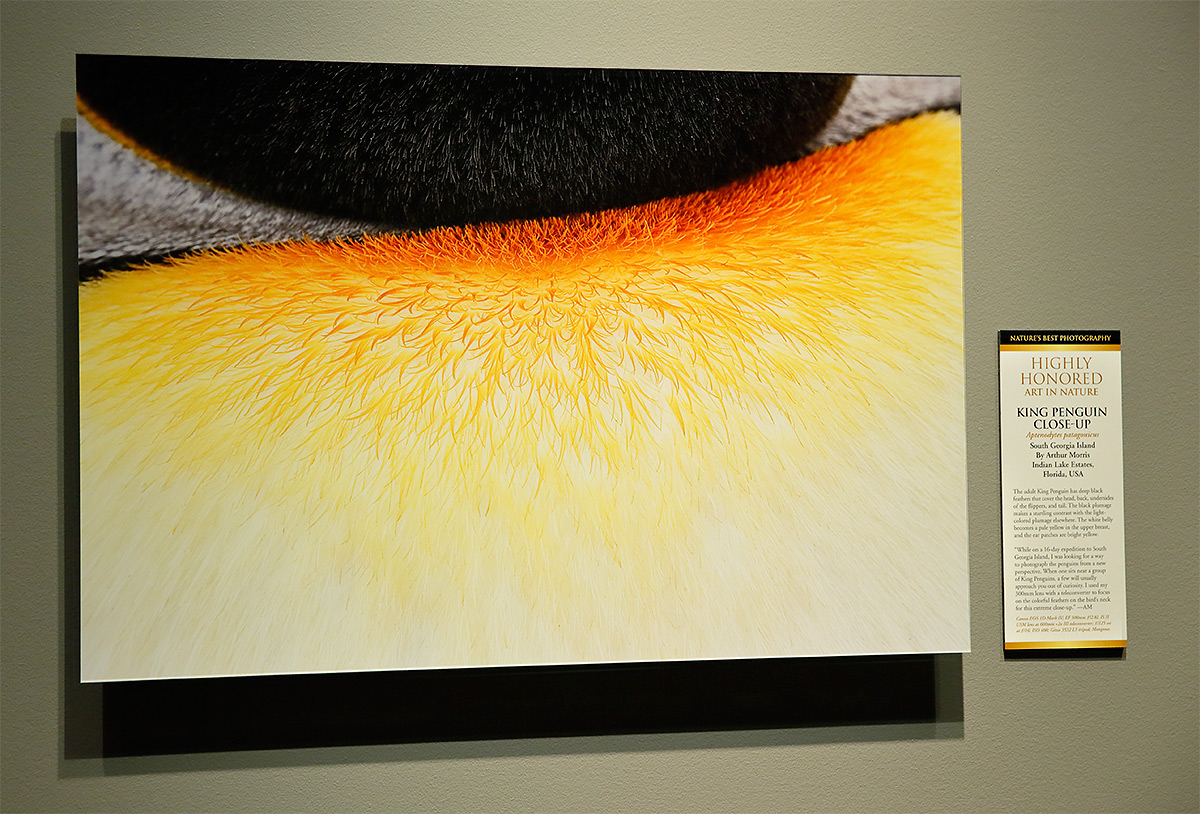
|
|
This image was created at the Smithsonian Museum of Natural History at the Nature’s Best Awards Ceremony with the Canon EF 24-70mm f/2.8L II USM lens (hand held at 63mm) and the Canon EOS 5D Mark III. ISO 1600. Evaluative metering +1/3 stop as framed: 1/100 sec. at f/4 in Av mode. Color temperature: Tungsten cooled to 3000K during the RAW conversion in DPP 4.
Central sensor/AI Servo/Surround Rear Focus AF on the horizon line and re-compose. Click here to see the latest version of the Rear Focus Tutorial. Click on the image to see a larger version.
King Penguin neck abstract print
|
King Penguin Close-up
My highly honored image in the 2014 Nature’s Best Photography Windland Smith Rice International Awards competition was the King Penguin neck abstract. In the Art in Nature category. It’s nice when they named the category after you. In the blog post here, I asked the boys and girls which one they would have voted for. Opinions were split pretty much right down the middle. I like them both. But I am glad that my successful image was a bird. As art :).
It is a pretty cool feeling of pride and accomplishment when you walk up to one of your images hanging on the wall in a prestigious setting.
|
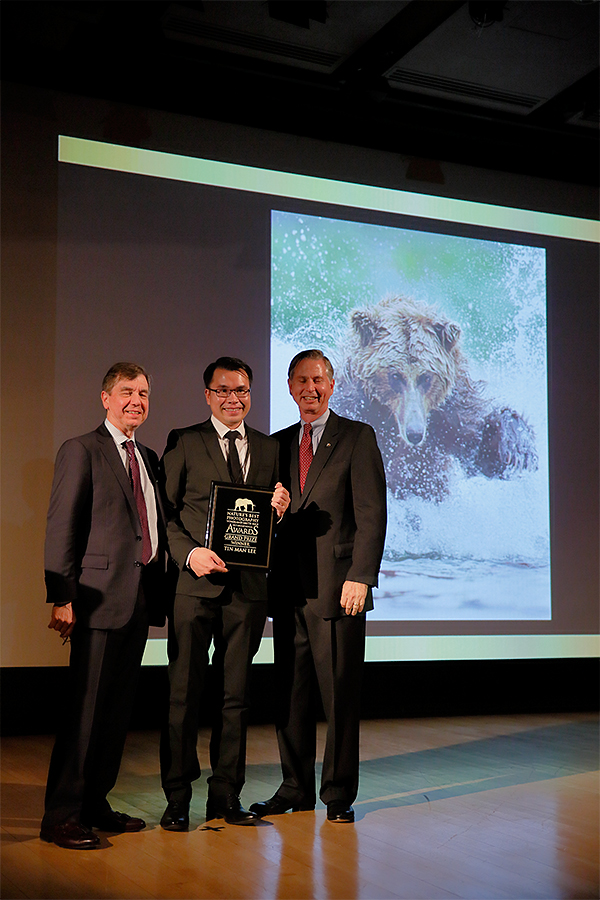
|
|
Stephen B. Freligh, Nature’s Best Photography Publisher and Editor-in-Chief, and Chuck Veatch, chairman of the Nature’s Best Photography Board, present the 2014 Grand Prize to Tin Man Lee. Note that both Steve’s and Chuck’s eyes were closed for this image. Either they were both sleeping or a flash fired just before my shutter opened….
|
Grand Prize Winner
I do not think that I have ever seen anyone as happy as Tin Man Lee was on Thursday night….
You can see large, hi-res versions of the ten category winning images here. Learn more about Nature’s Best Photography by clicking here.
Congrats to Jenaya
Congratulations to NB Youth Photographer of the Year, Jenaya Launstein, age 15. Her winning image was an intimate portrait of a porcupine. It was created in Kluane National Park, Yukon Territory, Canada. It was a pleasure meeting her and her very supportive Dad. Jenaya has dominated the Youth Division of the BIRDS AS ART International Bird Photography Competitions two years running.
|
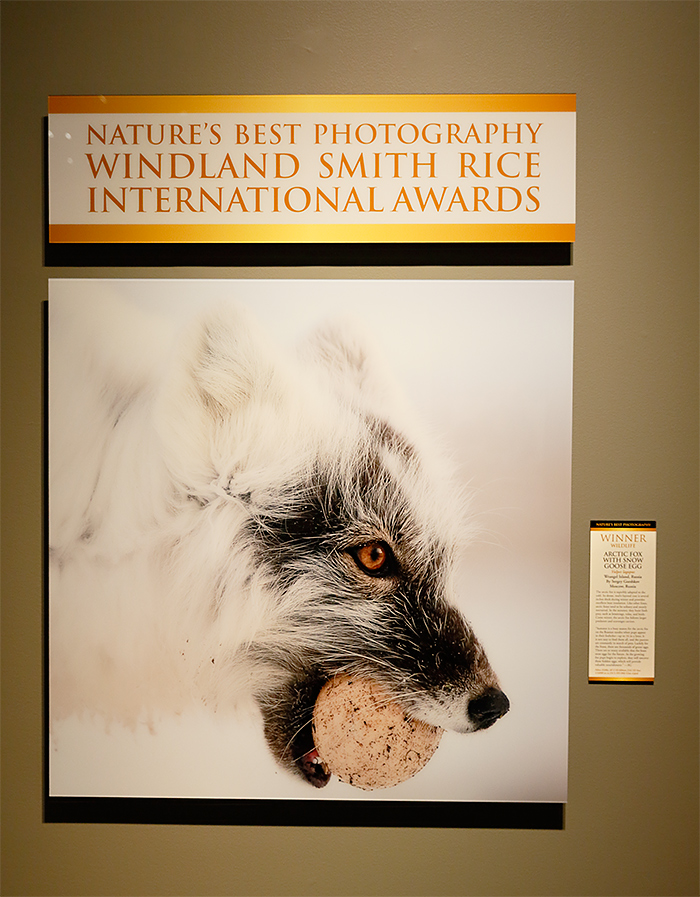
|
|
For me, this image was my favorite entry in the exhibit.
|
My Grand Prize Winner
As spectacular as many of the winning and highly honored images were, had I been the lone judge this image of an Arctic Fox stealing off with a goose egg on Wrangel Island, Russia would have won in a landslide. This image was created by by Sergey Gorshkov of Moscow, Russia. Congrats to Sergey.
Artie, Why Do You Enter Contests?
In a word. To win. In a few more words, the recognition and prestige are nice. As I think about it, entering contests has pretty much zero to do with my career, at least as far as being a motivating factor. Surely the more honored images you have in major competitions the more likely folks are to sign up for an IPT. I guess…. If I were not a professional, I am sure that I would enter at least as many contests as I do now. I guess….
Though–over the years, as far back as 1998 I believe, I have had about 8 images or commended honored in the BBC Wildlife Photographer of the Year Competitions–no category winners in that one, a like number in the Nature’s Best Contest including at least one category winner and the grand prize in their first ever contest if I remember it correctly, and several in the National Wildlife Federation contests, last night was only the second awards ceremony I have attended. The first was when Blizzard in Blue was runner up in Composition and Form in the 1998 BBC event. In those days, they offered a plane ticket to the category winners and runners up. So I went. I am glad that I went last night.
My Thoughts on the Competitions
Winning a category or even having an image honored in one of the prestigious contests is no mean feat. (Idiomatic: a laudable triumph of great difficulty). With thousands of folks entering and the judges or whomever is doing the initial selection rounds often looking at ten or twenty thousand or more images having one of your photographs wind up among the 30 or 40 left standing is quite an amazing feat when you come to think about it. In fact, it is absolutely astounding. To think that I have succeeded nearly 20 times is quite rewarding. And when you view the winning and honored images and with half of them your jaw drops in astonishment and you wonder why you even bother owning a camera, that is simply icing on a very wonderful cake.
That said, there are times when I–and many other excellent experienced photographers–look at some of the winning entries in every single prestigious contest and simply scratch our heads and are left to wonder, “What were the judges thinking on that one.”
One of my biggest successes was Fire in the Mist; it was Highly Honored in the Birds category (I think…) in a BBC competition. It is worth noting that it did nothing the first time I had entered it in that very same contest. Most wonderfully, it wound up as the wrap-around cover art for the book “Light on the Earth” that featured 30 years of the best of BBC images. Talk about an ego booster :).
More recently Gannets in Love placed first in Art in Nature in the Nature’s Best contest and first in Birds in the National Wildlife contest. I was really hoping for what would surely have been a unique triple-header with the same image in the same year honored in all three contests but alas, it did not even make the finals in that year’s BBC competition. Yeah, what were the judges thinking? And with the BBC contest, you are not allowed to enter an image that has already been honored in a major contest….
In the BBC competition I had far more success when we were limited to film, but only limited success in well more than a decade of digital entries. While I think–on one hand–that I have continued to improve, digital has flattened the learning curve and brought many more folks onto the playing field. On the other hand I have continued to have great success in the Nature’s Best contest. What’s up? I have no clue. Ask the judges :).
IAC, I try not to take the results personally. Judging a contest is a difficult task and is 100% subjective. As for me, I shall keep on trying.
|

|
|
Images and card design copyright 2014: Arthur Morris/BIRDS AS ART. Click on the card to enjoy a spectacular larger version.
|
The 2015 UK Puffins and Gannets IPT
Just One Slot Left
June 29 through July 5, 2015: $5499: Limit 10 photographers/Openings 1. Two great leaders: Denise Ippolito and Arthur Morris.
Here are the plans for next year: take a red eye from the east coast of the US on 28 June arriving in Edinburgh, Scotland on the morning of Monday 29 June (or simply meet us then either at the Edinburgh Airport (EDI) or later in the day at our cottages if you are driving your own vehicle either from the UK or from somewhere in Europe. Stay 7 nights in two gorgeous modern country cottages.
There are 5 days of planned puffin/seabird trips—weather permitting, and 1 full day of gannet photography with 2 sessions on the boat.
|

|
|
Images and card design copyright 2014: Arthur Morris/BIRDS AS ART. Click on the card to enjoy a spectacular larger version.
|
The Details
We will be staying in upscale country-side cottages that are beyond lovely with large living areas and lots of open space for image sharing and Photoshop lessons. The shared rooms are decent-sized, each with two roomy single beds and a private bathroom. See the single supplement info below.
All breakfasts, lunches and dinners are included. All 5 puffins boat lunches will need to be prepared in advance, taken with, and consumed at your leisure. I usually eat mine on the short boat trip from one island to the other. Also included is a restaurant lunch on the gannet boat day and a farewell fine dining thank you dinner. The cost of your National Heritage Trust is also included; that covers the twice a day landing fees.
Plan to fly home on the early morning of Monday 6 July or to continue your stay or travels.
|

|
|
Images and card design copyright 2014: Arthur Morris/BIRDS AS ART. Click on the card to enjoy a spectacular larger version. Scroll down to join us in the UK in 2015.
|
Single Supplement Info
The single supplement is $1475. As we will be renting a third cottage the $1475 is due with your deposit and is also non-refundable.
If you are good to go please send your $2,000 deposit check now to save a spot. The balance will be due on March 29, 2015. Please make your check out to “Arthur Morris” and send it to Arthur Morris/BIRDS AS ART, PO Box 7245, Indian Lake Estates, FL, 33855. If you cancel and the trip fills, we will be glad to apply a credit applicable to a future IPT for the full amount less a $100 processing fee. If we do not receive your check for the balance on or before the due date we will try to fill your spot from the waiting list. Whether or not your spot is filled, you will lose your deposit. If not, you can secure your spot by paying your balance.
We do hope that you can join us.
IPT Updates
Would you like to visit some of the great bird photography locations on the planet? Would you like to learn from the best? Click here and join us.
Facebook
Be sure to like and follow BAA on Facebook by clicking on the logo link upper right. Tanks a stack!
Support the BAA Blog. Support the BAA Bulletins: Shop B&H here!
We want and need to keep providing you with the latest free information, photography and Photoshop lessons, and all manner of related information. Show your appreciation by making your purchases immediately after clicking on any of our B&H or Amazon Affiliate links in this blog post. Remember, B&H ain’t just photography!
…..
Amazon.com
Those who prefer to support BAA by shopping with Amazon may use this link:
Amazon Canada
Many kind folks from north of the border, eh, have e-mailed stating that they would love to help us out by using one of our affiliate links but that living in Canada and doing so presents numerous problems. Now, they can help us out by using our Amazon Canada affiliate link by starting their searches by clicking here. Many thanks to those who have written.
Typos
In all blog posts and Bulletins, feel free to e-mail or to leave a comment regarding any typos or errors. Just be right :).
November 14th, 2014 The Streak Continues: 349
On Thursday I flew to DC for the Nature’s Best ceremony. I brought the 5D III and the 24-70. This blog post, the 349th in a row, took about 1 1/2 hours to prepare. It was published from hotel room in Arlington, VA at 3:41am. Gotta run as I fly to ABQ from Reagan at 6:45am. I will be home for only 3 full days between tomorrow and January 13, 2015. 🙂
It looks as if the sale of the 600 II featured in Tuesday’s blog post will soon be completed. There is still lots of great used gear listed here.
Thanks to all who pre-ordered the new Canon 100-400 II using our affiliate link. All orders have been forwarded for expediting. And it looks as if all expedited 7D II orders, even the most recent ones, have been shipped. Many thanks to Yechiel Orgel at B&H for his help :).
Please Help Support My Work on the BAA Blog
Thanks a Stack! October was a Great Month.
October was a very rewarding month. Thanks a stack to all who used our B&H links for purchases large and small.
To show your appreciation for my efforts here, we ask, as always, that you use our the B&H and Amazon affiliate links on the right side of the blog for all of your purchases. B&H Is recommended for you major photography gear purchases, Amazon for your household, entertainment, and general purpose stuff. Please check the availability of all photographic accessories in the BIRDS AS ART Online Store, especially Gitzo tripods, Wimberley tripod heads, and the like. We sell only what I have used, have tested, and can depend on. We will not sell you junk. We know what you need to make creating great images easy and fun. And we are always glad to answer your gear questions via e-mail.
I would of course appreciate your using our B&H affiliate links for all of your major gear, video, and electronic purchases. For the photographic stuff mentioned in the paragraph above we, meaning BAA, would of course greatly appreciate your business. Here is a huge thank you to the many who have been using our links on a regular basis and visiting the BAA Online store as well.


If what you’ve learned here on my blog about the Canon EOS-7D Mark II has inspired you to purchase this great new camera body, please consider using the logo link above to support our efforts here in bringing you the latest, greatest educational materials on daily basis.
|
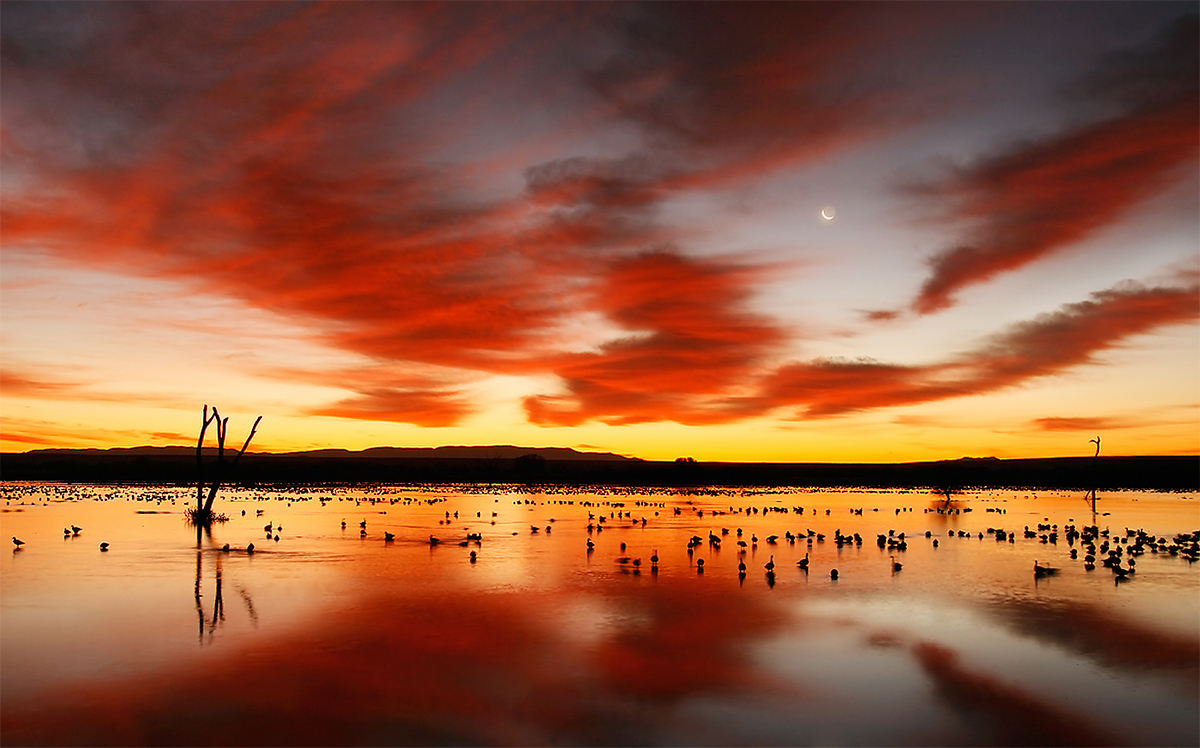
|
|
Sometimes at sunrise you will want to go wide angle on the tiny ballhead with a full frame body. This one was 24-105mm at 24mm and a full frame body, either the 5D II or the 5D III.
|
Which Camera Body When?
I will have five camera bodies with me for my nearly month long sojourn at Bosque: my two 1D X bodies (one sent via UPS Ground last week and one in a checked bag!), my EOS-5D Mark III, my very own EOS-7D Mark II, and the loaner 7D II that Canon has allowed me to hang onto for a while. Which body will I be using when?
To answer that question, I will take you through a typical day at Bosque situation by situation.
Pre-dawn Fly-ins and Fly-outs
The Canon 200-400 instantly became my favorite lens for pre-dawn work. It quickly gives me a focal length range of from 200 to 560mm. As I am generally not hurting for reach there will be a 1D X on the 2-4. My 70-200mm f/2.8L IS will be on my shoulder with the 5D III, again to allow me to get wider than I would with the 7D II. On some mornings, depending on the wind, I may have one of the wide angles with a full frame body within reach. For the most part the 7D IIs will stay in the car till at least 7:00am.
|
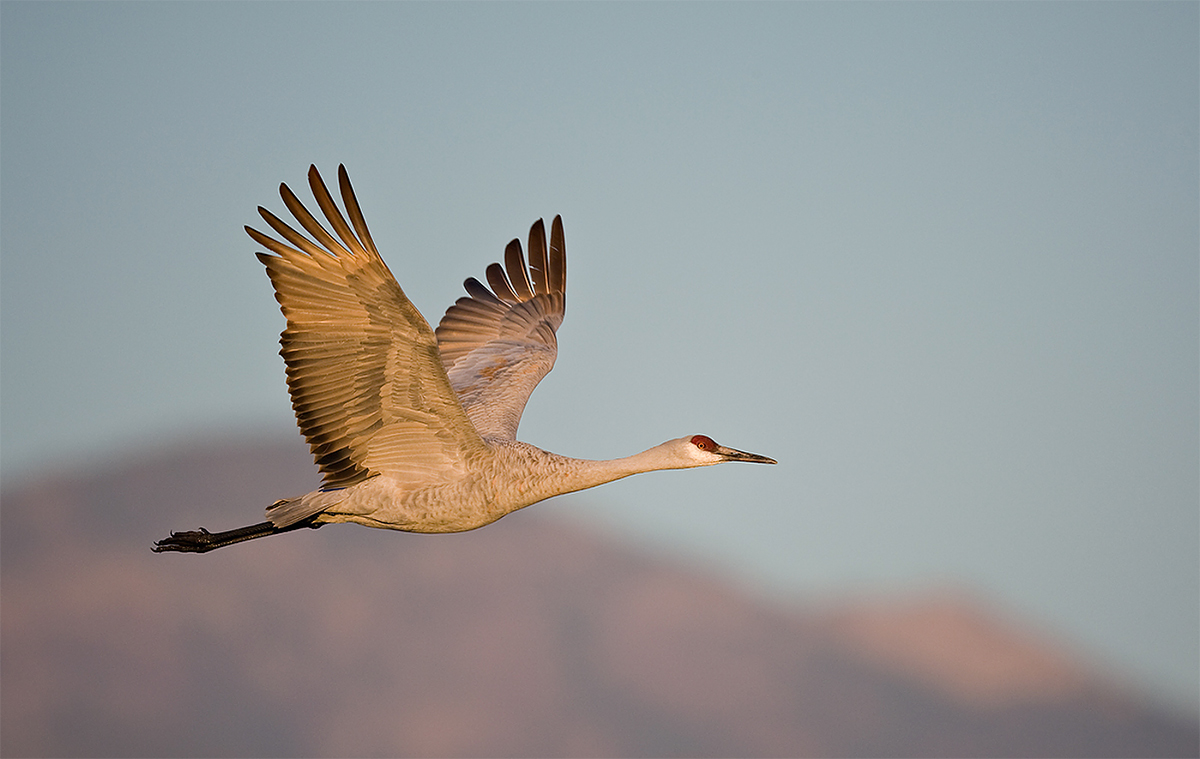
|
|
The 600II/7D II will often be much too long for the cranes heading for the farm fields. This one was 600 and full frame or 600 and Mark IV (1.3X crop factor).
|
The Crane Pools
At the crane pools the 600 II with a full frame body is usually perfect. I opt for the 1D X over the 5D III here choosing frame rate over image size. But there is an interesting option that I am looking forward to trying: the 7D II on the 300 II (at times with the 1.4X III TC). Hand holding will always give you the edge over being on a tripod for flight and action provided that you can hand hold a given rig comfortably for a given period of time. The wind direction and the sky conditions determine whether I will go with a wider auxiliary rig on my shoulder. Usually not.
|
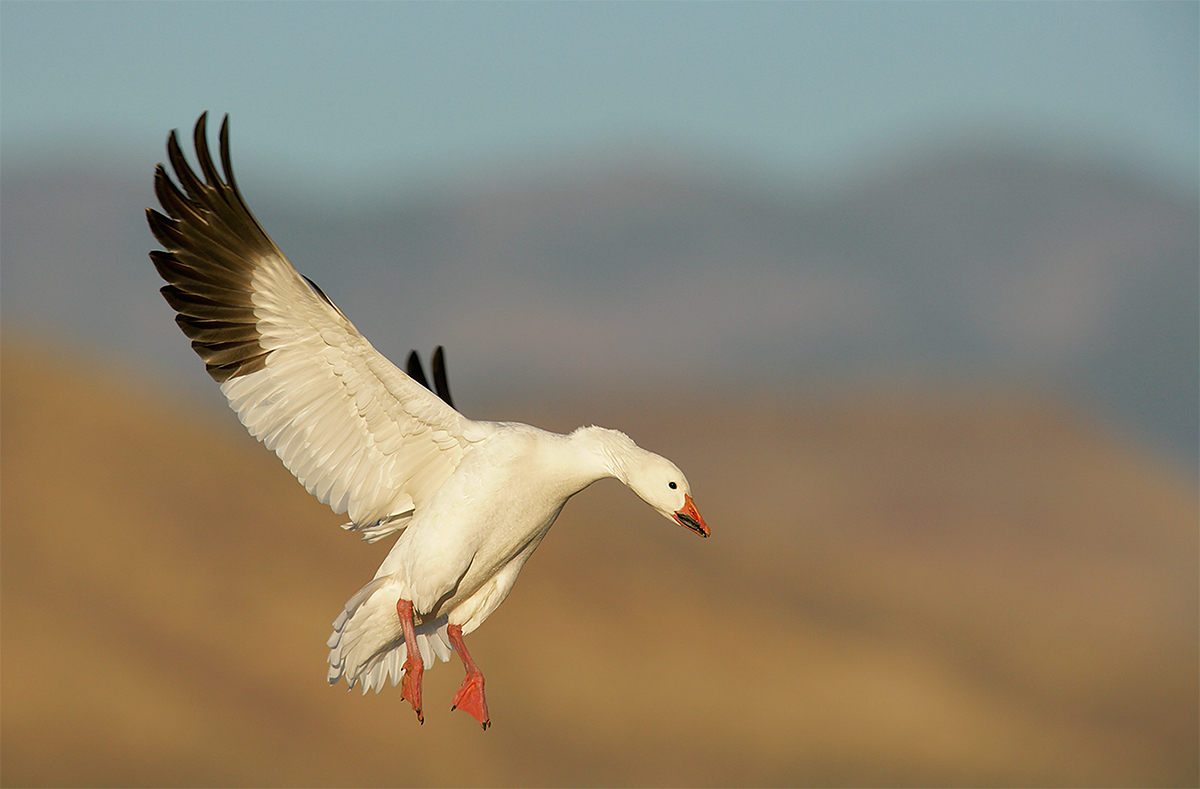
|
|
The Bosque Site Guide (see same below) will teach you how and why to pray for winds with southern or easterly components in the early morning 🙂 And where exactly to be.
|
The Farm Fields
Early in the season with the birds landing close to the road I may go with the 600 II/1D X combo. On rare occasion the birds may be landing close enough for an intermediate telephoto lens…. But those conditions are hard to come by. As the corn is knocked down farther and farther from the road I will surely go to the 600 II/7D II rig. Once blast offs are imminent, I will go wide with the full frame bodies, anywhere from fish-eye to 16-35 to 24-70 to 70-200. On clear days I will have a Singh-Ray ND or warming polarizer on each of those lenses.
Singh-Ray Filters
Singh-Ray filters have been used by the world’s top photographers for many decades. Who? Art Wolfe, Tony Sweet, John Barclay, my new friend Ian Plant, my BFF and oft-business partner, Denise Ippolito, Nevada Weir, Brenda Tharp, Cole Thompson, Chuck Kimmerle, and the late Galen Rowell among others. Singh-Ray has been and is the name in quality filters. I often use a 77mm warming polarizer set to dark at Bosque to get to a slower shutter speed in too-bright conditions. Toward that end, BIRDS AS ART is working with Singh-Ray to produce a 5-stop Neutral Density filter to to fit the filter drawers of Canon Super-telephoto lenses. Stayed tuned for info on that.
No other filter manufacturer comes close to matching the quality of Singh-Ray’s optical glass that is comparable to that used by NASA. And they continue to pioneer the most innovative products on the market like their ColorCombo polarizer, Vari-ND variable and Mor-Slo 15-stop neutral density filters. When you use their filters, you’ll create better, more dramatic images and, unlike other filters, with absolutely no sacrifice in image quality. All Singh-Ray filters are handcrafted in the USA.
Best News: 10% Discount/Code at checkout: artie10
To shop for a Singh-Ray warming polarizer (for example), click on the logo link below, click on Polarizers/color enhancing on the menu bar, choose LB Warming Polarizer, choose the size and model, add to cart, and then checkout. At checkout, type artie10 into the “Have a coupon? Click here to enter your code” box, and a healthy 10% discount will be applied to your total. In addition to enjoying the world’s best filter at 10% off you will be supporting my efforts here on the blog.

Working From the Car
As I and we (denise and I) have a few days off, we will work from the car more than we do in a typical year. As most subjects are a good ways from the vehicle, I will have the 600II with a 1.4X III and the 7D II as go-to combo. That said, the 200-400 will be on the passenger seat with a 1D X on it. I brought an empty BLUBB and will fill it with about 12 pounds of WalMart Pinto beans. BFF Denise Ippolito will be in the back seat on the driver’s side.
Lunch at K-Bob’s
You can find me most days around 11:00am at K-Bob’s at the north end of town just past the Super 8.
Early Afternoons
Early afternoons can offer a potpourri of photographic situations. I will choose my weapons based on what we find as detailed above.
|
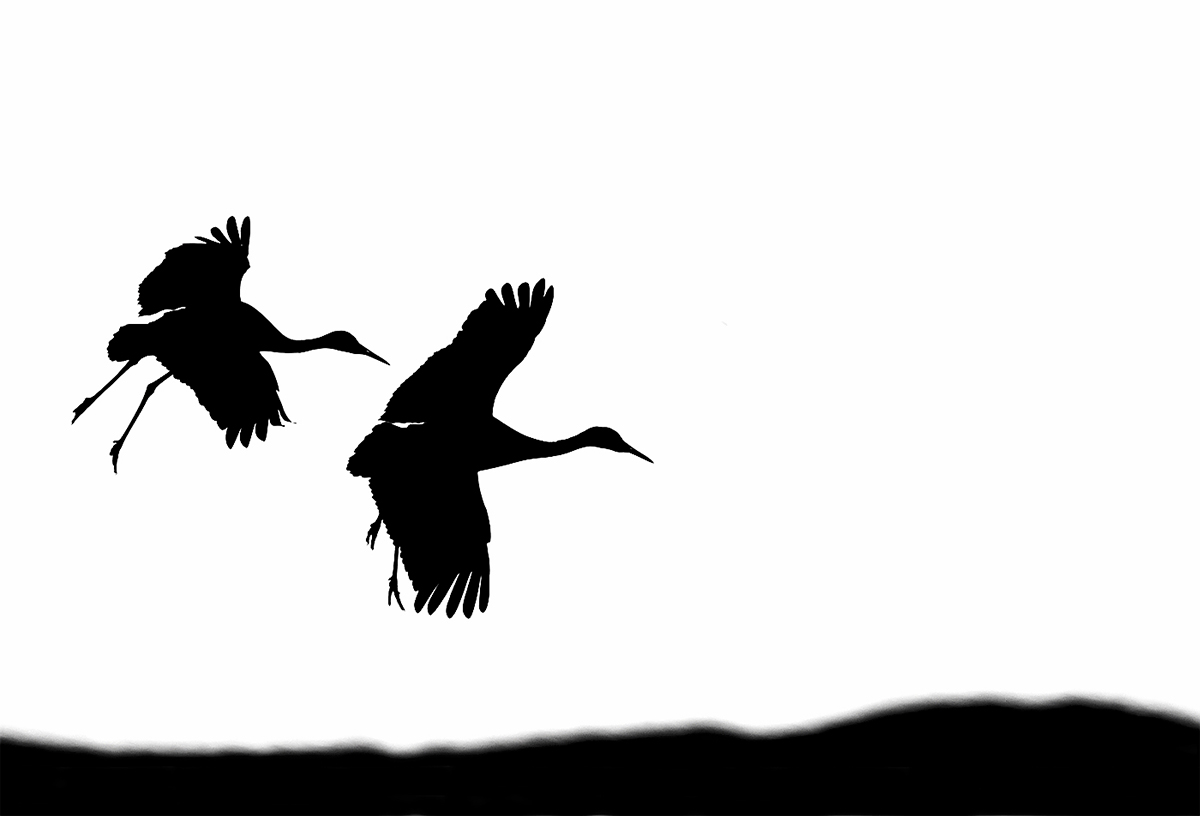
|
|
When I am focal length challenged I will reach for the 600 II, 1.4X III, and 7D II at least until proven otherwise…. All on the tripod of course.
|
Crane Pools for Sunset
On a typical late afternoon at the crane pools you will want to go both very long and very wide. You get the idea by now 🙂 I am however, looking forward to using the 600II/1.4X III/7D II combo for the incoming crane silhouettes. AF will be faster than with the 600 II/2X III/1D X and I will have the advantage of being at f/5.6 rather than f/8; this will save me a full stop of ISO across the board. 16-35 or 24-70 on the Giottos MH 1302-655 BallHead (I call it the tiny ballhead) will rock on many evenings after most folks have gone home too early.
|
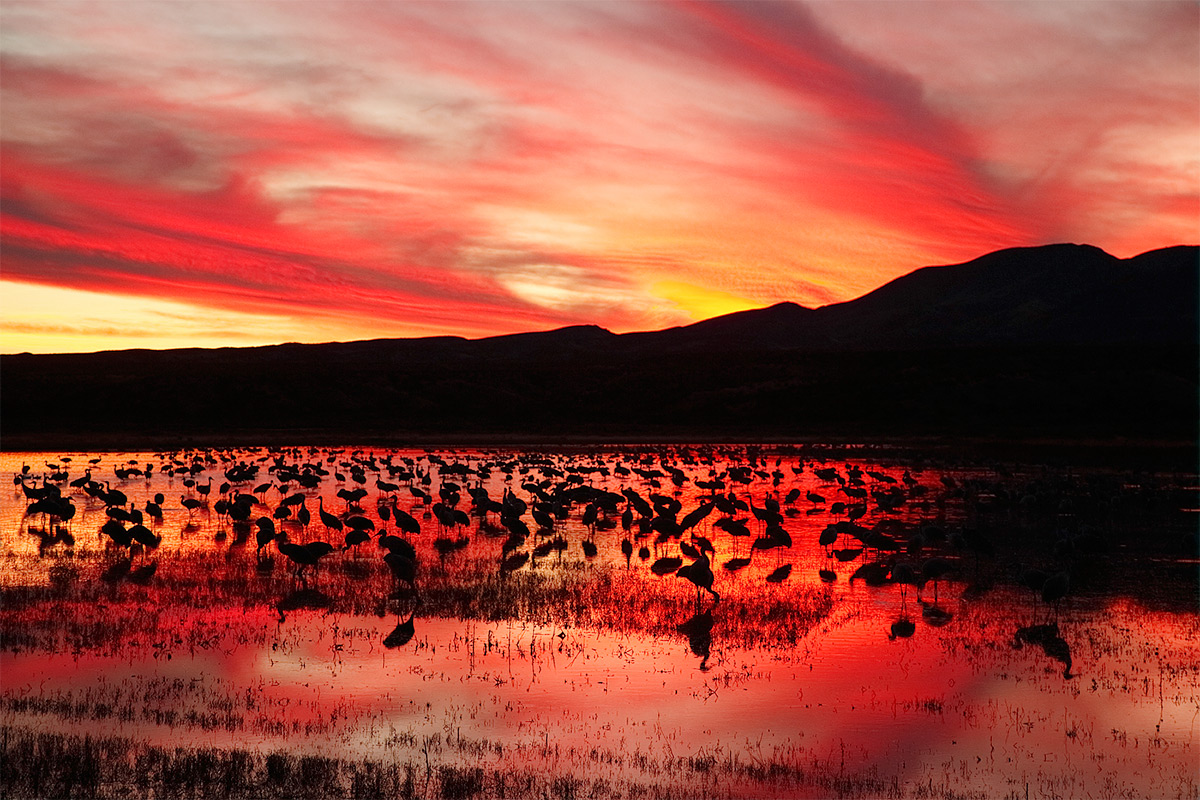
|
|
When the color is intense and everywhere think wide angles and full frame bodies.
|
Questions?
Questions are welcome. Please remember that I will be flying most of the day and then setting up my hotel room and doing some micro-adjusting. But I will get to your questions asap.
Blessed
Please don’t think for one moment that I do not realize how blessed I am to be able to have five camera bodies at my disposal. I understand that that is not the real world for many. Note however, that many folks own both a full frame camera–one of the 5D series, as well as a crop body, something like a 1D IV, a 7D, or even better, a 7D II.
The Bosque Site Guide
All BAA Site Guides are designed so that with a bit of study you can show up at a great place and know exactly where to be at what time on what wind and in what lighting conditions. With a Site Guide on your laptop you will feel like a 20-year veteran even on your first visit. Site Guides are the next best thing to being on an IPT. If you plan on visiting the refuge it would be foolish to make the trip without having this guide in hand. Why spend money on gear and travel and then spend days stumbling around in the wrong spots? If you have visited previously, and are still unsure of where you should be at this time of day with that wind, this guide will prove invaluable to you as well.
You can order yours here or check out all of our site guides here.
Canon Telephoto Lens Specifications, Info, and Links; Bookmark This Page!
I have added the 100-400II to the chart here. Bookmark this page and consult it often as it makes comparing different lenses and easy chore. The chart includes weight in both pounds and kilograms, MFDs in feet and inches and in meters, magnification, filter size, and the year of introduction.
|

|
|
Morro Bay offers a wealth of very attractive natural history subjects in a variety of attractive settings.
|
2015 Morro Bay 5-DAY BIRDS AS ART Instructional Photo-Tour (IPT): MAR 14 thru MAR 18, 2015: $1999 (Limit: 8/Openings: 8.)
Meet and Greet after dinner on your own at 8:00pm on MAR 13.
Join me in one of the most beautiful and scenic places on the planet to photograph a large variety of birds of the sea and shore. As above, the star of the show will be Long-billed Curlew. There will be lots of Marbled Godwits and Willets as well as lots of the smaller shorebird species. Black Oystercatcher is likely and we should get to photograph large flocks of Western Sandpipers in flight over the bay. With any luck we should enjoy some great sunrise and sunset photography. There are lots of gulls including Western, California, and Mew. There is one good location where we should get to photograph Western, Clarke’s, Eared, and Pied-billed Grebe, Lesser Scaup, and Common Loon. We may get to photograph some passerines including Anna’s Hummingbird, Brewer’s Blackbird, and White-crowned Sparrow. And we have a chance for several species of raptors. Yikes, I almost forgot California Poppy. And California Ground Squirrel. Sea Otters are also possible.
This IPT will include five 3 1/2 hour morning photo sessions, five 2 1/2 hour afternoon sessions, five lunches, after-lunch image review and Photoshop sessions, and of course tons of great in-the-field instruction and photographic instruction. To ensure early starts, breakfasts will be your responsibility.
A $499 non-refundable deposit is required to hold your slot for this IPT. You can send a check (made out to “Arthur Morris) to use at BIRDS AS ART, PO Box 7245, Indian Lake Estates, FL, 33855. Or call Jim or Jennifer at the office with a credit card at 863-692-0906. Your balance, payable only by check, will be due on 12/1//2014. If the trip fills, we will be glad to apply a credit applicable to a future IPT for the full amount less a $100 processing fee. If we do not receive your check for the balance on or before the due date we will try to fill your spot from the waiting list. If your spot is filled, you will lose your deposit. If not, you can secure your spot by paying your balance. Please print, complete, and sign the form that is linked to here and shoot it to us along with your deposit check. If you register by phone, please print, complete and sign the form as noted above and either mail it to us or e-mail the scan. If you have any questions, please feel free to contact me via e-mail.
See lots more Morro Bay images here.
IPT Updates
Would you like to visit some of the great bird photography locations on the planet? Would you like to learn from the best? Click here and join us.
Facebook
Be sure to like and follow BAA on Facebook by clicking on the logo link upper right. Tanks a stack!
Support the BAA Blog. Support the BAA Bulletins: Shop B&H here!
We want and need to keep providing you with the latest free information, photography and Photoshop lessons, and all manner of related information. Show your appreciation by making your purchases immediately after clicking on any of our B&H or Amazon Affiliate links in this blog post. Remember, B&H ain’t just photography!
…..
Amazon.com
Those who prefer to support BAA by shopping with Amazon may use this link:
Amazon Canada
Many kind folks from north of the border, eh, have e-mailed stating that they would love to help us out by using one of our affiliate links but that living in Canada and doing so presents numerous problems. Now, they can help us out by using our Amazon Canada affiliate link by starting their searches by clicking here. Many thanks to those who have written.
Typos
In all blog posts and Bulletins, feel free to e-mail or to leave a comment regarding any typos or errors. Just be right :).
November 13th, 2014 Coming Tomorrow
Tomorrow’s blog post will outline my thoughts on which of my three (actually 5 on this trip) camera bodies I will be using in various situations at Bosque.
The Streak Continues: 348
On Wednesday I finished and sent BAA Bulletin #469. I enjoyed an easy 60-length swim in the sunshine and took a short nap. Late in the day, I started packing. This blog post, the 348th in a row, took about 1 1/2 hours to prepare. It was published from my home at Indian Lake Estates at about 5:15am. Today I fly to DC. I will be home for only 3 full days between tomorrow and January 13, 2015. 🙂
The sale of the 600 II featured in yesterday’s blog post is pending.
Thanks to all who pre-ordered the new Canon 100-400 II using our affiliate link. All orders have been forwarded for expediting. And it looks as if all expedited 7D II orders, even the most recent ones, have been shipped. Many thanks to Yechiel Orgel at B&H for his help :).
Please Help Support My Work on the BAA Blog
Thanks a Stack! October was a Great Month.
October was a very rewarding month. Thanks a stack to all who used our B&H links for purchases large and small.
To show your appreciation for my efforts here, we ask, as always, that you use our the B&H and Amazon affiliate links on the right side of the blog for all of your purchases. B&H Is recommended for you major photography gear purchases, Amazon for your household, entertainment, and general purpose stuff. Please check the availability of all photographic accessories in the BIRDS AS ART Online Store, especially Gitzo tripods, Wimberley tripod heads, and the like. We sell only what I have used, have tested, and can depend on. We will not sell you junk. We know what you need to make creating great images easy and fun. And we are always glad to answer your gear questions via e-mail.
I would of course appreciate your using our B&H affiliate links for all of your major gear, video, and electronic purchases. For the photographic stuff mentioned in the paragraph above we, meaning BAA, would of course greatly appreciate your business. Here is a huge thank you to the many who have been using our links on a regular basis and visiting the BAA Online store as well.


If what you’ve learned here on my blog about the Canon EOS-7D Mark II has inspired you to purchase this great new camera body, please consider using the logo link above to support our efforts here in bringing you the latest, greatest educational materials on daily basis.
|
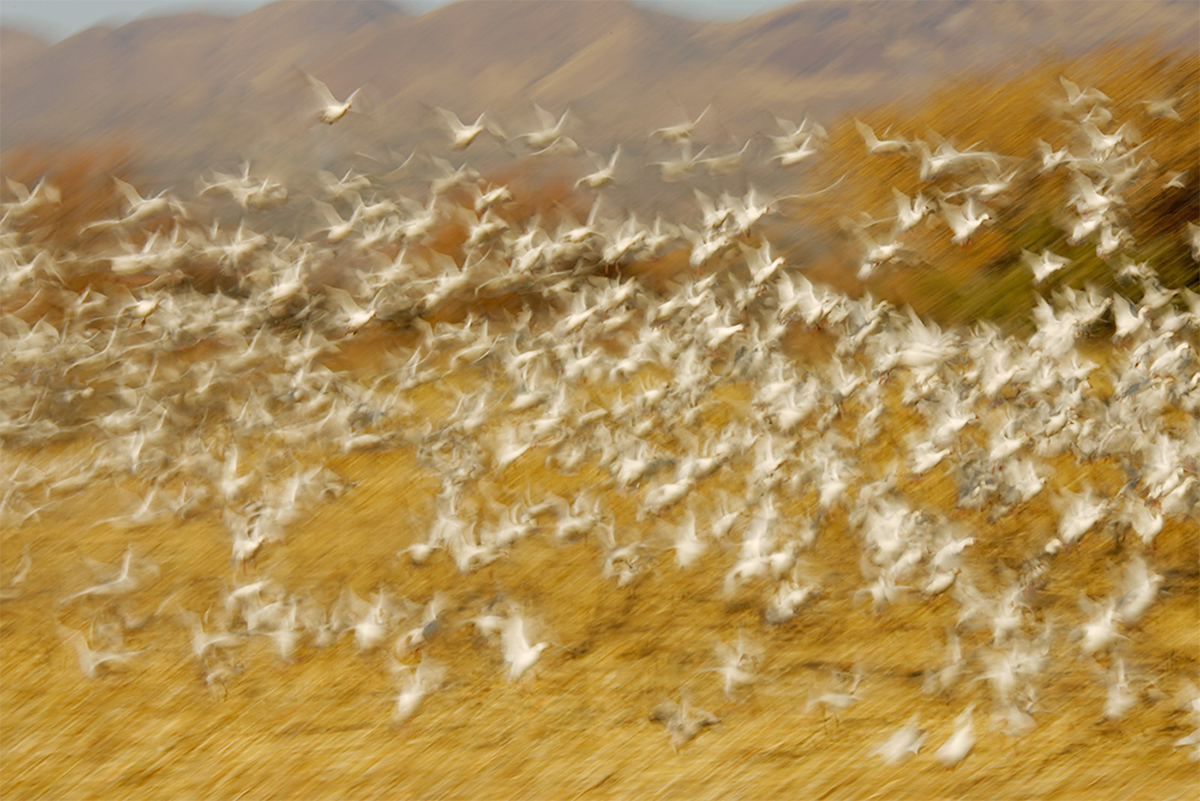
|
|
This image was created at Bosque del Apache NWR on a clear, bright, sunny November 26, 2006 at 10:31am with the hand held Canon 100-400mm IS L lens (now replaced by the brand new Canon EF 100-400mm f/4.5-5.6L IS II USM lens) and the EOS-1D Mark II N (now replaced by the Canon EOS-1D X digital SLR . ISO 50. Evaluative metering at zero as framed: 1/8 sec. at f/32 in Manual mode. Central sensor/AI Servo Shutter Button AF was active at the moment of exposure.
The warming polarizer that I used allowed me to work 3 stops slower than if I had not been using one. See the short tutorial below to learn how to set a circular polarizer to dark. Without the polarizer I could have only gotten down to 1/60 sec. (at f/32) in the bright sun. The geese would barely have been blurred…. In addition the warming filter added some really sweet color tones to the image.
|
Singh-Ray Filters
Singh-Ray filters have been used by the world’s top photographers for many decades. Who? Art Wolfe, Tony Sweet, John Barclay, my new friend Ian Plant, my BFF and oft-business partner, Denise Ippolito, Nevada Weir, Brenda Tharp, Cole Thompson, Chuck Kimmerle, and the late Galen Rowell among others. Singh-Ray has been and is the name in quality filters. I often use a 77mm warming polarizer set to dark at Bosque to get to a slower shutter speed in too-bright conditions. Toward that end, BIRDS AS ART is working with Singh-Ray to produce a 5-stop Neutral Density filter to to fit the filter drawers of Canon Super-telephoto lenses. Stayed tuned for info on that.
No other filter manufacturer comes close to matching the quality of Singh-Ray’s optical glass that is comparable to that used by NASA. And they continue to pioneer the most innovative products on the market like their ColorCombo polarizer, Vari-ND variable and Mor-Slo 15-stop neutral density filters. When you use their filters, you’ll create better, more dramatic images and, unlike other filters, with absolutely no sacrifice in image quality. All Singh-Ray filters are handcrafted in the USA.
Best News: 10% Discount/Code at checkout: artie10
To shop for a Singh-Ray warming polarizer (for example), click on the logo link below, click on Polarizers/color enhancing on the menu bar, choose LB Warming Polarizer, choose the size and model, add to cart, and then checkout. At checkout, type artie10 into the “Have a coupon? Click here to enter your code” box, and a healthy 10% discount will be applied to your total. In addition to enjoying the world’s best filter at 10% off you will be supporting my efforts here on the blog.

How to Set A Circular Polarizer to Dark
Mount the polarizer. Put the camera in Av mode at zero EC. Point the lens at the sky 90 degrees off sun angle. Turn the polarizer slowly while noting the shutter speed as you rotate the polarizer. You will want to quit turning it when you find the slowest shutter speed. Now you can work right down sun angle several stops slower than if you were not using a polarizer set to dark.
|

|
|
Learn the secrets of creating contest winning images in our “A Guide to Pleasing Blurs.”
|
A Guide to Pleasing Blurs
While lying in bed in the middle of last night and thinking of finishing this blog post, I realized that the two oof bird images were actually de-focused blurs, one of the many categories that we discuss and detail in our great eGuide, A Guide to Pleasing Blurs by Denise Ippolito and yours truly.
Pleasing Blurs are not accidents. Learn pretty much everything that there is about creating them in this instructive (as always) guide.
IPT Updates
Would you like to visit some of the great bird photography locations on the planet? Would you like to learn from the best? Click here and join us.
Facebook
Be sure to like and follow BAA on Facebook by clicking on the logo link upper right. Tanks a stack!
Support the BAA Blog. Support the BAA Bulletins: Shop B&H here!
We want and need to keep providing you with the latest free information, photography and Photoshop lessons, and all manner of related information. Show your appreciation by making your purchases immediately after clicking on any of our B&H or Amazon Affiliate links in this blog post. Remember, B&H ain’t just photography!
…..
Amazon.com
Those who prefer to support BAA by shopping with Amazon may use this link:
Amazon Canada
Many kind folks from north of the border, eh, have e-mailed stating that they would love to help us out by using one of our affiliate links but that living in Canada and doing so presents numerous problems. Now, they can help us out by using our Amazon Canada affiliate link by starting their searches by clicking here. Many thanks to those who have written.
Typos
In all blog posts and Bulletins, feel free to e-mail or to leave a comment regarding any typos or errors. Just be right :).
November 12th, 2014 Coming Soon
Within the next few days I will do a feature detailing my thoughts on which camera body I will be using in various situations at Bosque.
The Streak Continues: 347
On Tuesday I finally finished the “Love Affair with Bosque” slide program, answered a stack of e-mails, enjoyed an easy 60-length swim in the sunshine, and took a short nap. This blog post, the 347th in a row, took about 1 1/2 hours to prepare. It was published from my home at Indian Lake Estates just after 5:30am. Today is packing day. I will be home for only 3 full days between tomorrow and January 13, 2015. 🙂
Thanks to all who pre-ordered the new Canon 100-400 II using our affiliate link. All orders have been forwarded for expediting.
Please Help Support My Work on the BAA Blog
Thanks a Stack! October was a Great Month.
October was a very rewarding month. Thanks a stack to all who used our B&H links for purchases large and small.
To show your appreciation for my efforts here, we ask, as always, that you use our the B&H and Amazon affiliate links on the right side of the blog for all of your purchases. B&H Is recommended for you major photography gear purchases, Amazon for your household, entertainment, and general purpose stuff. Please check the availability of all photographic accessories in the BIRDS AS ART Online Store, especially Gitzo tripods, Wimberley tripod heads, and the like. We sell only what I have used, have tested, and can depend on. We will not sell you junk. We know what you need to make creating great images easy and fun. And we are always glad to answer your gear questions via e-mail.
I would of course appreciate your using our B&H affiliate links for all of your major gear, video, and electronic purchases. For the photographic stuff mentioned in the paragraph above we, meaning BAA, would of course greatly appreciate your business. Here is a huge thank you to the many who have been using our links on a regular basis and visiting the BAA Online store as well.


If what you’ve learned here on my blog about the Canon EOS-7D Mark II has inspired you to purchase this great new camera body, please consider using the logo link above to support our efforts here in bringing you the latest, greatest educational materials on daily basis.
Backlit Guanaco
This image made the final round of judging in the 2014 Nature’s Best Photography Windland Smith Rice International Awards competition. Denise Ippolito suggested that I enter this image.
Blacklit Magic
You can learn how to create strongly backlit images against black backgrounds like the image above in the “Blacklit Magic” blog post here.
|
|
|
This abstract King Penguin neck pattern image was created at St. Andrews Bay with the tripod-mounted Canon EF 300mm f/2.8L IS II USM Telephoto Lens, the Canon 2x EF Extender III (Teleconverter), and the unfortunately discontinued EOS-1D Mark IV. ISO 400. Evaluative metering +1 2/3 stops: 1/125 sec. at f/16 in Manual mode.
Central sensor/AI Servo Rear Focus AF and recompose. Click here if you missed the Rear Focus Tutorial. Be sure to click on the image to enjoy a larger version.
To learn why I used the 300 and the 1D IVI rather than the 500 and the 1D X to create this image see the “Wrecked” blog post coming soon.
|
King Penguin abstract neck pattern
This image made the final round of judging in the 2014 Nature’s Best Photography Windland Smith Rice International Awards competition. Denise Ippolito suggested that I enter this image.
You Be the Judge
One of the two images above was Highly Honored in the 2014 Nature’s Best Photography Windland Smith Rice International Awards competition. Which one was honored? If you were a judge for this prestigious contest, which would you have selected? Be sure to let us know why. Please, no spoilers. 🙂
I am flying to Washington DC on Thursday to attend the awards ceremony at the National Museum of Natural History and then continuing on to Albuquerque, Socorro, and my beloved Bosque del Apache NWR in San Antonio, NM for 3 1/2 fairly busy weeks. Though I have had more than several images in the Nature’s Best museum exhibit my busy schedule has always prevented me from attending the ceremony. Until now. It should be fun hobnobbing with some of the world’s best nature photographers.
Used Canon EF 600mm f/4L IS II USM Lens
Only $9999
Mark Richman is literally giving away a barely used Canon EF 600mm f/4L IS II USM lens in mint condition for only $9,999. This one should sell instantly. The sale includes the original box and everything that came in it, the rear lens cap, the protective front hood, a 4th Generation Design CR-X 5 low foot, the original lens foot, the original box, the LensCoat that was installed on day one, and insured shipping via UPS Ground to US addresses only. Your gear will be shipped only after your check clears.
Please contact Mark via e-mail or by phone at 914-772-7060. Eastern Time Zone.
The new 600 is just a shade heavier than the old 500, is incredibly sharp, and kills with both teleconverters yielding focal lengths of 600mm, 840mm, and 1200mm with a full frame camera body. In short, it is the world’s premier super-telephoto lens. At 8.65 pounds it is hand holdable by many folks not including me. (Actually, I can hand hold if for flight for a very few minutes and can easily hand hold it while sitting on my butt. In comparison, the Nikon AF-S NIKKOR 600mm f/4G ED VR AF lens weighs in at a hefty 11.16 pounds…. I own a 600 II and use it regularly. Even after the recent $1,000 price drop the lens sells new for $11,999.00 at B&H as here.
Selling Your Used Photo Gear Through BIRDS AS ART
Selling your used (or like-new) photo gear through the BAA Blog or via a BAA Online Bulletin is a great idea. We charge only a 5% commission. One of the more popular used gear for sale sites charges a minimum of 20% plus assorted fees! Yikes. The minimum item price here is $500 (or less for a $25 fee). If you are interested please e-mail with the words Items for Sale Info Request cut and pasted into the Subject line :). Stuff that is priced fairly–I offer free pricing advice, usually sells in no time flat. In the past few months, we have sold just about everything in sight.
You can see all current listings https://www.birdsasart-blog.com/baa/used-photography-gear-for-sale/.
Used Gear Cautions
Though I am not in a position to post images of gear for sale here or elsewhere, prospective buyers are encouraged to request for photos of the gear that they are interested in purchasing via e-mail. Doing so will help to avoid any misunderstandings as to the condition of the gear. Sellers are advised to take care to photograph their used gear with care against clean backgrounds so that the stuff is represented accurately and in the best light; please pardon the pun :).
Facebook
Be sure to like and follow BAA on Facebook by clicking on the logo link upper right. Tanks a stack!
Support the BAA Blog. Support the BAA Bulletins: Shop B&H here!
We want and need to keep providing you with the latest free information, photography and Photoshop lessons, and all manner of related information. Show your appreciation by making your purchases immediately after clicking on any of our B&H or Amazon Affiliate links in this blog post. Remember, B&H ain’t just photography!
…..
Amazon.com
Those who prefer to support BAA by shopping with Amazon may use this link:
Amazon Canada
Many kind folks from north of the border, eh, have e-mailed stating that they would love to help us out by using one of our affiliate links but that living in Canada and doing so presents numerous problems. Now, they can help us out by using our Amazon Canada affiliate link by starting their searches by clicking here. Many thanks to those who have written.
Typos
In all blog posts and Bulletins, feel free to e-mail or to leave a comment regarding any typos or errors. Just be right :).
November 11th, 2014 Important Note
The BAA On-line Store was back online on Monday morning.
The Streak Continues: 346
On Monday I started work on BAA Bulletin #469, answered a stack of e-mails, made motel arrangements for the Morro Bay IPT–remember, I will go with one :), enjoyed an easy 60-length swim in sunshine, and took a short nap. This blog post, the 346th in a row, took about 1 1/2 hours to prepare. It was published from my home at Indian Lake Estates just after 5:15am.
In the continuing good news department we filled one of the two remaining slots on the UK Puffins and Gannets IPT.
Please Help Support My Work on the BAA Blog
Thanks a Stack! October was a Great Month.
October was a very rewarding month. Thanks a stack to all who used our B&H links for purchases large and small.
To show your appreciation for my efforts here, we ask, as always, that you use our the B&H and Amazon affiliate links on the right side of the blog for all of your purchases. B&H Is recommended for you major photography gear purchases, Amazon for your household, entertainment, and general purpose stuff. Please check the availability of all photographic accessories in the BIRDS AS ART Online Store, especially Gitzo tripods, Wimberley tripod heads, and the like. We sell only what I have used, have tested, and can depend on. We will not sell you junk. We know what you need to make creating great images easy and fun. And we are always glad to answer your gear questions via e-mail.
I would of course appreciate your using our B&H affiliate links for all of your major gear, video, and electronic purchases. For the photographic stuff mentioned in the paragraph above we, meaning BAA, would of course greatly appreciate your business. Here is a huge thank you to the many who have been using our links on a regular basis and visiting the BAA Online store as well.


If what you’ve learned here on my blog about the Canon EOS-7D Mark II has inspired you to purchase this great new camera body, please consider using the logo link above to support our efforts here in bringing you the latest, greatest educational materials on daily basis.
Canon EOS-7D Mark II Histogram Set-up Tip
For several weeks I had been unable to figure out how to see both the luminance and RGB histograms on the same screen during image playback. With pretty much all recent Canon digital camera bodies you would simply toggle through the four different views during playback until you came to the one that displayed both histograms along with a thumbnail of the image and the shooting data.
As the 7D II comes out of the box only three views are displayed during playback and none of them feature both histograms. So, I e-mailed Rudy Winston and Chuck Westfall, two of Canon’s top tech reps. Chuck was the first to respond. He wrote, “Yes, it’s possible to see both histograms at the same time in playback mode on the 7D Mark II, but it’s different than with the older cameras. Start as usual by pressing the playback button, then press the Info button a couple of times if necessary to get to the screen that shows a histogram in the upper right corner. From that screen, scroll down with the joystick to reveal several different sets of information for the bottom half of the display. The second histogram is a couple of clicks down with the joystick.”
I tried it and bingo. I had both histograms displayed. While I was happy for that and appreciative as always–Chuck and Rudy are always there when I need help and always respond quickly, me thinks that this is a bit of reverse engineering. Why? With the older cameras you could enjoy one screen with both histograms, a thumbnail with blinkies, and the shooting info. With the 7D II that–at least as far as I know, is not possible. The view with both histograms gives you the thumbnail and the lens info (including the focal length with a zoom lens). But not the shooting data. From there one press of the Info button gets you to the full frame image, and another superimposes the shooting data on the image. (Note that all of my cameras are set to “Rotate on computer only” so that both the horizontals and the verticals are displayed as full frame during playback.)
As usual, thanks a stack Chuck!
My Take on the 1-4II
I wish that I had one for Bosque….
The new 1-4 is a twist zoom. Zillions of folks complained about the dust that was sucked into the lens and visible when you looked through the lens from the front element of the original 100-400 despite the fact that such dust never affected a single image. This new lens will surely be sharper than the original that was well sharper than most photographers. That said most folks including me find a twist zoom more convenient than a push-pull zoom. Both Denise Ippolito and I used and loved our 100-400s with great success over many years. Denise still owns and uses hers. I sold mine a few years back and replaced it with the Canon EF 70-200mm f/2.8L IS II USM lens.
Though the new lens is about 1/2 pound heavier than the original version it will be easily hand holdable by most folks. It focuses much closer than the original 1-4, down to 3.2 feet or 97.54cm according to the recently published specs. This huge improvement in MFD, 6.6 feet or 2 meters for the original, turns this already versatile lens into a more than decent quasi-macro lens for flowers, butterflies, frogs, and other relatively small to medium-sized natural history subjects, all the while providing the narrow angle of view at 400mm that I love.
In short I can wait to get my hands on one, not only for Bosque but for my upcoming Southern Oceans trip….
The Spiel
The manufacturer’s take on things…
A long-reaching telephoto zoom characterized by a sophisticated optical design and advanced image stabilization technologies, the Canon EF 100-400mm f/4.5-5.6L IS II USM lens is part of the esteemed L-series developed for full-frame EOS DSLRs. One fluorite element and one Super UD element have been incorporated into the lens’ construction, and both help to reduce aberrations and distortions throughout the zoom range in order to deliver notable clarity, image sharpness, and faithful color reproduction. An Air Sphere Coating has also been applied to lens elements in order to reduce lens flare and ghosting for more contrast-rich imagery. Benefitting the optical components of the lens, a four-stop effective Optical Image Stabilizer helps to minimize the appearance of camera shake and can be dedicated to different styles of shooting. Furthermore, a redeveloped rotation-type zoom ring pairs with an internal focusing mechanism, and an Ultrasonic Motor, to deliver quick and intuitive handling to benefit handheld shooting. Positioned as a versatile option for sports and wildlife photographers, this lens’ list of attributes make it a viable telephoto zoom for a variety of shooting applications.
Housed within a weather-resistant barrel, this lens also features fluorine coatings on the front and rear elements for protection against fingerprints and smudges from affecting image quality. Zoom control is complemented by a dedicated tension ring for adjusting zoom torque. Additionally, other refined design elements include a tripod collar that can be attached or detached with the lens mounted to the camera and an included lens hood that permits easy control over specialty filters with the hood in place.
Telephoto zoom 100-400mm f/4.5-5.6 lens is compatible with full-frame EOS DSLRs, as well as APS-C sized sensors where it will provide a 35mm-equivalent focal length of 160-640mm. One fluorite element and one Super UD (Ultra Low Dispersion) element help to correct chromatic aberrations throughout the zoom range for a high degree of sharpness, clarity, and color accuracy.
An Air Sphere Coating (ASC) has been applied to lens elements to reduce backlit flaring and ghosting for maintained light transmission and high contrast in strong lighting conditions. An Optical Image Stabilizer helps to minimize the appearance of camera shake by up to four shutter speed stops to better enable working in low-light conditions and with slower shutter speeds. Additionally, three dedicated image stabilization modes are available-Standard, Panning, and During Exposure Only-and can be selectively employed to suit a variety of types of shooting.
An Ultrasonic Motor (USM), along with an internal focusing system, high-speed CPU, and optimized AF algorithms, are employed to deliver fast, precise, and near-silent autofocus performance. The rotation-type zoom ring offers precise adjustment between zoom positions, especially when shooting handheld, and a zoom torque adjustment ring enables easy setting of the zoom tension for personalized control. A weather-resistant design protects the lens from dust and moisture to enable its use in inclement conditions. Additionally, fluorine coatings have also been applied to the front and rear lens elements for further protection against fingerprints and smudging. Nine rounded diaphragm blades contribute to a pleasing out of focus quality that benefits the use of shallow depth of field and selective focus techniques. A redeveloped tripod collar can be attached or detached from the lens without having to remove the lens from the camera.
The included ET-83D lens hood incorporates a side window for easier adjustment of rotating filters with the hood in place.
You can pre-order your 100-400II by clicking here.
The Flourine Coating
A new Fluorine anti-smear coating is applied to the front and rear elements of the EF100-400mm f/4.5-5.6L IS II USM lens, on top of the anti-reflection multicoating layers. This new coating, which also appears on all L-series EF lenses released since 2010 as well as the Series III EF Extenders, is scratch-resistant as well as extremely oil-and water-repellent. It easily deflects these liquids so that they can be wiped off with a soft, clean, dry cloth with no need for lens cleaning solutions. The Fluorine coating on the new lenses is similar in composition to the Fluorine coatings found on the exterior surfaces of the LCD ClearView screens for EOS models released since 2009, as well as the surfaces of the anti-aliasing low-pass filters found on most EOS models equipped with the EOS Integrated Cleaning System. Canon’s Fluorine lens coating is completely transparent and neutral in terms of color balance, so its effects are expected to be completely beneficial to photographers using the new lenses and extenders.
|

|
|
I learned on 11/16/14 from Chuck Westfall that the ET-83D lens hood does not fit the old lens and vice versa. It was announced only as a replacement.
|
What’s Up?
Under “Overview” it mentions the “included ET-83D lens hood.” Under the description of an apparently separate project, it states that this item is a replacement for the original hood included with the lens…. I have e-mailed Chuck Westfall and Rudy Winston at Canon and will report back once I hear from them and let everyone know what’s up.
Though it does not mention it specifically that the new hood, whether included or not, will surely snap securely into place, unlike the lens hood on the original 1-4 which fell off the lens often, often without provocation.
Canon ET-83D Lens Hood
The Canon ET-83D Lens Hood is dedicated to the Canon EF 100-400mm f/4.5-5.6L IS II USM lens and helps to minimize flare by deflecting stray light from entering the lens. Its design incorporates a side window for easier adjustment of specialty rotating filters while the hood is in place. Additionally, the hood also provides additional protection to the lens from accidental impacts, bumps, and scratching.
This item is a replacement for the original hood included with the lens.
IAC, here is the BAA affiliate link for the ET-83D Lens Hood
Thanks Doug Schurman!
Thanks a stack to Doug Sherman sent me this e-mail along with his B&H receipt for the new 100-400 II:
Hello Artie,
I used your general B&H link tonight and pre-ordered the new Canon 100-400 lens. I cancelled my Sigma Tele zoom order when this lens was announced. I just hope I can get it before I leave for New Zealand on Dec 15th.
Thanks
Doug Schurman
Does anyone know the estimated ship date? Let’s not forget that the 7D II was originally not supposed to ship until the end of November. Not to mention how great the 100-400II will be with a 7d Mark II….
Thanks to Kirk Stitt, via e-mail
AM: Hi Kirk, re:
KS: Thanks for the notice on this lens.
AM: You are most welcome. Thanks a stack for using our link.
KS: It should be great with the 7D M II for hand held use.
AM: For sure. It will open up whole new worlds for beginning bird, wildlife, and nature photographers.
KS: Is there any word on IQ with the 1.4xTC?
AM: No, but I am sure that in competent hands, as always, that that combo will produce superb images.
KS: See you at the Bosque. Is there any word on the bird count there?
AM: See you there. The birds have been arriving in good numbers for at least a week.
KS: Good shooting to you, Kirk
AM: Thanks and ditto I get to New Mexico on Thursday afternoon and am looking forward to my 20th consecutive fall visit to one of my very favorite soul places. We still have some room on each IPT and on several of the Festival-related events as well. Later and love, artie
Appreciation
It is hard to express how much I appreciate folks who go out of the way to use my affiliate links to thank me for the work I do here on the blog, for the Bulletins, and for the time I spend answering e-mails. Please remember that using my B&H links will not cost you one penny more; doing so is simply an act of generosity. So thanks!
Canon Telephoto Lens Specifications, Info, and Links; Bookmark This Page!
I have added the 100-400II to the chart here. Bookmark this page and consult it often as it makes comparing different lenses and easy chore. The chart includes weight in both pounds and kilograms, MFDs in feet and inches and in meters, magnification, filter size, and the year of introduction.
|

|
|
Morro Bay offers a wealth of very attractive natural history subjects in a variety of attractive settings.
|
2015 Morro Bay 5-DAY BIRDS AS ART Instructional Photo-Tour (IPT): MAR 14 thru MAR 18, 2015: $1999 (Limit: 8/Openings: 8.)
Meet and Greet after dinner on your own at 8:00pm on MAR 13.
Join me in one of the most beautiful and scenic places on the planet to photograph a large variety of birds of the sea and shore. As above, the star of the show will be Long-billed Curlew. There will be lots of Marbled Godwits and Willets as well as lots of the smaller shorebird species. Black Oystercatcher is likely and we should get to photograph large flocks of Western Sandpipers in flight over the bay. With any luck we should enjoy some great sunrise and sunset photography. There are lots of gulls including Western, California, and Mew. There is one good location where we should get to photograph Western, Clarke’s, Eared, and Pied-billed Grebe, Lesser Scaup, and Common Loon. We may get to photograph some passerines including Anna’s Hummingbird, Brewer’s Blackbird, and White-crowned Sparrow. And we have a chance for several species of raptors. Yikes, I almost forgot California Poppy. And California Ground Squirrel. Sea Otters are also possible.
This IPT will include five 3 1/2 hour morning photo sessions, five 2 1/2 hour afternoon sessions, five lunches, after-lunch image review and Photoshop sessions, and of course tons of great in-the-field instruction and photographic instruction. To ensure early starts, breakfasts will be your responsibility.
A $499 non-refundable deposit is required to hold your slot for this IPT. You can send a check (made out to “Arthur Morris) to use at BIRDS AS ART, PO Box 7245, Indian Lake Estates, FL, 33855. Or call Jim or Jennifer at the office with a credit card at 863-692-0906. Your balance, payable only by check, will be due on 12/1//2014. If the trip fills, we will be glad to apply a credit applicable to a future IPT for the full amount less a $100 processing fee. If we do not receive your check for the balance on or before the due date we will try to fill your spot from the waiting list. If your spot is filled, you will lose your deposit. If not, you can secure your spot by paying your balance. Please print, complete, and sign the form that is linked to here and shoot it to us along with your deposit check. If you register by phone, please print, complete and sign the form as noted above and either mail it to us or e-mail the scan. If you have any questions, please feel free to contact me via e-mail.
See lots more Morro Bay images here.
Facebook
Be sure to like and follow BAA on Facebook by clicking on the logo link upper right. Tanks a stack!
Support the BAA Blog. Support the BAA Bulletins: Shop B&H here!
We want and need to keep providing you with the latest free information, photography and Photoshop lessons, and all manner of related information. Show your appreciation by making your purchases immediately after clicking on any of our B&H or Amazon Affiliate links in this blog post. Remember, B&H ain’t just photography!
…..
Amazon.com
Those who prefer to support BAA by shopping with Amazon may use this link:
Amazon Canada
Many kind folks from north of the border, eh, have e-mailed stating that they would love to help us out by using one of our affiliate links but that living in Canada and doing so presents numerous problems. Now, they can help us out by using our Amazon Canada affiliate link by starting their searches by clicking here. Many thanks to those who have written.
Typos
In all blog posts and Bulletins, feel free to e-mail or to leave a comment regarding any typos or errors. Just be right :).
November 10th, 2014 Important Note
The BAA On-line Store was back online on Monday morning.
3-Stop ND Question
The Streak Continues: 345
I am not sure what I did yesterday aside from working on the blog early in the morning and watching lots of NFL football. I had planned to swim a mile, 88 lengths of the pool, in the cold rain. At 68 lengths, however, I was quite chilled and had a pretty bad cramp in my lower left leg. For once I listened to my body and bagged it. I took a long, solid nap in the late afternoon and slept long and well last night.
Ah, I am starting to remember a bit. I did a very little bit of work mid-morning on the “Love Affair with Bosque” keynote program that I will be presenting on Friday afternoon, November 21, at the Festival of the Cranes. This program is free and open to the public but you must register. If you are in the vicinity, it would be foolish of you not to attend :). Scroll down here for details or to register. As noted previously, if the schedule takes too long to load you can register by phone by calling 575-835-2077 from 9:00am-Noon Mountain Daylight Time.
This blog post, the 345th in a row, took about 1 1/2 hours to prepare. It was published from my home at Indian Lake Estates just after 6:00am.
In the good news department we filled one of the four remaining slots on the two Palouse IPTs on Saturday past.
Please Help Support My Work on the BAA Blog
Thanks a Stack! October was a Great Month.
October was a very rewarding month. Thanks a stack to all who used our B&H links for purchases large and small.
To show your appreciation for my efforts here, we ask, as always, that you use our the B&H and Amazon affiliate links on the right side of the blog for all of your purchases. B&H Is recommended for you major photography gear purchases, Amazon for your household, entertainment, and general purpose stuff. Please check the availability of all photographic accessories in the BIRDS AS ART Online Store, especially Gitzo tripods, Wimberley tripod heads, and the like. We sell only what I have used, have tested, and can depend on. We will not sell you junk. We know what you need to make creating great images easy and fun. And we are always glad to answer your gear questions via e-mail.
I would of course appreciate your using our B&H affiliate links for all of your major gear, video, and electronic purchases. For the photographic stuff mentioned in the paragraph above we, meaning BAA, would of course greatly appreciate your business. Here is a huge thank you to the many who have been using our links on a regular basis and visiting the BAA Online store as well.


If what you’ve learned here on my blog about the Canon EOS-7D Mark II has inspired you to purchase this great new camera body, please consider using the logo link above to support our efforts here in bringing you the latest, greatest educational materials on daily basis.
|
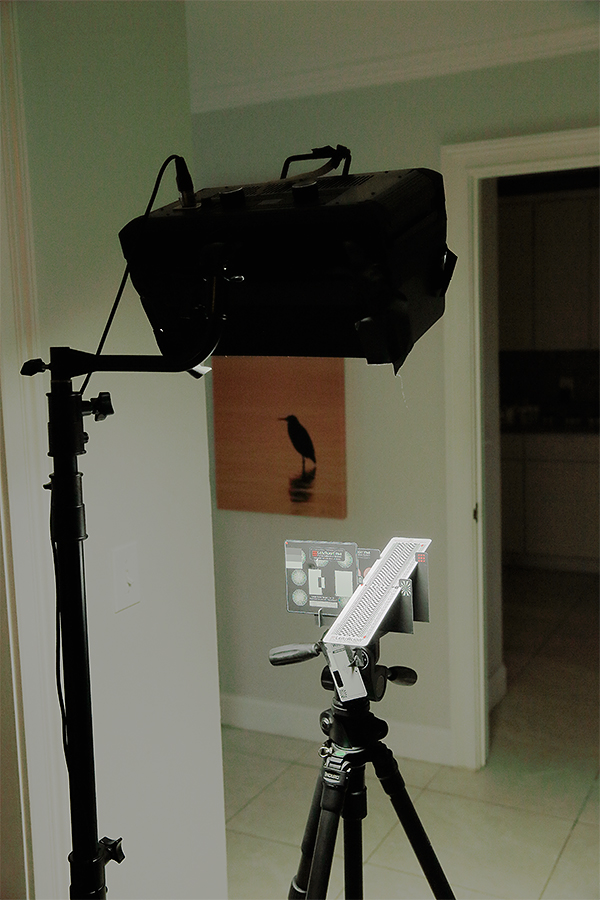
|
|
This is the indoor LensAlign Mark II set-up.
|
The LensAlign Mark II Indoor Set-up
The LensAlign Mark II indoor set-up is a bit more complex than the outdoor set-up. Working indoors with the large target and the ruler evenly and brightly lit will generally yield more consistent results. If you work outdoors on a cloudy bright day you will do just fine. Both the indoor and the outdoor set-ups will be detailed in the new BAA LensAligh/FocusTune tutorial.
DPP 4
DPP 4 did a pretty darned good job with the image above that was virtually black but for the brightly illuminated LensAlign Mark II with its white ruler. I did need to underexpose a ton to prevent burning (over-exposing) the ruler and even with that it opened in DPP with lots of flashing red Highlight warnings and a ton of flashing blue Shadow warnings.
|
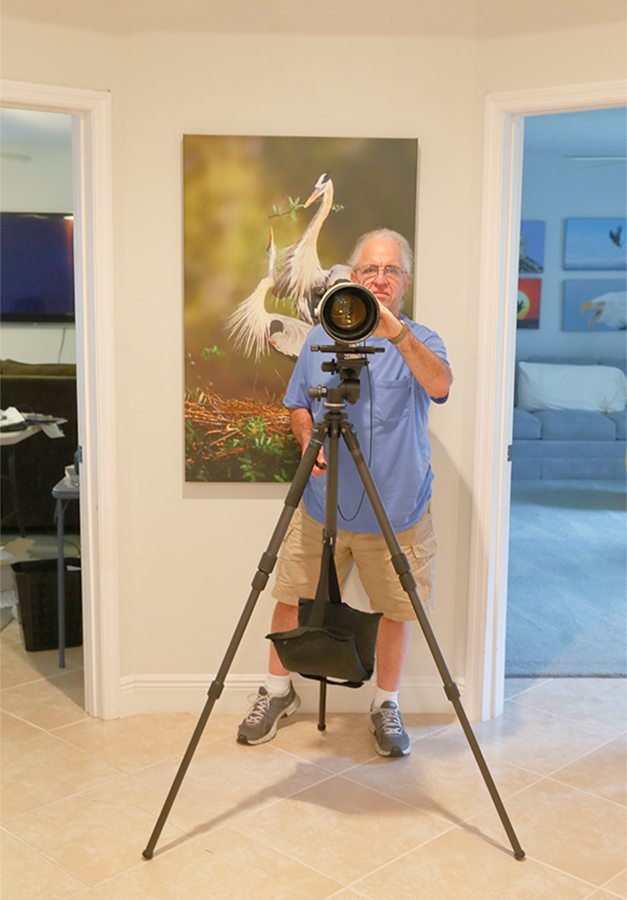
|
|
That’s Michael Tapes making test images with my 300 II/2X III/7D Mark II rig.
|
Working Hard?
I mentioned in yesterday’s blog post that Michael and I “worked long and hard” on Sunday. Please understand that the long and hard work involved my taking copious notes, my asking a zillion “why?” and “how come?” questions, and Michael answering my questions in great detail. Plus, we both like to yak.
Once I had mastered the concepts and fully understood Michael’s LensAlign philosophy, the actual process of LensAligning a given lens/camera body combo took about seven to ten minutes. That included making a wide set of test images, importing and viewing them in FocusTune, analyzing the results, creating and analyzing a second, narrower set of test images, and at times, making a third set of test images to fine-tune and confirm the earlier findings.
Once you study the tutorial that will detail the steps needed to create and analyze a series of test images, the scenario described above will take the average person about 20-25 minutes. It is likely that none of us will ever learn to work as quickly and efficiently as Michael–he has been doing it for many years–but many of us will come close to cutting the time or our early efforts in half. Once you have the techniques down pat it becomes rather robotic.
|
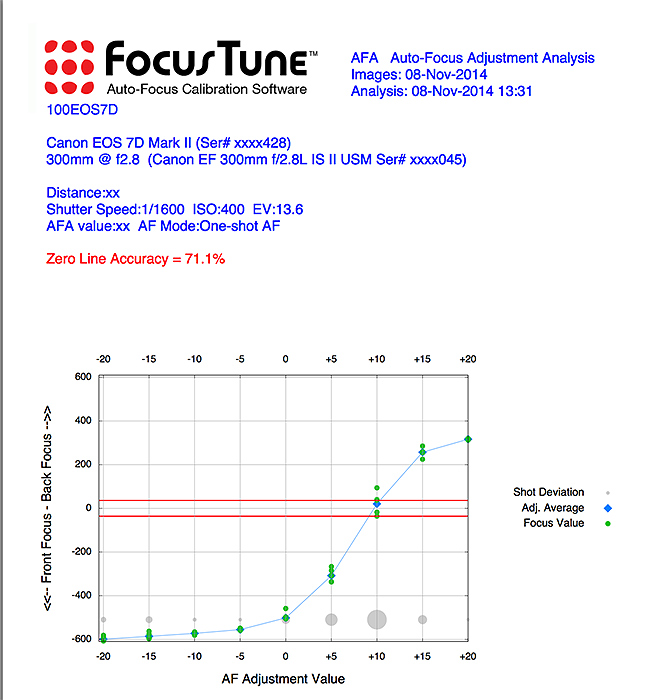
|
|
This is a FocusTune AFA graph for a wide set of test images
|
A FocusTune AFA graph for a wide set of test images
Above is a FocusTune Autofocus Adjustment Graph for a wide set of test images made with the 300 II and my new 7d II. You start wide, testing by increments of 5 and going from from -20 to +20. After you check the results, you come in tighter and then fine tune. The graph above would suggest that the correct MA would be somewhere in the vicinity of +10 but according to Michael, “this is not definitive because our data points are specifically +5, +10, +15. Since the results are rarely linear, the blue line connecting the weighted averages for each AFA does not show an accurate interpolation. We need more data points within this area to be accurate. After further testing we wound up setting the MA at +4.
|
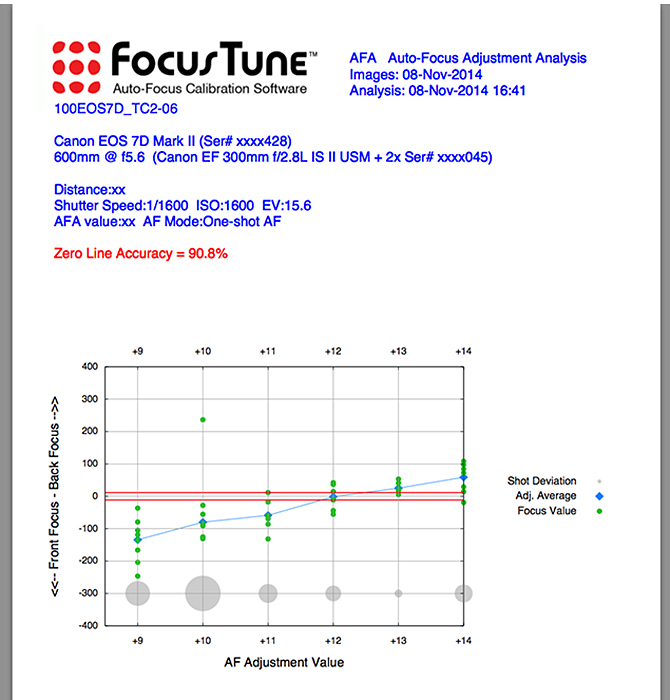
|
|
This is a FocusTune AFA graph for a narrow set of test images.
|
A FocusTune AFA graph for a narrow set of test images
This AFA chart is for our final series of test images with the 300 II, the 2X III, and my new 7D Mark II. Here we confidently set +12 as the MA.
For me working with FocusTune was a ton of fun; no more eye-balling it, no more “it looks as if….”, no more guessing. Working with FocusTune allows you to work precisely and to be sure of your results. Tutorials coming.
|

|
|
Do consider joining me for a once in a lifetime trip to the Galapagos archipelago in July, 2015.
|
GALAPAGOS Photo Cruise of a Lifetime IPT/The Complete Galapagos Photographic Experience. July 14-28, 2015 on the boat. 13 FULL and two half-days of photography: $12,499. Limit 14 including the leader:/Openings: 4.
My two-week Galapagos Photo-Cruises are without equal. The world’s best guide, a killer itinerary, a great boat (the Samba), and the best leader with eight Galapagos cruises under his belt. Pre-trip and pre-landing location-specific gear advice. In-the-field photo instruction and guidance. Jeez, I almost forgot: fine dining at sea!
The great spots that we will visit include Tower Island (including Prince Phillips Steps and Darwin Bay), Hood Island (including Punta Suarez, the world’s only nesting site of Waved Albatross, and Gardner Bay)—each of the preceding are world class wildlife photography designations that rank right up there with Antarctica, Africa, and Midway. We will also visit Fernandina, Puerto Ayora for the tortoises, Puerto Egas—James Bay, North Seymour and Isla Lobos for nesting Blue-footed Booby (most years), South Plaza, Floreana, and Urbina Bay, all spectacular in their own right. We visit every great spot on a single trip. Plus tons more. And there will he lots of opportunities to snorkel on sunny mid-days for those like me who wish to partake.
We will be the first boat on each island in the morning and the last boat to leave each island every afternoon. If we are blessed with overcast weather, we will often spend 5-6 hours at the best sites. And as noted above, mid-day snorkeling is an option on most sunny days depending on location. Note: some of the walks are a bit strenuous. Great images are possible on all landings with a hand held 70-200mm lens and a 1.4X teleconverter. I bring a longer lens ashore on most landings as that fits my style. I generally work with either the Canon 300mm f/2.8L IS or the Canon 200-400mm f/4 L IS with Internal Extender.
Do know that there is a NatureScapes Galapagos trip: one week for $8495. Thus, my trip represents a tremendous value; why go all that way and miss half of the great photographic locations?
The Logistics
Fly to Guayacil, Ecuador on July 12, 2015. Travel insurance/rest day: July 13 (We may or may not offer a photo outing on the 13th). Fly to the archipelago on July 14 and board the Samba. Get off the boat on July 28. Fly to Guayacil that afternoon. Fly home on the early morning of July 29 unless you are staying on or going elsewhere (or catching a red-eye flight on the evening of the 28th).
$12,499 includes just about everything: all transfers, guide and park fees, all food on the boat, transfers and ground transportation, your flights to the archipelago, and three nights (double occupancy) in a top notch hotel in Guayacil. If you are good to go, a non-refundable deposit of $5,000 per person is due immediately. The second payment of $4,000 is not due until 11/1/14. The final payment of $3449 per person will be due on 2/1/15. A $200 discount will be applied to each of the balances for couples or friends who register at the same time.
Purchasing travel insurance within 2 weeks of our cashing your deposit check is strongly recommended. On my past two cruises a total of 5 folks were forced to cancel less than one week prior to the trip. My family and I use Travel Insurance Services and strongly recommend that you do the same.
Not included: your round trip airfare from your home to and from Guayacil, beverages on the boat, phone calls, your meals in Guayacil, personal items, and a $600/person cash tip for the crew and the guide—this works out to roughly $40/day to be shared by the 7 folks who will be waiting on us hand and foot every day for two weeks. The service is so wonderful that many folks choose to tip extra.
Please e-mail for the complete itinerary and for additional info and images. Please cut and paste “Galapagos 2015 Info Please) into the Subject line.
Facebook
Be sure to like and follow BAA on Facebook by clicking on the logo link upper right. Tanks a stack!
Support the BAA Blog. Support the BAA Bulletins: Shop B&H here!
We want and need to keep providing you with the latest free information, photography and Photoshop lessons, and all manner of related information. Show your appreciation by making your purchases immediately after clicking on any of our B&H or Amazon Affiliate links in this blog post. Remember, B&H ain’t just photography!
…..
Amazon.com
Those who prefer to support BAA by shopping with Amazon may use this link:
Amazon Canada
Many kind folks from north of the border, eh, have e-mailed stating that they would love to help us out by using one of our affiliate links but that living in Canada and doing so presents numerous problems. Now, they can help us out by using our Amazon Canada affiliate link by starting their searches by clicking here. Many thanks to those who have written.
Typos
In all blog posts and Bulletins, feel free to e-mail or to leave a comment regarding any typos or errors. Just be right :).
November 9th, 2014 The Streak Continues: 344
Yesterday I began working with my “Love Affair with Bosque” keynote program that I will be presenting on Friday afternoon, November 21, at the Festival of the Cranes. This program is free and open to the public but you must register. If you are in the vicinity, it would be foolish of you not to attend :). Scroll down here for details or to register.
Michael Tapes, the creator of LensAlign, was here most of the day. We worked on creating a tutorial for his totally amazing Focus Tune software. We successfully micro-adjusted my very own brand new Canon EOS-7D Mark II alone, with the 1.4X III TC, and with the 2X III TC. Learn more in tomorrow’s blog post.
We worked so long and hard that I had no swim and no ice bath. After he left I took a short nap and then went to bed way early. This blog post, the 344th in a row, took three hours to prepare. It was published from my home at Indian Lake Estates just after 6:00am.
In the good news department we filled one of the four remaining slots on the two Palouse IPTs yesterday.
Please Help Support My Work on the BAA Blog
Thanks a Stack! October was a Great Month.
October was a very rewarding month. Thanks a stack to all who used our B&H links for purchases large and small.
To show your appreciation for my efforts here, we ask, as always, that you use our the B&H and Amazon affiliate links on the right side of the blog for all of your purchases. B&H Is recommended for you major photography gear purchases, Amazon for your household, entertainment, and general purpose stuff. Please check the availability of all photographic accessories in the BIRDS AS ART Online Store, especially Gitzo tripods, Wimberley tripod heads, and the like. We sell only what I have used, have tested, and can depend on. We will not sell you junk. We know what you need to make creating great images easy and fun. And we are always glad to answer your gear questions via e-mail.
I would of course appreciate your using our B&H affiliate links for all of your major gear, video, and electronic purchases. For the photographic stuff mentioned in the paragraph above we, meaning BAA, would of course greatly appreciate your business. Here is a huge thank you to the many who have been using our links on a regular basis and visiting the BAA Online store as well.


If what you’ve learned here on my blog about the Canon EOS-7D Mark II has inspired you to purchase this great new camera body, please consider using the logo link above to support our efforts here in bringing you the latest, greatest educational materials on daily basis.
|
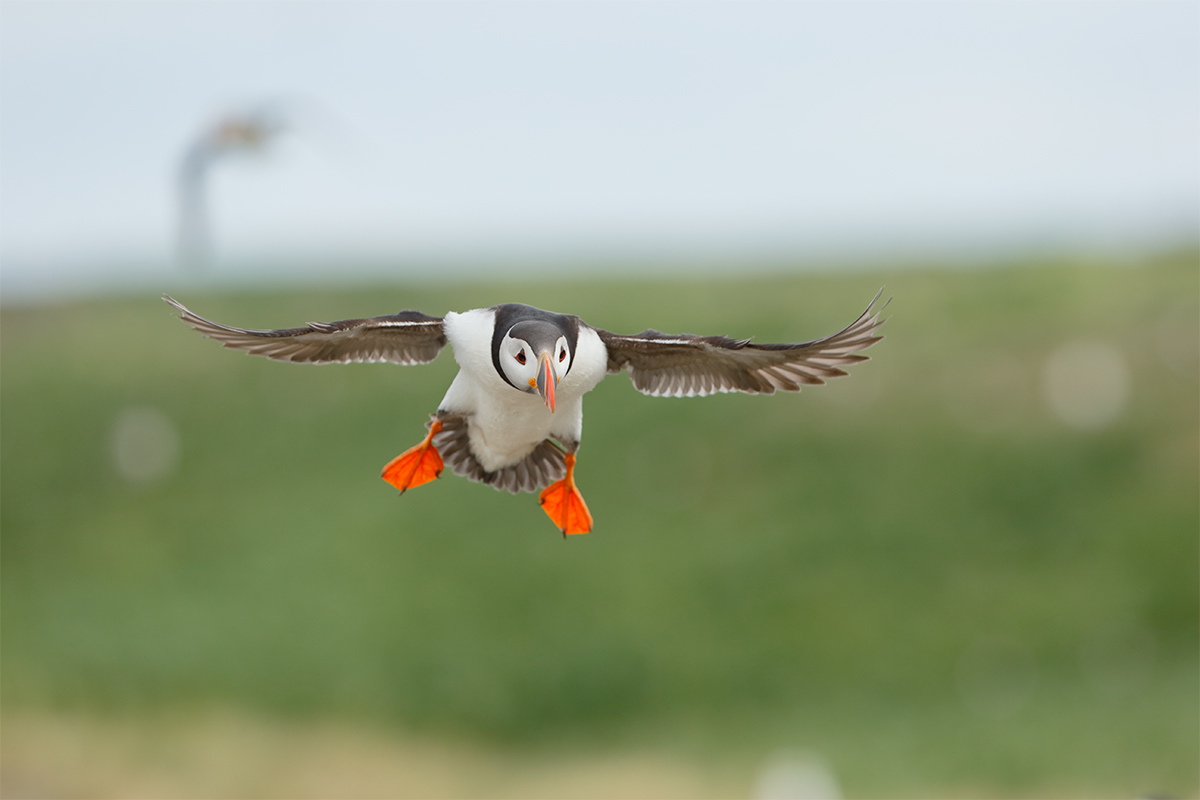
|
|
This image was created on last year’s hugely successful UK Puffins and Gannets IPT with the hand held Canon EF 300mm f/2.8L IS II USM lens and the Canon EOS-1D X. ISO 800. Evaluative metering +1 1/3 stops off the light blue sky: 1/3200 sec. at f/4.5 in Manual Av mode. Cloudy WB.
Central sensor/AI Servo Expand/Rear Focus AF on the side of the bird’s breast below the bird’s left wing was active at the moment of exposure. Do understand that this left one active sensor squarely on the puffin’s face. Click here to see the latest version of the Rear Focus Tutorial. Click on the image to see a larger version.
|
Planning the Incoming Atlantic Puffin in flight Image Optimization
Before you scroll down, make a mental plan detailing the steps you would take in optimizing this image. Include the steps and the tools you would use to execute your vision. The JPEG above represents the RAW file after conversion in DPP 4.0.
|
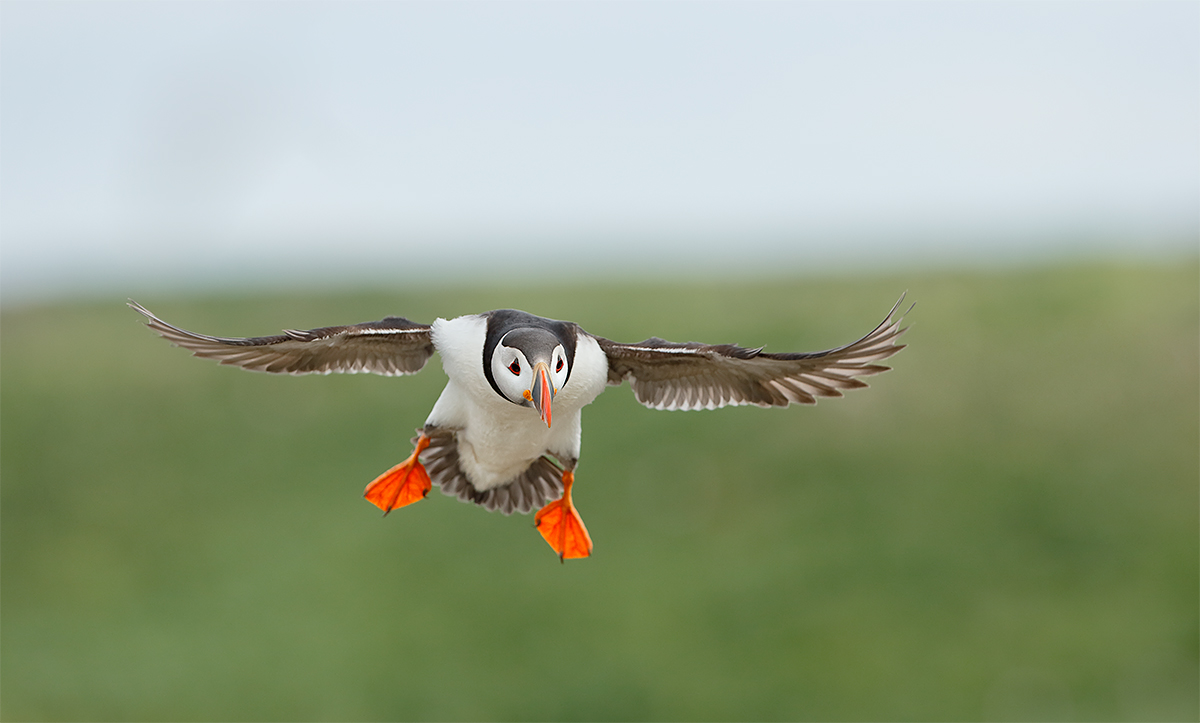
|
|
This is the optimized image that was created from the original image above.
Image #1: Incoming Atlantic Puffin in flight
|
The Incoming Atlantic Puffin in flight Image Optimization
After converting the RAW file in DPP 4 I did most of the clean-up work with the Patch Tool. Next I selected and sharpened the bird’s face with a Contrast Mask. Then I selected the bird with the Quick Selection Tool, ran my NIK 25-25 recipe on a Layer, and reduced the opacity just a bit. Total time in Photoshop: 4 minutes.
|
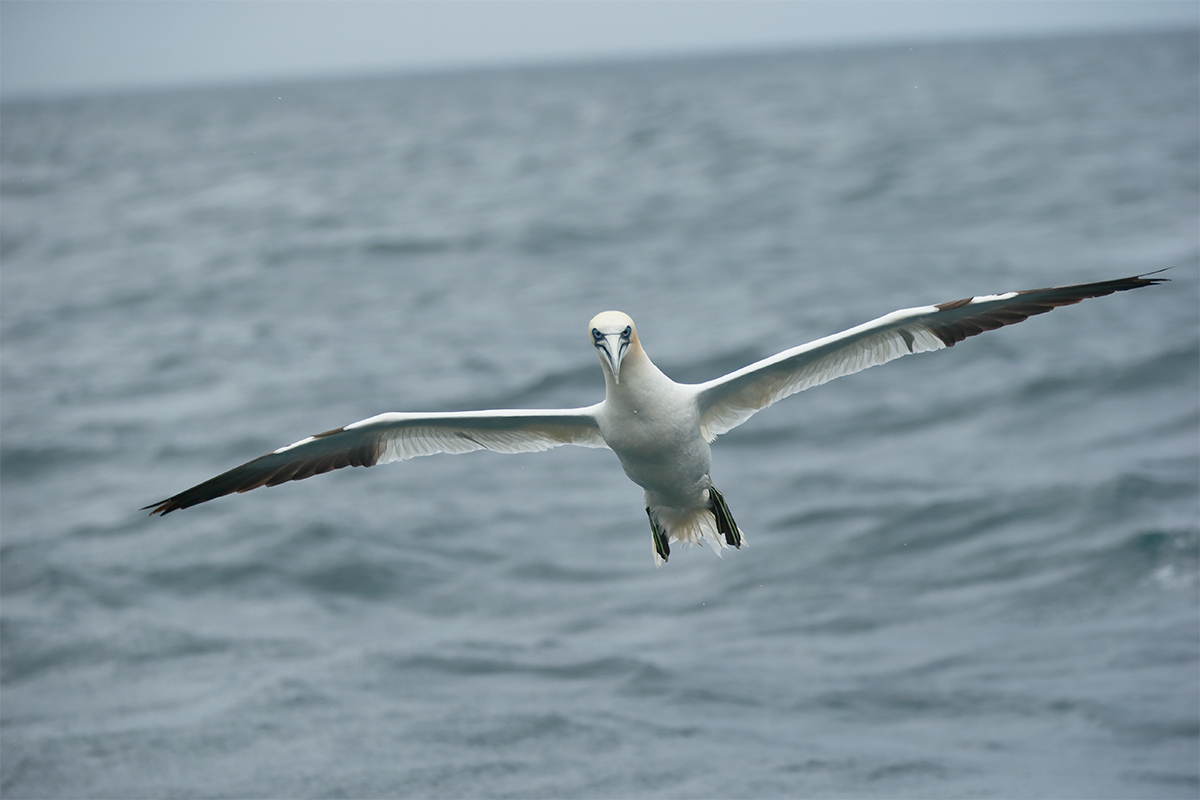
|
|
This image was also created on last year’s hugely successful UK Puffins and Gannets IPT, this one with the Canon EF 70-200mm f/2.8L IS II lens , the Canon 1.4x EF Extender III (Teleconverter) (hand held at 170mm), and the Canon EOS-1D X. ISO 640. Evaluative metering + 1 2/3 stops off the dreary sky: 1/2000 sec. at f/4 in Manual mode was about a half stop underexposure. Cloudy WB.
Central sensor/AI Servo Expand/Rear Focus AF on the side of the bird’s breast where it meets the base of the right wing was active at the moment of exposure. Click here if you missed the Rear Focus Tutorial. Be sure to click on the image to see a larger version.
|
Planning the Northern Gannet getting ready to dive Image Optimization
Before you scroll down, make a mental plan detailing the steps you would take in optimizing this image. Include the steps and the tools you would use to execute your vision. The JPEG above represents the RAW file after conversion in DPP 4.0.
Be sure to scroll down to the see the optimized version and learn what I did.
|
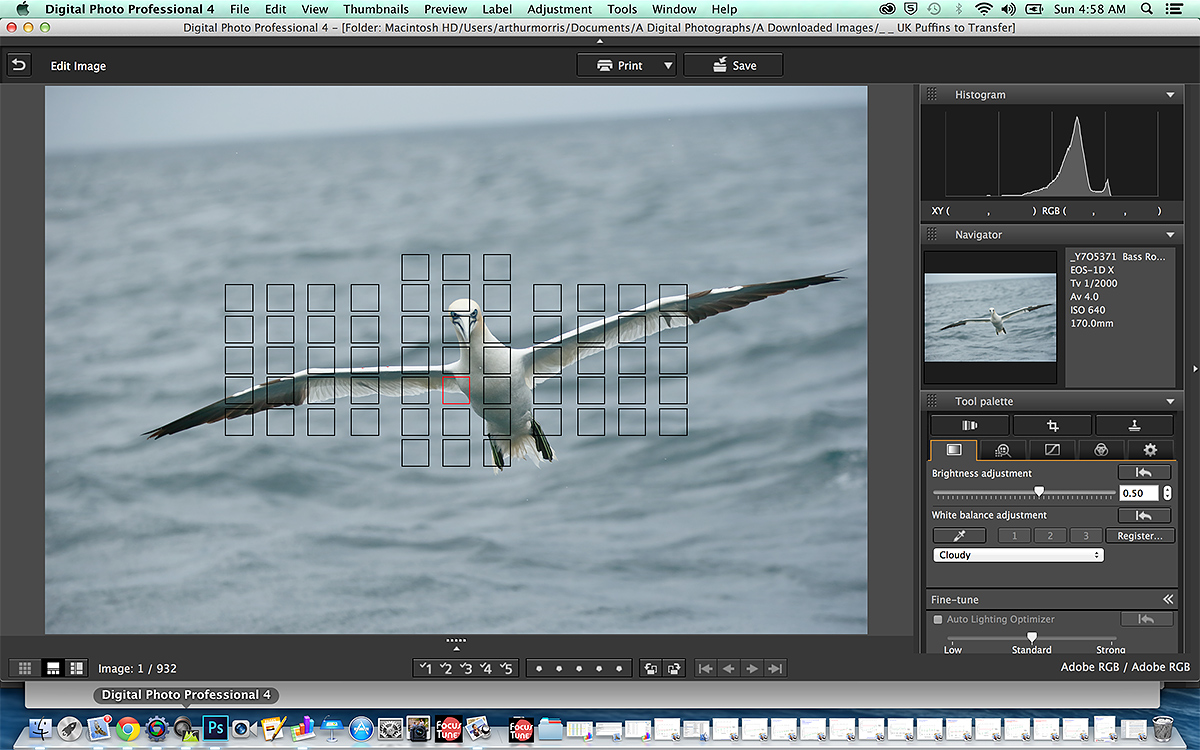
|
DPP 4 screen capture for Northern Gannet getting ready to dive image
|
The DPP 4 Screen Capture
The DPP 4 screen capture for the Northern Gannet getting ready to dive image shows the selected AF point and the Brightness slider used to add 1/2 stop of light to the RAW image. Lots more adjustments that you cannot see were made on this, the Perform basic image adjustment tab. I use this tab, the Adjust image detail tab, and the Perform image lens correction on all images. On occasion I use the Adjust image colors tab. The other four tabs are used rarely if ever.
|

|
|
DPP 4 is completely new and different from the various versions of DPP 3. It handles files only from the following cameras: EOS-1D X, EOS 5D Mark III, EOS-6D, and the EOS-7D Mark II.
|
Great 7D II/DPP v4.01.0 News
An updated version of Canon Digital Photo Professional that supports RAW files from the EOS-7D Mark II was made available for download the Canon USA website. Though some folks had trouble getting access to the Mac version of DPP v4.1.0.1 I was able to download and install it easily yesterday evening. Hint for Mac folks: after you double click on the downloaded zip file you need to go to your desktop and click on the icon that was magically created there in order to begin the installation.
To download DPP v4.1 first click here and then click on Drivers and Software and follow the prompts.
|

|
|
The Photographers’ Guide to Canon Digital Photo Professional 4.0 by Arash Hazeghi and Arthur Morris is now available. Click here to order.
|
The DPP 4 eGuide (PDF)
BIRDS AS ART is proud to announce the release of The Photographers’ Guide to Canon Digital Photo Professional 4.0 by Arash Hazeghi and Arthur Morris: $40.
Artie first went to DPP because he was not happy with the colors he was getting with 1D X and 5D III images from ACR (Adobe Camera Raw). Though less than intuitive, he found it fast and easy to use once he mastered the basics. He collaborated with Arash Hazeghi on the first DPP RAW Conversion Guide. Do understand that the DPP RAW Conversion Guide details the use of various iterations of DPP 3. He calls those the DPP 3.whatever versions. The latest version is DPP 3.14.41.0.
Some time ago Canon released DPP 4.0, completely and utterly new and different from DPP 3. When it was introduced DPP 4 worked only EOS-1D X, EOS-5D Mark III, and EOS-6D images and that is still the case today. It will not work with RAW files from older Canon digital camera bodies. Both authors are hoping that a new version of DPP 4 that will convert EOS-7D Mark II images will be released soon.
In the meantime, DPP 4 performs superbly with his 1D X and 5D III images. When he first opened DPP 4 he felt as if he were in the cockpit of a Boeing 747 and was being asked to fly it. There were so many tabs and buttons and controls that he simply closed the program. He immediately called Arash and asked him if he wanted to work together on a DPP 4 guide. After 100s of hours of work the guide is now ready to teach you to conveniently and easily use DPP 4 to create the finest possible image files from your 1D X, 5D III, and 6D image files. Basically, Arash sent artie a sophisticated outline that he re-crafted into a clear, concise, easily understood, and easy to follow how-to guide written in the BAA style. Arash created all of the charts, diagrams, and graphics.
His charts with recommendations for both Chrominance and Luminance Noise Reduction values for each of the 3 covered cameras at various ISO settings are alone worth the price of the book. He spent many dozens of hours experimenting with high ISO RAW files and shares his findings with you in the DPP 4 Guide. Folks will surely want to create some sort of easily accessible quick reference on their laptops and home computers.
DPP offers a host of great features some but not all of which are reminiscent of ACR. These include the following: Multi-image display, the extremely valuable Before/after Comparison layout, Highlight/shadow warnings, White Balance, and the eight RAW Conversion tabs that include sliders for Brightness, Highlights, Shadows, Contrast, Hue-Saturation, Color Tone, Sharpness, Noise Reduction, HSL (Hue/Saturation/Luminance), Lens Corrections, and Digital Lens Optimizer among others. We teach you how to best utilize each of those and many more. We share our slightly different DPP workflows and dozens of tips that will simply make your life easier. Arash uses DPP4′s rating system for choosing his keepers while artie continues to rely on BreezeBrowser Pro for that. DPP offers a variety of sorting filters. We explain all of the options. In addition, we teach you how to set your preferences and how to arrange your workspace for the greatest efficiency.
Both authors firmly believe that the manufacturer’s conversion algorithms will always out-perform 2nd party software when it comes to preserving image quality, fine detail, and accurate color rendition.
The authors wish to thank Chuck Westfall and Rudy Winston of Canon USA for their help; they are always available to answer our nit-picking questions. Sincere thanks also to Ken Kovak, Bob Schwartz, Dane Johnson, and John Stuhlmuller for their thoughtful and substantive reviews of late drafts of the DPP 4 manuscript.
You can order your copy of the DPP 4 Guide for $40 through the BAA Online Store by clicking here, by calling Jim or Jen in the office at 863-692-0906 with credit card in hand, by sending us a check made out to “Arthur Morris” or a money order for $40 to BIRDS AS ART, PO Box 7245, Indian Lake Estates, FL 33855, or by by sending a Paypal for $40 to e-mail. IN the latter two instances be sure to note DPP 4 Guide so we know what you are ordering :).
Note: the Sharpness and Noise Reduction Charts will be updated to include the recommended values for the 7D Mark II. I have been sending RAW files to Arash for several days. Now Arash has a lot more work to do. For those who have purchased the DPP 4 Guide, the update will of course be free but please be patient.
Those using older Canon camera bodies like the 1D Mark IV, the 7D, the 50D, the 40D, the various Rebels (not highly recommended for serious nature photography), are directed to the original DPP RAW Conversion Guide click here. DPP 3 (the latest version is DPP v3.14.41.0) does a fine job of converting images from the older camera bodies. I used it for several years.
DPP 4 eGuide Kudos via e-mail from Melvin Grey
Artie, Thank you very much for creating and sending the superb new guide and for the excellent service.THANK YOU and ARASH, once again, for an invaluable guide and THANK YOU for your continuing educational blogs. Melvin
|
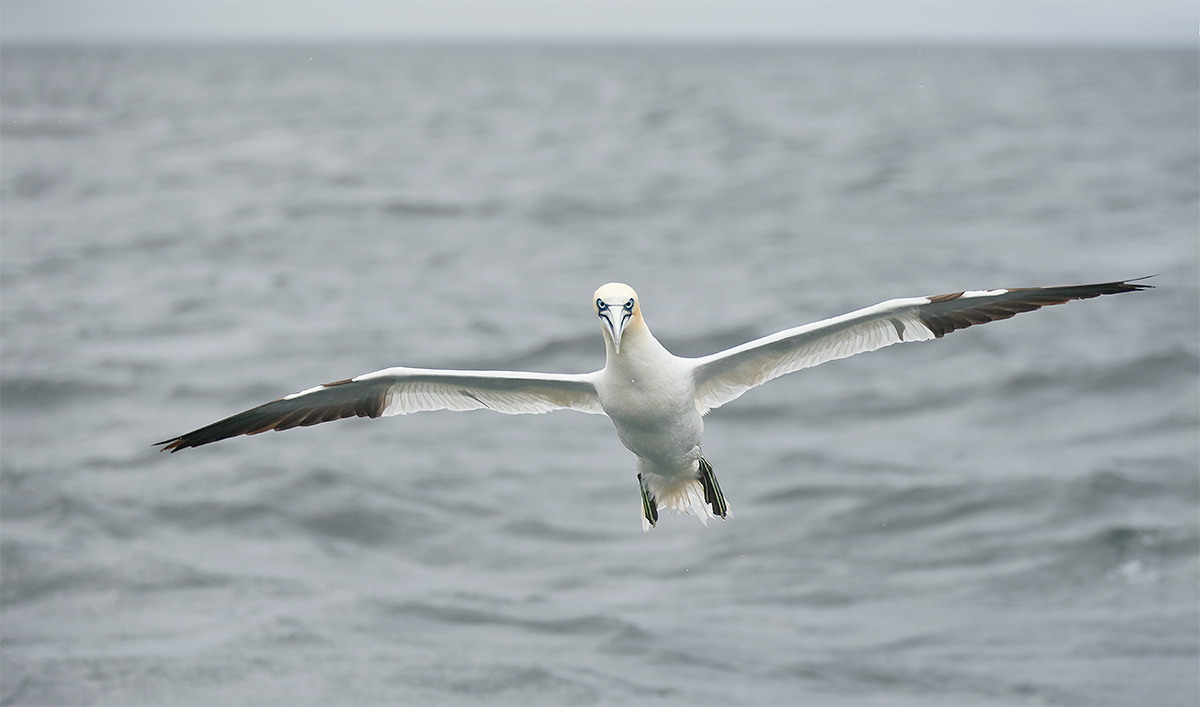
|
Image #2: Northern Gannet getting ready to dive
|
The Northern Gannet getting ready to dive Image Optimization
First I leveled the image and filled in the blank canvas using the John Haedo Content Aware Fill technique. After that, much of the work here dealt with exposure, contrast, and color issues. The original was underexposed with a pretty good (or pretty bad….) CYAN color cast. After working on the whole image I selected the whole bird with the Quick Selection Tool, ran a Layer of my NIK 25-25 recipe, and then pulled the curve up to further brighten the WHITES.
I did some extensive Eye Doctor that included darkening the pupil and lightening the iris, both of those via painted Quick Masks. At that point I was still not happy with the color work that I did so I reduced the CYAN saturation about 50 points. That made the color seem much more natural to me.
You can see more 70-200 gannet images from last year’s IPT here.
Digital Basics
Everything that I did to optimize both of today’s images is covered in detail in my Digital Basics File–written in my easy-to-follow, easy-to-understand style. Are you tired of making your images look worse in Photoshop? Digital Basics File is an instructional PDF that is sent via e-mail. It includes my complete digital workflow, dozens of great Photoshop tips (including the Surface Blur settings as taught to me by Denise Ippolito), details on using all of my image clean-up tools, the use of Contrast Masks, several different ways of expanding and filling in canvas, all of my time-saving Keyboard Shortcuts, Quick Masking, Layer Masking, and NIK Color Efex Pro basics, Contrast Masks, Digital Eye Doctor techniques, using Gaussian Blurs, Tim Grey Dodge and Burn, a variety of ways to make selections, how to create time-saving actions, and tons more.
APTATS I & II
Learn the details of advanced Quick Masking techniques in APTATS I. Learn Advanced Layer Masking Techniques in APTATS II. Mention this blog post and apply a $5 discount to either with phone orders only. Buy both APTATS I and APTATS II and we will be glad to apply at $15 discount with phone orders only. Please call Jim or Jennifer at 863-692-0906 weekdays to order.
|

|
|
Images and card design copyright 2014: Arthur Morris/BIRDS AS ART. Click on the card to enjoy a spectacular larger version.
|
The 2015 UK Puffins and Gannets IPT
June 29 through July 5, 2015: $5499: Limit 10 photographers/Openings 2. Two great leaders: Denise Ippolito and Arthur Morris.
Here are the plans for next year: take a red eye from the east coast of the US on 28 June arriving in Edinburgh, Scotland on the morning of Monday 29 June (or simply meet us then either at the Edinburgh Airport (EDI) or later in the day at our cottages if you are driving your own vehicle either from the UK or from somewhere in Europe. Stay 7 nights in two gorgeous modern country cottages.
There are 5 days of planned puffin/seabird trips—weather permitting, and 1 full day of gannet photography with 2 sessions on the boat.
|

|
|
Images and card design copyright 2014: Arthur Morris/BIRDS AS ART. Click on the card to enjoy a spectacular larger version.
|
The Details
We will be staying in upscale country-side cottages that are beyond lovely with large living areas and lots of open space for image sharing and Photoshop lessons. The shared rooms are decent-sized, each with two roomy single beds and a private bathroom. See the single supplement info below.
All breakfasts, lunches and dinners are included. All 5 puffins boat lunches will need to be prepared in advance, taken with, and consumed at your leisure. I usually eat mine on the short boat trip from one island to the other. Also included is a restaurant lunch on the gannet boat day and a farewell fine dining thank you dinner. The cost of your National Heritage Trust is also included; that covers the twice a day landing fees.
Plan to fly home on the early morning of Monday 6 July or to continue your stay or travels.
|

|
|
Images and card design copyright 2014: Arthur Morris/BIRDS AS ART. Click on the card to enjoy a spectacular larger version. Scroll down to join us in the UK in 2015.
|
Single Supplement Info
The single supplement is $1475. As we will be renting a third cottage the $1475 is due with your deposit and is also non-refundable.
If you are good to go please send your $2,000 deposit check now to save a spot. Please make your check out to “Arthur Morris” and send it to Arthur Morris/BIRDS AS ART, PO Box 7245, Indian Lake Estates, FL, 33855. If you cancel and the trip fills, we will be glad to apply a credit applicable to a future IPT for the full amount less a $100 processing fee. If we do not receive your check for the balance on or before the due date we will try to fill your spot from the waiting list. Whether or not your spot is filled, you will lose your deposit. If not, you can secure your spot by paying your balance.
We do hope that you can join us.
Facebook
Be sure to like and follow BAA on Facebook by clicking on the logo link upper right. Tanks a stack!
Support the BAA Blog. Support the BAA Bulletins: Shop B&H here!
We want and need to keep providing you with the latest free information, photography and Photoshop lessons, and all manner of related information. Show your appreciation by making your purchases immediately after clicking on any of our B&H or Amazon Affiliate links in this blog post. Remember, B&H ain’t just photography!
…..
Amazon.com
Those who prefer to support BAA by shopping with Amazon may use this link:
Amazon Canada
Many kind folks from north of the border, eh, have e-mailed stating that they would love to help us out by using one of our affiliate links but that living in Canada and doing so presents numerous problems. Now, they can help us out by using our Amazon Canada affiliate link by starting their searches by clicking here. Many thanks to those who have written.
Typos
In all blog posts and Bulletins, feel free to e-mail or to leave a comment regarding any typos or errors. Just be right :).
November 8th, 2014 The Streak Continues: 343
Yesterday I finished up the two Bosque Photo Seminar programs that Denise Ippolito and I are presenting on Thursday afternoon, November 20, at the Festival of the Cranes. If you are in the vicinity, it would be foolish of you not to attend :). Scroll down here for details or to register.
I enjoyed an easy 3/4 mile swim and a nice nap. This blog post, the 343rd in a row, took about two hours to prepare. It was published from my home at Indian Lake Estates just before 6:00am.
Please Help Support My Work on the BAA Blog
Thanks a Stack! October was a Great Month.
October was a very rewarding month. Thanks a stack to all who used our B&H links for purchases large and small.
To show your appreciation for my efforts here, we ask, as always, that you use our the B&H and Amazon affiliate links on the right side of the blog for all of your purchases. B&H Is recommended for you major photography gear purchases, Amazon for your household, entertainment, and general purpose stuff. Please check the availability of all photographic accessories in the BIRDS AS ART Online Store, especially Gitzo tripods, Wimberley tripod heads, and the like. We sell only what I have used, have tested, and can depend on. We will not sell you junk. We know what you need to make creating great images easy and fun. And we are always glad to answer your gear questions via e-mail.
I would of course appreciate your using our B&H affiliate links for all of your major gear, video, and electronic purchases. For the photographic stuff mentioned in the paragraph above we, meaning BAA, would of course greatly appreciate your business. Here is a huge thank you to the many who have been using our links on a regular basis and visiting the BAA Online store as well.


If what you’ve learned here on my blog about the Canon EOS-7D Mark II has inspired you to purchase this great new camera body, please consider using the logo link above to support our efforts here in bringing you the latest, greatest educational materials on daily basis.
|
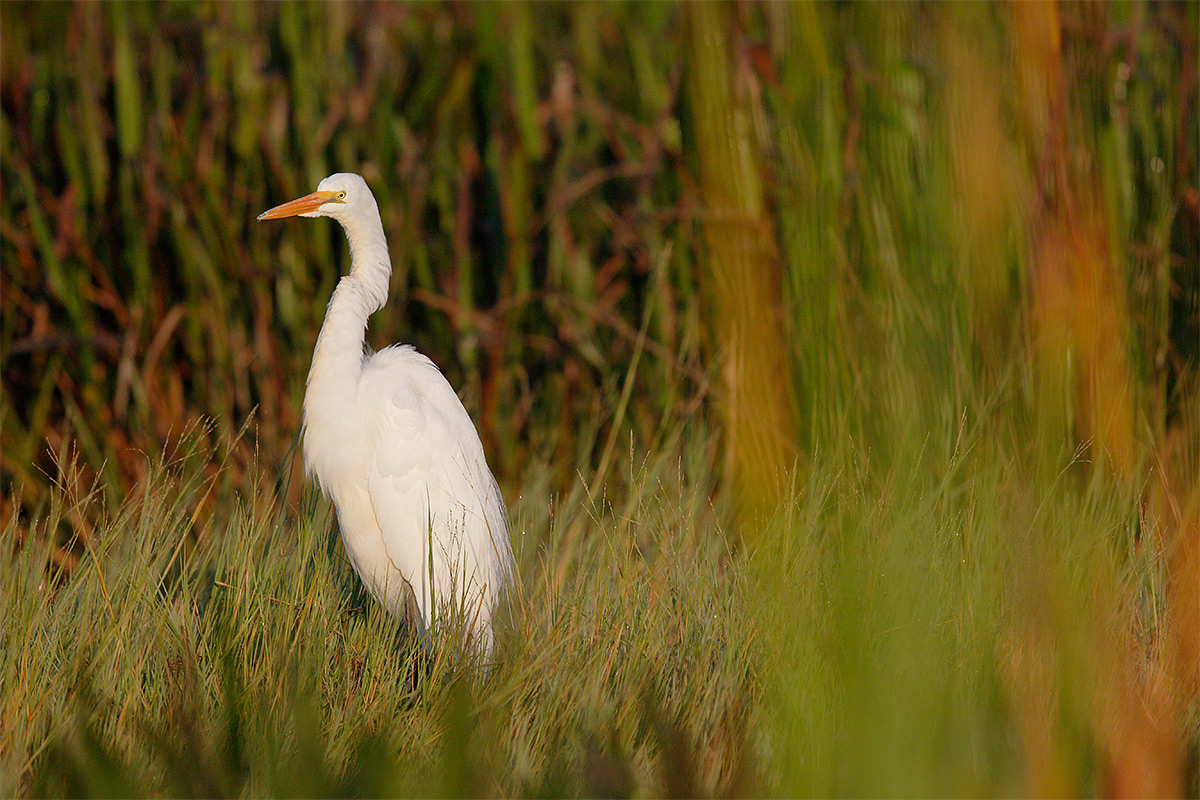
|
|
This image was created at 8:14am on the crystal clear morning of October 30, 2014. I used the Canon EF 600mm f/4L IS II USM lens and a beta version of the Canon EOS 7D Mark II . ISO 400. Evaluative metering -1 stop as framed: 1/5000 sec. at f/4 in Manual mode.
Central Sensor/AI Servo Surround/Rear Focus AF on the bird’s face and re-compose. Click here to see the latest version of the Rear Focus Tutorial. Click on the image to see a larger version.
From the Sequoia with the lens supported by the BLUBB (my custom-designed, hand made Big Lens Ultimate Bean Bag). When working on a beanbag with a long lens and re-composing be absolutely sure that the focusing ring does not rest on the beanbag lest you throw off accurate focus when re-composing.
Image #1: Great Egret and cattails
|
Image Design Thoughts for Image #1
The pattern of the reeds to the right of the subject was much neater and more pleasing than the patter of the reeds to the left of the bird so it was an easy decision to put the bird on the left looking out of the frame.
|
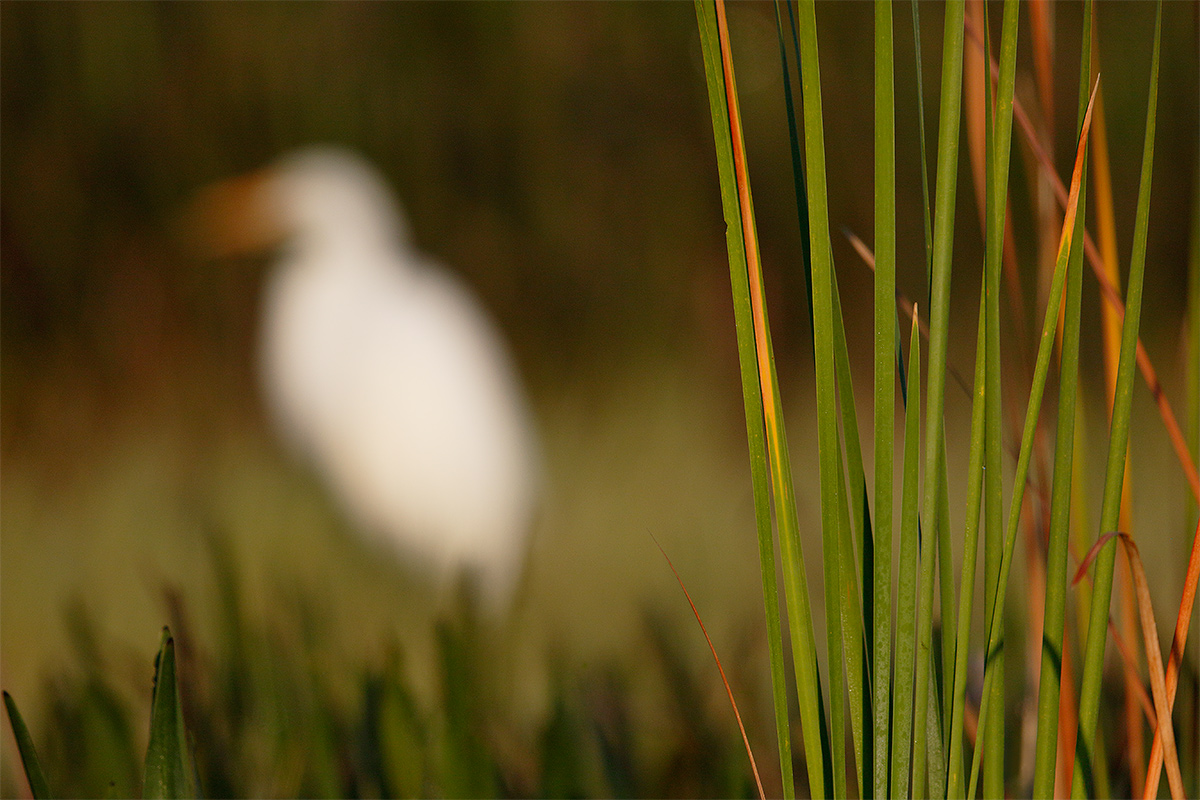
|
|
This image was created at 8:14am on the crystal clear morning of October 30, 2014. I used the Canon EF 600mm f/4L IS II USM lens and a beta version of the Canon EOS 7D Mark II . ISO 400. Evaluative metering -1 stop as framed: 1/5000 sec. at f/4 in Manual mode.
I tried central Sensor/AI Servo Surround/Rear Focus AF on the reeds but it would not hold so I went to central sensor and that worked better. But not much. Released the button after focus was attained and re-composed. Click here to see the latest version of the Rear Focus Tutorial. Click on the image to see a larger version.
From the Sequoia with the lens supported by the BLUBB (my custom-designed, hand made Big Lens Ultimate Bean Bag). When working on a beanbag with a long lens and re-composing be absolutely sure that the focusing ring does not rest on the beanbag lest you throw off accurate focus when re-composing.
Image #2: Great Egret and cattails/oof bird A
|
Image Design Thoughts for Image #2
Next I decided to try something out of the box. With some difficulty, I focused on the reeds and then recomposed. I believe that the AF system could not decide whether to focus on the reeds or the more distant background; as a result, it kept jumping around. When I did get sharp focus on the reeds, that left the bird attractively out of focus. What was my motivation? I am always making an effort to come up with something new and different.
|
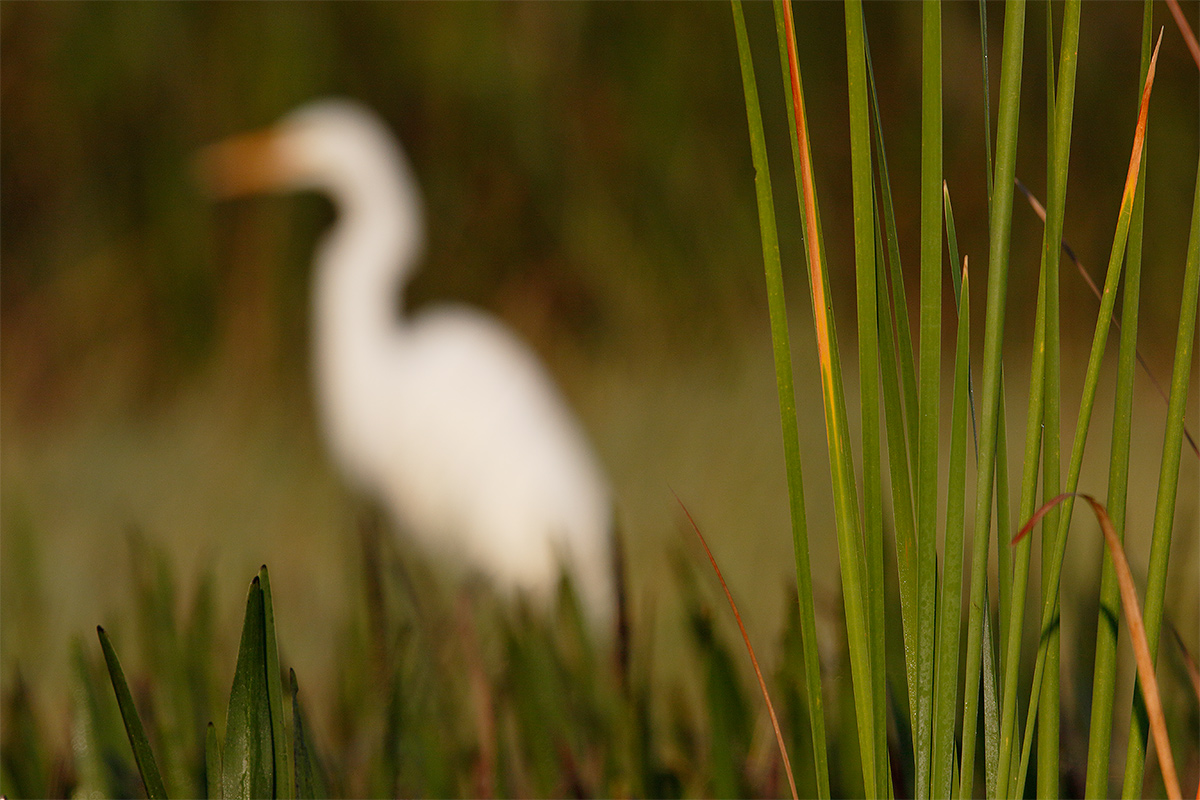
|
|
This image was created at 8:14am on the crystal clear morning of October 30, 2014. I used the Canon EF 600mm f/4L IS II USM lens and a beta version of the Canon EOS 7D Mark II . ISO 400. Evaluative metering -1 stop as framed: 1/2500 sec. at f/5.6 in Manual mode.
I tried central Sensor/AI Servo Surround/Rear Focus AF on the reeds but it would not hold so I went to central sensor and that worked better. But not much. Released the button after focus was attained and re-composed. Click here to see the latest version of the Rear Focus Tutorial. Click on the image to see a larger version.
From the Sequoia with the lens supported by the BLUBB (my custom-designed, hand made Big Lens Ultimate Bean Bag). When working on a beanbag with a long lens and re-composing be absolutely sure that the focusing ring does not rest on the beanbag lest you throw off accurate focus when re-composing.
Image #3: Great Egret and cattails/oof bird B
|
Image Design Thoughts for Image #3
For the second bird oof image, I stopped down from f/4 to f/5.6. Why? To see if there would be a discernible difference. Though the two bird oof images are different, I am not sure if the differences are due entirely to the change of the bird’s posture or to the difference in the aperture.
Your Thoughts?
Which of the three images do you think is the strongest? Why? Which of the images is your favorite? Why? Of the two images with the oof subject, which is the stronger? Why? If you do not like any of the images, that is fine too. Let us know why.
I feel strongly that one of the 3 images is best by far. I will share my thoughts with you in a future blog post.
|

|
|
Learn the secrets of creating contest winning images in our “A Guide to Pleasing Blurs.”
|
A Guide to Pleasing Blurs
While lying in bed in the middle of last night and thinking of finishing this blog post, I realized that the two oof bird images were actually de-focused blurs, one of the many categories that we discuss and detail in our great eGuide, A Guide to Pleasing Blurs by Denise Ippolito and yours truly.
Pleasing Blurs are not accidents. Learn pretty much everything that there is about creating them in this instructive (as always) guide.
|

|
|
Card and design by Denise Ippolito. Scroll down here to see lots more of Denise’s Palouse images.
|
Palouse #1. The Palouse A Creative Adventure/BIRDS AS ART Instructional Photo-Tour (IPT)/Eastern Washington State. May 29-June 2, 2015/5 Full Days: $1699/Limit 12 photographers/Openings: 2.
Due to two cancellations on the same day, we now have two openings on this long sold out trip. See item next for additional details.
|

|
|
Card and design by Arthur Morris/BIRDS AS ART.
|
The Palouse A Creative Adventure/BIRDS AS ART Instructional Photo-Tour (IPT)/Eastern Washington State. June 5-9, 2015/5 Full Days: $1699/Limit 12 photographers/Openings 2.
Rolling farmlands provide a magical patchwork of textures and colors, especially when viewed from the top of Steptoe Butte where we will likely enjoy spectacular sunrises and possibly a nice sunset or two. We will photograph grand landscapes and mini-scenics of the rolling hills and farm fields. We will take you to some really neat old abandoned barns and farmhouses in idyllic settings. There is no better way to improve your compositional and image design skills and to develop your creativity than to join us for this trip. Two great leaders: Denise Ippolito and Arthur Morris. Photoshop and image sharing sessions when we have the time and energy…. We get up early and stay out late and the days are long.
After 6 days of back-breaking scouting work in early June 2014 we found all of the iconic locations and, in addition, lots of spectacular new old barns and breath-taking landforms and views. We will teach you what makes one situation prime and another seemingly similar one a waste of your time.
What’s included: In-the-field instruction, guidance, lessons, and inspiration, our newfound but very extensive knowledge of the area, all lunches, motel lobby breakfasts, and Photoshop and image sharing sessions when possible.
You will learn and hone both basic and advanced compositional and image design skills. You will learn to get the right exposure every time. You will learn to develop your creative eye. You will learn the basics of HDR (high dynamic range) photography. You will learn a variety of in-camera creative techniques; Canon 5D Mark III bodies are a plus. And most importantly you will learn to see the situation and to create a variety of top-notch images. Do see both of our blogs for lots more on that in the coming weeks. You will learn how the quality and direction of light combine to determine the success of your images. And–please don’t gasp–we will be working quite a bit with sidelight when creating landscapes. Lastly, we will be touching on infrared photography.
A non-refundable $699 deposit is due now. The balance will be due on January 29, 2015. If you cancel and the trip fills, we will be glad to apply a credit applicable to a future IPT for the full amount less a $100 processing fee. If we do not receive your check for the balance on or before the due date we will try to fill your spot from the waiting list. Whether or not your spot is filled, you will lose your deposit. If not, you can secure your spot by paying your balance.
With the unpredictable nature of the photography business, I have not said this often lately, but it seems quite likely that this one will fill up very quickly. Please let me know via e-mail that you will be joining us. Then you can either call Jim or Jennifer at 863-692-0906 during business hours or send us a check; the latter is preferred.
Please send your deposit check made out to “Arthur Morris” to us at Arthur Morris/BIRDS AS ART, PO Box 7245, Indian Lake Estates, FL, 33855. If you have any questions, please feel free to contact me via e-mail. You can also contact denise via e-mail here
Facebook
Be sure to like and follow BAA on Facebook by clicking on the logo link upper right. Tanks a stack!
Support the BAA Blog. Support the BAA Bulletins: Shop B&H here!
We want and need to keep providing you with the latest free information, photography and Photoshop lessons, and all manner of related information. Show your appreciation by making your purchases immediately after clicking on any of our B&H or Amazon Affiliate links in this blog post. Remember, B&H ain’t just photography!
…..
Amazon.com
Those who prefer to support BAA by shopping with Amazon may use this link:
Amazon Canada
Many kind folks from north of the border, eh, have e-mailed stating that they would love to help us out by using one of our affiliate links but that living in Canada and doing so presents numerous problems. Now, they can help us out by using our Amazon Canada affiliate link by starting their searches by clicking here. Many thanks to those who have written.
Typos
In all blog posts and Bulletins, feel free to e-mail or to leave a comment regarding any typos or errors. Just be right :).
November 7th, 2014 The Streak Continues: 342
Yesterday I worked on the Bosque Photo Seminar that Denise Ippolito and I are presenting on Thursday afternoon at the Festival of the Cranes. If you are in the vicinity, it would be foolish of you not to attend :). Scroll down here for details.
I enjoyed an easy 1/2 mile swim and a nice nap. This blog post, the 342nd in a row, took about two 1/2 hours to write: it was published from my home at Indian Lake Estates just before 6:30am.
Please Help Support My Work on the BAA Blog
Thanks a Stack! October was a Great Month.
October was a very rewarding month. Thanks a stack to all who used our B&H links for purchases large and small.
To show your appreciation for my efforts here, we ask, as always, that you use our the B&H and Amazon affiliate links on the right side of the blog for all of your purchases. B&H Is recommended for you major photography gear purchases, Amazon for your household, entertainment, and general purpose stuff. Please check the availability of all photographic accessories in the BIRDS AS ART Online Store, especially Gitzo tripods, Wimberley tripod heads, and the like. We sell only what I have used, have tested, and can depend on. We will not sell you junk. We know what you need to make creating great images easy and fun. And we are always glad to answer your gear questions via e-mail.
You can find the following items in the store: Gitzo tripods, Mongoose M3.6 and Wimberley heads, plates, low feet, and accessories, flash brackets, , Delkin e-film Pro Compact Flash Cards, LensCoat products, and our unique line-up of educational materials including ABP I & II, Digital Basics, Site and Set-up e-Guides, Canon and Nikon Camera Users and AF e-Guides, and MP-4 Photoshop video tutorials among others.
I would of course appreciate your using our B&H affiliate links for all of your major gear, video, and electronic purchases. For the photographic stuff mentioned in the paragraph above we, meaning BAA, would of course greatly appreciate your business. Here is a huge thank you to the many who have been using our links on a regular basis and visiting the BAA Online store as well.
Why Mac?
As pretty much everyone here knows, I have been working hard recently transitioning from I’m not sure of how many decades of using PCs to my new Apple 15.4″ MacBook Pro Notebook Computer with Retina Display .
More than a few folks have written asking why I made the change.
The answer, as if often the case as we get older, is a very simple one: weight.
Here is the tale of the tape:
My old HP, the rugged, reliable, industrial strength Elite Book 8740W, served me well for more than five years. It functions as well today as it did the day I took it out of the box. As I recall, it failed after a day or two–it needed a new mother board. Since then it has a perfect record. IAC, it weighs 8 pounds, 2.5 ounces. The AC adapter, in this case appropriately called “the brick” by many, weighs 2 pounds, 2 ounces. The total weight of this machine is a hefty 10 pounds, 4.5 ounces.
Ny newer ASUS tips the scales at 8 pounds, 13 ounces. The AC adapter weighs 1 pound, 7.4 ounces for a grand total of 10 pounds, 4.4 ounces.
The Mac weighs 4 pounds, 7.5 ounces. The adapter only 15.6 ounces. The total here is 5 pounds, 7.1 ounces.
There were a few surprises when I put this stuff on a scale this morning:
1- I was surprised that the ASUS was actually a bit heavier than the HP.
2- I was surprised at how much the Mac weighed. Why? In comparison to the other two behemoths, it seems light as a feather.
Consider that the AC adapter for my HP weighs nearly half as much at the Macbook Pro…. And let’s not forget about size. The Mac is tiny, slim, and svelte. The PCs that I have been using can only be described as huge.
Do understand that if I never left my home I would pretty much be fine with a PC. But alas, that is not the case.
Mac Myths
Macs are faster…
This state of the art Mac is supposed to be far faster than any PC. While it may be a bit faster across the board for most applications, I would not describe it as blazingly fast as compared to the two PCs. And as far as NIK is concerned, applying my 50-50 recipe still seems to take forever. I had hoped for instant.
Macs never get viruses…
Two days ago, my brilliant older daughter Jennifer, the Executive Director of BAA since 1998, downloaded and ran a Mac OS virus protection program. It found and deleted two malwares.
Editing Speed: the Biggest Hurdle…
I am always in a hurry. Folks watching me edit a morning’s worth of images were always amazed by how quickly I worked. In BrBr you are actually viewing the embedded JPEGs. I do not have time in my life to wait for each image to render….
My original plan was to install Parallels on the Mac and to run BreezeBrowser on a Windows platform on the Mac. Thanks to Jennifer, we were able to do that. But….
Martin Plant was Right, but only 100%
About two weeks ago, old UK friend Martin Plant left this comment: “Good luck with your Mac though I think you’ll probably end up frustrated with BreezeBrowser and Parallels. Photo Mechanic is a good alternative.”
Responding to a question from Denis Glennon about running BrBr on a Mac via Parallels, Martin wrote, “The frustration is that you are effectively running two operating systems with shared files, so Windows see the OSX drives as network shares. It just gets a bit tiresome after a while. And Windows sucks compared to OSX so you want to stay in the OSX space. But you may be prepared to work with the drawbacks if you are wedded to BreezeBrowser.”
You can read his additional comments in context by scrolling down to the bottom here.
IAC, Martin was was right on all counts. I quickly became frustrated with running BreezeBrowser via Parallels on my Mac. As he predicted, there were many problems with having Windows on the Mac. So Jennifer deleted Parallels from the Mac. I decided, sight unseen, to place all of my faith in Photo Mechanic. If PM did not work for me, I would likely have been forced to sell my new Mac….
Photo Mechanic Saves the Day
So I downloaded a trial version of Photo Mechanic here. As with BreezeBroswer, you view the embedded JPEGs with Photo Mechanic.
Though they have extensive tutorial libraries, impatient me quickly became frustrated. I called their help line. I spoke with Bob and Tony extensively over the past week. I must say that I have never in my life encountered such great customer service. Both are as nice as can be and both are extremely knowledgable. They taught me how to set up my image downloads (they call them ingests) so that I got exactly the same results as with the BreezeBrowser companion program, Downloader Pro.
They patiently taught me how to select my keepers, and how to delete the rejects. After a day or two I became comfortable editing a session folder in Photo Mechanic. I was thrilled to find out that viewing is at least as fast as (if not faster) than with my beloved BreezeBrowser. Downloading with Downloader Pro is a bit faster than with Ingest in Photo Mechanic and there is one BreezeBrowser feature that is not available in Photo Mechanic that I miss dearly. I plan on speaking to the Mick Orlosky at Camera Bits in hopes that the next update of Photo Mechanic might rectify that situation.
Mac Challenges and Frustrations
Once I started working on the Mac, there were many frustrations. The biggest one was trying to navigate to various programs. I was constantly getting stuck in one program or on one screen, unable to get out of it or to get where I wanted to go. Moving or copying files seemed to require a degree in nuclear physics. And learning the new and different keyboard shortcuts has been a big challenge. At one point I was considering selling my new Macbook Pro for $2100 and going back to PCs with head hung low.
With Jennifer’s help and constant encouragement, I am now comfortable on my Mac and will likely make the trip to Bosque PC-less.
Sometimes I Continue to be Mystified by Mac
While preparing this blog post, I attempted to cut and paste Martin Plant’s answer to Denis. I highlighted the text that I wanted and hit Command C. I went back to this post and hit Command V. I have been doing exactly that for weeks without a problem. It had worked just fine two minutes before with Martin’s first comments. Only this time when I hit Command V, the only thing that pasted was the previous text I had copied. I tried it several times with the same result. I wound up having to open a separate tab and type the text that I wanted. Right now in this tab Command C, Command V, and Command X are working as they should.
As I said, “Sometimes mystifying.” Just like all computers.
On a Positive Note
On a positive note, I am having no problem adjusting to the smaller (but spectacular) screen or to the small type, the latter due in part to the close reading glasses prescribed for me about nine months ago by Dr. Roy Z. Braunstein in Lake Wales.
…..
|

|
|
Morro Bay offers a wealth of very attractive natural history subjects in a variety of attractive settings.
|
2015 Morro Bay 5-DAY BIRDS AS ART Instructional Photo-Tour (IPT): MAR 14 thru MAR 18, 2015: $1999 (Limit: 8/Openings: 8.)
Meet and Greet after dinner on your own at 8:00pm on MAR 13.
Join me in one of the most beautiful and scenic places on the planet to photograph a large variety of birds of the sea and shore. As above, the star of the show will be Long-billed Curlew. There will be lots of Marbled Godwits and Willets as well as lots of the smaller shorebird species. Black Oystercatcher is likely and we should get to photograph large flocks of Western Sandpipers in flight over the bay. With any luck we should enjoy some great sunrise and sunset photography. There are lots of gulls including Western, California, and Mew. There is one good location where we should get to photograph Western, Clarke’s, Eared, and Pied-billed Grebe, Lesser Scaup, and Common Loon. We may get to photograph some passerines including Anna’s Hummingbird, Brewer’s Blackbird, and White-crowned Sparrow. And we have a chance for several species of raptors. Yikes, I almost forgot California Poppy. And California Ground Squirrel. Sea Otters are also possible.
This IPT will include five 3 1/2 hour morning photo sessions, five 2 1/2 hour afternoon sessions, five lunches, after-lunch image review and Photoshop sessions, and of course tons of great in-the-field instruction and photographic instruction. To ensure early starts, breakfasts will be your responsibility.
A $499 non-refundable deposit is required to hold your slot for this IPT. You can send a check (made out to “Arthur Morris) to use at BIRDS AS ART, PO Box 7245, Indian Lake Estates, FL, 33855. Or call Jim or Jennifer at the office with a credit card at 863-692-0906. Your balance, payable only by check, will be due on 12/1//2014. If the trip fills, we will be glad to apply a credit applicable to a future IPT for the full amount less a $100 processing fee. If we do not receive your check for the balance on or before the due date we will try to fill your spot from the waiting list. If your spot is filled, you will lose your deposit. If not, you can secure your spot by paying your balance. Please print, complete, and sign the form that is linked to here and shoot it to us along with your deposit check. If you register by phone, please print, complete and sign the form as noted above and either mail it to us or e-mail the scan. If you have any questions, please feel free to contact me via e-mail.
See lots more Morro Bay images here.
Used Canon EF 800mm f/5.6L IS (Image Stabilizer) USM Lens
Mike Stevens is offering a used Canon EF 800mm f/5.6L IS (Image Stabilizer) USM lens in like-new condition (used just once) for a ridiculously low $7999. The sale includes the front leather hood, the rear dust cap, the original case, a Wimberley P-50 lens plate, and insured shipping to US addresses only. Your lens will be shipped only after your check clears unless other arrangements are made; Paypal is an option.
Please contact Mike via e-mail, by phone at 951-260-2507, or on his cell at 951-821-1600.
The 800 was my go-to super-telephoto lens for about 4 years.
Facebook
Be sure to like and follow BAA on Facebook by clicking on the logo link upper right. Tanks a stack!
Support the BAA Blog. Support the BAA Bulletins: Shop B&H here!
We want and need to keep providing you with the latest free information, photography and Photoshop lessons, and all manner of related information. Show your appreciation by making your purchases immediately after clicking on any of our B&H or Amazon Affiliate links in this blog post. Remember, B&H ain’t just photography!
…..
Amazon.com
Those who prefer to support BAA by shopping with Amazon may use this link:
Amazon Canada
Many kind folks from north of the border, eh, have e-mailed stating that they would love to help us out by using one of our affiliate links but that living in Canada and doing so presents numerous problems. Now, they can help us out by using our Amazon Canada affiliate link by starting their searches by clicking here. Many thanks to those who have written.
Typos
In all blog posts and Bulletins, feel free to e-mail or to leave a comment regarding any typos or errors. Just be right :).
November 6th, 2014
The Streak Continues: 341
Yesterday included a challenging morning dealing with my new Apple 15.4″ MacBook Pro Notebook Computer with Retina Display (Mid-2014). I wanted to do something very simple. Copy two Powerpoint (Keynote on a Mac) files to a one of my brand new Western Digital Ultra External Hard Drives
I just purchased four of the 2tb HDs–lord, storage is getting cheaper by the day…. Anyhoo, I copied the files easily in Finder, but when I navigated to the HD the “Paste 2 items’ was greyed out. Three hours later after struggling with the instructions in the Apps folder on HD, I called Western Digital customer support and spoke to Christopher in the Dominican Republic. He was nice, competent, and helpful. He taught me how to format and partition the external HD so that it would work with both Mac and PC. Success. But I’d much prefer plug and play :). If you would like to learn how to do this, shoot us an e-mail with the words “Format External HD for Mac an PC” cut and pasted into the Subject line.
I will be sharing the tale of my transition to the top of the line Mac with y’all here soon.
I enjoyed another easy 3/4 mile swim and another nice nap. This blog post, the 341st in a row, took about two hours to prepare and was published from my home at Indian Lake Estates just after 5:30am.
Please Help Support My Work on the BAA Blog
Thanks a Stack! October was a Great Month.
Even without the numerous EOS-7D Mark II sales made with our BAA Affiliate links–pre-orders are not credited until the item ships–October was a very rewarding month. Thanks a stack to all who used our B&H links for purchases large and small.
To show your appreciation for my efforts here, we ask, as always, that you use our the B&H and Amazon affiliate links on the right side of the blog for all of your purchases. B&H Is recommended for you major photography gear purchases, Amazon for your household, entertainment, and general purpose stuff. Please check the availability of all photographic accessories in the BIRDS AS ART Online Store, especially Gitzo tripods, Wimberley tripod heads, and the like. We sell only what I have used, have tested, and can depend on. We will not sell you junk. We know what you need to make creating great images easy and fun. And we are always glad to answer your gear questions via e-mail.
You can find the following items in the store: Gitzo tripods, Mongoose M3.6 and Wimberley heads, plates, low feet, and accessories, flash brackets, , Delkin e-film Pro Compact Flash Cards, LensCoat products, and our unique line-up of educational materials including ABP I & II, Digital Basics, Site and Set-up e-Guides, Canon and Nikon Camera Users and AF e-Guides, and MP-4 Photoshop video tutorials among others.
I would of course appreciate your using our B&H affiliate links for all of your major gear, video, and electronic purchases. For the photographic stuff mentioned in the paragraph above we, meaning BAA, would of course greatly appreciate your business. Here is a huge thank you to the many who have been using our links on a regular basis and visiting the BAA Online store as well.


If what you learned here on my blog about the Canon EOS-7D Mark II has inspired you to purchase this great new camera body, please consider using the logo link above to support our efforts here in bringing you the latest, greatest educational materials on daily basis.
|

|
|
This 3-frame in-camera Art Vivid HDR image was created at 7:54am on the cold, windy, stormy morning of November 1, 2014 with the Canon EF 24-70mm f/2.8L II USM lens (hand held at 38mm) and a beta version of the Canon EOS 7D Mark II . ISO 800. Evaluative metering +1 2/3 stops +/-1 stop around a base exposure of 1/500 sec. at f/4 in Tv mode. AWB.
Central sensor/AI Servo Surround/Rear Focus AF on the closest bird and re-compose. Click here to see the latest version of the Rear Focus Tutorial. Click on the image to see a larger version.
Image #1: Skimmer and shorebird flocks
|
Stormy HDR to the West
On my first morning at DeSoto last week with friend and private client Greg Gulbransen, Saturday dawned stormy and windy with a brisk NW wind with gusts close to 40mph. As you can see here, we were luck as there were some major clouds to the east. A NW wind on a clear morning is death on bird photography as all of the birds are landing, roosting, taking off, and usually even feeding into the wind….
To create this image I walked into the lagoon and worked back to the west.
Note the the 7D II does both in-camera HDRs and in-camera Multiple Exposures just like the more expensive EOS-5D Mark III. Note the big over-exposure here.
|
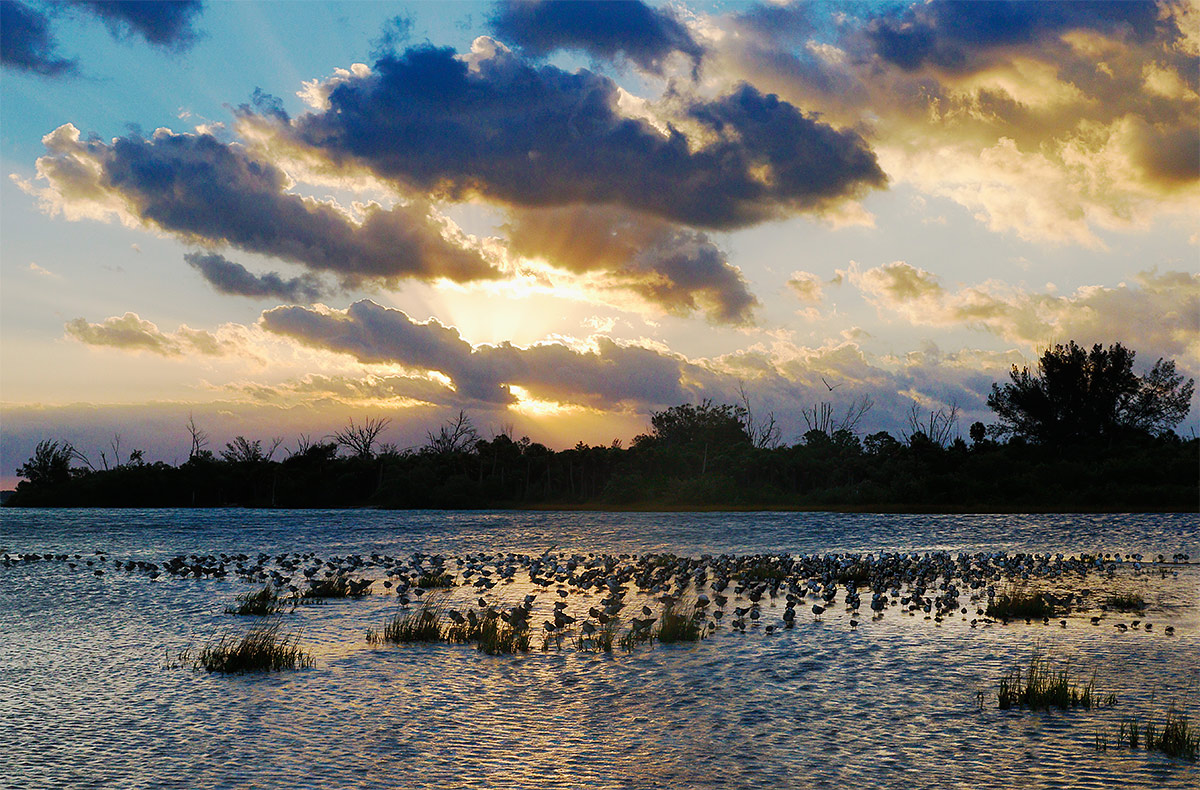
|
|
This 3-frame in-camera Art Vivid HDR image was created at 8:03am on the cold, windy, stormy morning of November 1, 2014 with the Canon EF 24-70mm f/2.8L II USM lens (hand held at 24mm) and a beta version of the Canon EOS 7D Mark II . ISO 800. Evaluative metering -1/3 stop +/-1 stop around a base exposure of 1/800 sec. at f/11 in Tv mode. AWB.
Central sensor/AI Servo Surround/Rear Focus AF on the closest bird and re-compose. Click here to see the latest version of the Rear Focus Tutorial. Click on the image to see a larger version.
Image #2: Shorebird flocks
|
Stormy HDR to the East
Here, wanting to include the dramatic clouds mixed with sun to the east, I stayed on the spit and worked back to the east.
Exposure Question
Why a base exposure at +1 2/3 stops for image #1 but a base exposure of -1/3 stop for image #2?
|
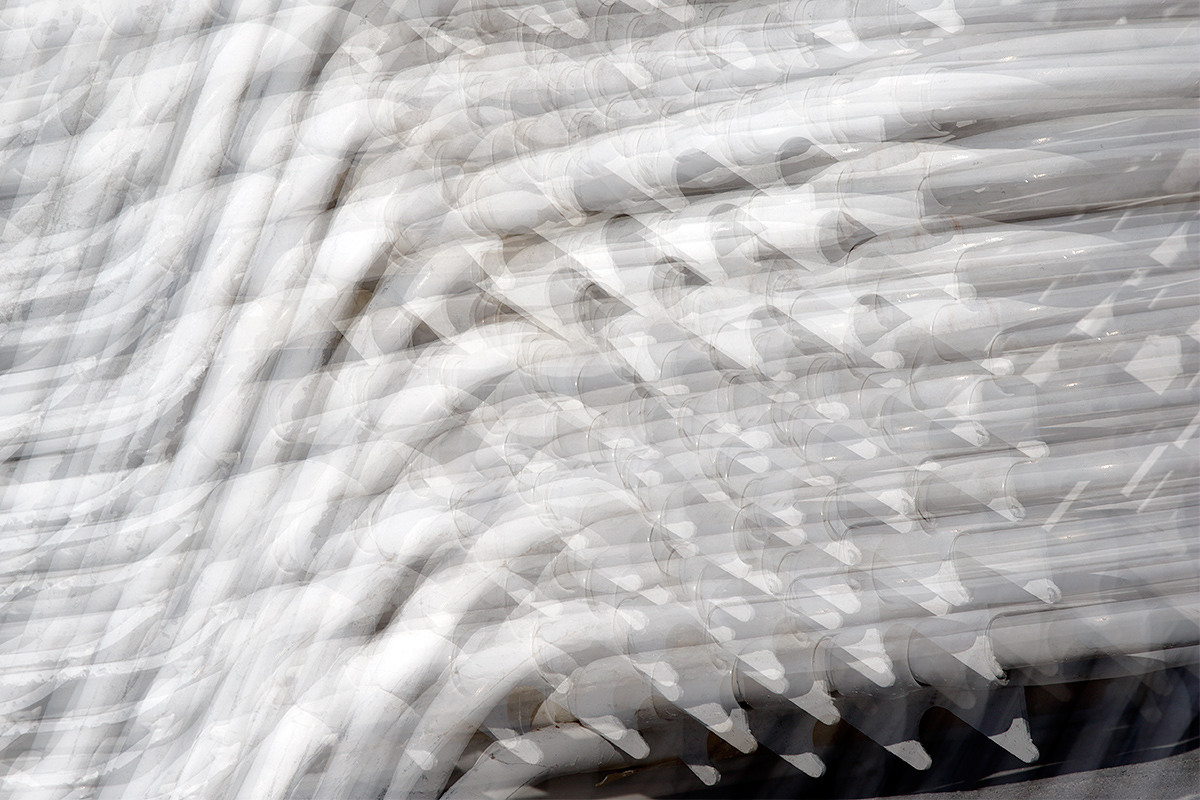
|
|
This 5-frame multiple exposure was created at 10:18am on the cold clear morning of November 2, 2014 with the hand held Canon EF 300mm f/2.8L IS II USM lens, a Canon Extender EF 1.4X III, and a beta version of the Canon EOS 7D Mark II . ISO 400. Evaluative metering +2/3 stop: 1/2500 sec. at f/11 in Av mode. AWB.
Central sensor/AI Servo Surround/Rear Focus AF as framed was active at the moment of each exposure. Click here to see the latest version of the Rear Focus Tutorial. Click on the image to see a larger version.
Image #3: In-camera Multiple Exposure
|
Multiple Exposures (MEs)
Whenever you see repetitive patterns, you might consider creating a few multiple exposures, especially if your body offers and in-camera ME feature. Think large fields of flowers…. Both the HDR and ME features on the 7D II work exactly as they do on the 5D III so if you have our 5D III User’s Guide or if you have figured out the best settings on your own, you should be good to go.
What Is It?
If you think that you know what is depicted in the 3rd image, please leave a comment and let us know.
Festival of the Cranes Event Updates
For complete information on the stuff below, click here and scroll down. To register for one of more events, click here.
Important Info
We’ve learned that the Festival schedule may take a long time to load, even for some folks with high speed internet access. Please know that you can register by phone by calling 575-835-2077 from 9:00am-Noon Mountain Daylight Time.
ITF-Early Morning Workshops
The Thursday and Friday sessions are sold out. The Sunday session nearly so. There is still room for you on Saturday. Cheap!
Bosque del Apache Photography Two-Part Seminar. Thursday, NOV 20, 2014. 2:00-4:30 pm at the refuge visitor center with Arthur Morris and Denise Ippolito: $50.00. Please see the registration information above.
Inexplicably, there are still more than a few spots open for this great event. Denise and I will be sharing all of our Bosque tips, techniques, and secrets. Cheap.
Part I: Bosque del Apache Photography Basics
Artie and Denise will cover the basics of lens selection, tripod and head selection, image design, getting the right exposure, autofocus options, and the relationship between light direction and wind direction, and will give an overview of the best photographic opportunities at the refuge. Artie and Denise have more than 26 years of experience photographing Bosque and count it high on their list of soul places.
Part II: Creative Photography at Bosque del Apache
Artie and Denise will teach you to think outside the box when photographing at the refuge (and elsewhere!). You will learn to create a variety of pleasingly blurred images by using slow shutter speeds, by photographing moving subjects, and by zooming or by panning with the lens during the exposure. They will teach you to take advantage of spectacular lighting and weather conditions. They will also cover post processing creative techniques.
|
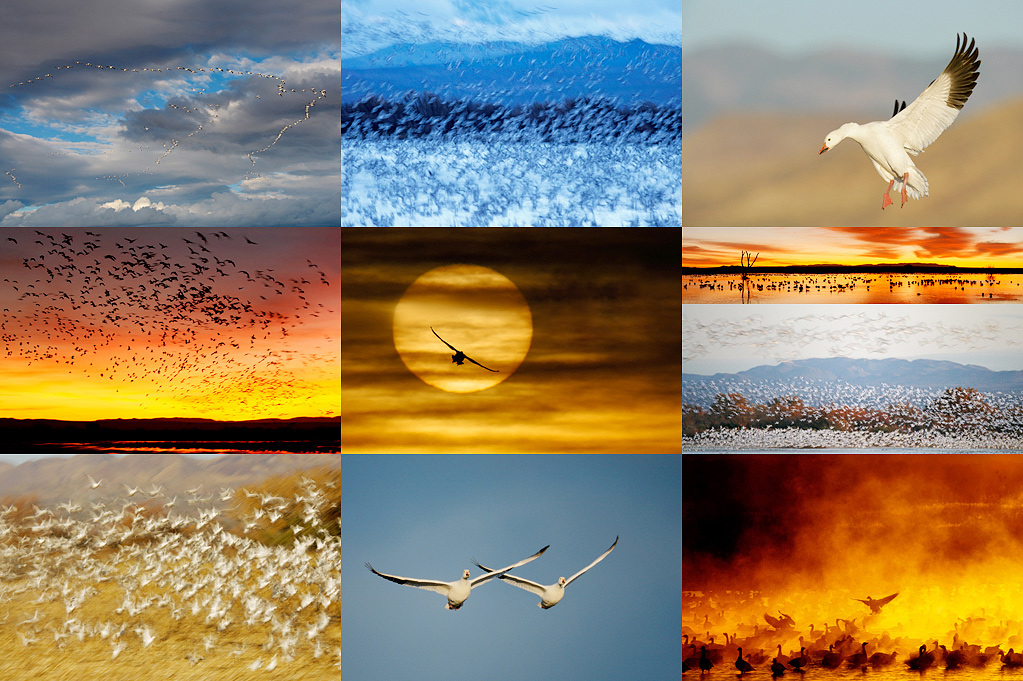
|
|
It’s been a 20+ year love affair….
|
“Love Affair with Bosque.” Sponsored by Canon. Friday, NOV 21, 2014; 1:00 to 2:40pm. Free, at the Bodega Restaurant, Socorro.
A slide program by Arthur Morris/BIRDS AS ART. Limit 200.
Though this is a free event you do need to register either online or by phone as noted above.
Arthur Morris first visited Bosque del Apache Refuge in December, 1992 while on sabbatical with his late-wife Elaine While leading his first Bosque del Apache photographic workshop in December, 1994, quite soon after Elaine’s death, he created two iconic Bosque images. His “Blizzard in Blue” was honored in the prestigious 1998 BBC Wildlife Photographer of the Year Competition. “Fire in the Mist” was similarly honored in the 2001 BBC competition and soon thereafter was featured as wrap-around cover art on the coffee table book, Life on the Earth, a celebration of 30 years of the best images from the Wildlife Photographer of the Year Competitions. Those two images laid the foundation for his more than two decade love affair with the refuge. He has returned every year since then at the Thanksgiving season while leading BIRDS AS ART Instructional Photo-Tours. In addition, he has two February visits along with two September visits, the latter visits in conjunction with the Bosque del Apache Open Windows Volunteer Program that he founded. Join us for Artie’s photographic celebration of his “Love Affair with Bosque.”
Facebook
Be sure to like and follow BAA on Facebook by clicking on the logo link upper right. Tanks a stack!
Support the BAA Blog. Support the BAA Bulletins: Shop B&H here!
We want and need to keep providing you with the latest free information, photography and Photoshop lessons, and all manner of related information. Show your appreciation by making your purchases immediately after clicking on any of our B&H or Amazon Affiliate links in this blog post. Remember, B&H ain’t just photography!
…..
Amazon.com
Those who prefer to support BAA by shopping with Amazon may use this link:
Amazon Canada
Many kind folks from north of the border, eh, have e-mailed stating that they would love to help us out by using one of our affiliate links but that living in Canada and doing so presents numerous problems. Now, they can help us out by using our Amazon Canada affiliate link by starting their searches by clicking here. Many thanks to those who have written.
Typos
In all blog posts and Bulletins, feel free to e-mail or to leave a comment regarding any typos or errors. Just be right :).
November 5th, 2014 The Streak Continues: 340
Yesterday was a day of answering e-mails and learning more about my relatively new Apple 15.4″ MacBook Pro Notebook Computer with Retina Display (Mid-2014).
I will be sharing the tale of my transition to the top of the line Mac with y’all here soon.
I enjoyed another easy 3/4 mile swim and a nice nap. This blog post, the 340th in a row, took about two hours to prepare and was published from my home at Indian Lake Estates just after 6:45am.
Please Help Support My Work on the BAA Blog
Thanks a Stack! October was a Great Month.
Even without the numerous EOS-7D Mark II sales made with our BAA Affiliate links–pre-orders are not credited until the item ships–October was a very rewarding month. Thanks a stack to all who used our B&H links for purchases large and small.
To show your appreciation for my efforts here, we ask, as always, that you use our the B&H and Amazon affiliate links on the right side of the blog for all of your purchases. B&H Is recommended for you major photography gear purchases, Amazon for your household, entertainment, and general purpose stuff. Please check the availability of all photographic accessories in the BIRDS AS ART Online Store, especially Gitzo tripods, Wimberley tripod heads, and the like. We sell only what I have used, have tested, and can depend on. We will not sell you junk. We know what you need to make creating great images easy and fun. And we are always glad to answer your gear questions via e-mail.
You can find the following items in the store: Gitzo tripods, Mongoose M3.6 and Wimberley heads, plates, low feet, and accessories, flash brackets, , Delkin e-film Pro Compact Flash Cards, LensCoat products, and our unique line-up of educational materials including ABP I & II, Digital Basics, Site and Set-up e-Guides, Canon and Nikon Camera Users and AF e-Guides, and MP-4 Photoshop video tutorials among others.
I would of course appreciate your using our B&H affiliate links for all of your major gear, video, and electronic purchases. For the photographic stuff mentioned in the paragraph above we, meaning BAA, would of course greatly appreciate your business. Here is a huge thank you to the many who have been using our links on a regular basis and visiting the BAA Online store as well.


If what you learned here on my blog about the Canon EOS-7D Mark II has inspired you to purchase this great new camera body, please consider using the logo link above to support our efforts here in bringing you the latest, greatest educational materials on daily basis.
|

|
|
This image was created at 5:38pm on the afternoon of 10 October, on the first-ever BIRDS AS ART Meet-up In-the-Field Workshop. Co-leader Robert Kimbrell kindly loaned me a sturdy off-brand tripod topped with a Wimberley V-2 Tripod head. On that I mounted the Canon EF 200-400mm f/4L IS USM lens with Internal 1.4x Extender (with the internal extender in place at the max, 560mm) and a beta version of the Canon EOS 7D Mark II . ISO 400. Evaluative metering -2/3 stop as framed: 1/1250 sec. at f/5.6 in Manual mode.
Central sensor/AI Servo Expand/Rear Focus AF on the spot where the back of the bird’s hood met the white of the underwing was active at the moment of exposure. Click here to see the latest version of the Rear Focus Tutorial. Click on the image to see a larger version.
American Oystercatcher flapping after bath
|
Canon 200-400mm with Internal TC and EOS-7D Mark II a Powerful and Versatile Combo
The 2-4 with Internal Extender with the great new 1.6 crop body that is the 7D Mark II makes for a great one-size fits all rig for both bird and wildlife photography. With the zoom set to 400 and the internal TC in place you are at 896mm (nearly 18X magnification). Adding an external 1.4X III TC brings you to 1254.4mm, more than 25X. And with the lens alone zoomed out to 200mm you will have 320mm coverage. Throw in the Canon EF 70-200mm f/2.8L IS II lens and you are pretty well covered as far as telephoto focal length range goes.
Why the Tripod?
Though many can hand hold the 200-400 with the lightweight 7D Mark II for long shooting sessions, even for an entire day, I cannot unless all of my work is being done from a seated position using the always available left knee-pod. Hand holding offers lot of freedom, freedom to move about rather quickly and freedom to get the lens in pretty much any position needed. But when you are standing, the lactic acid builds up pretty quickly. At those times working off a tripod is the only way to go. Above, in a pinch, I borrowed a rig that let me go on photographing. Normally I would have my Gitzo 3532 LS carbon fiber tripod with a Mongoose M3.6 head atop it.
Working on a tripod while waiting for a bathing bird to flap after its bath enables you to frame the image easily and comfortably for as long as it takes. Sometimes they seem to bathe forever…. After a pretty good wait I got four nice frames from a ten-frame sequence. You gotta love the frame rate of the 7D II. My favorite of course is the one presented here.
The Situation
Late light on the birds with dark storm clouds in the east being reflected in the water makes for an ideal situation. Find a decent subject and make lots of images.
The Image Optimization
As you can see by considering the before and after 100% views above, the three biggest problems were that the nictitating membrane covered and pretty much ruined the eye, that the eye was less than sharp–most likely due to subject movement during the flap, and that the red of the bill and the eye ring were way over the top.
After opening up the shadows during the RAW conversion in DPP 4.0 I brought the image into Photoshop. I added a ton of CYAN to the REDs in Selective Color to tone down the bill. While I was there I added some BLACK to the BLACKs as well. I did lots of Eye Doctor work that was quite successful. And I sharpened the face, head, and upper neck with a Contrast Mask after making the selection with the Quick Selection Tool. Then I selected the whole bird, again with the Quick Selection Tool, placed the selection on its own layer, ran a layer of my NIK 25/25 recipe, and fine-tuned that with the addition of a Regular Layer Mask. The trick with NIK is to use it sparingly.
The result was that the bird’s eye, face, and head were dramatically improved.
The DPP 4 eGuide
The RAW file for this image was converted in DPP v4.01.0 that now supports the 7D Mark II along with image files from the 1D X, the 5D III, the 6D. DPP 4 is a totally new program, far more sophisticated and complex than the various iterations of DPP 3. Thus, Arash and I created a new, stand-alone eGuide for DPP 4, one that really simplifies things. As so much work and effort went into the creation of the DPP 4 eGuide, it does require a separate purchase. Learn more about this great new guide by clicking here, or purchase a copy here.
Note: the Sharpness and Noise Reduction Charts will be updated to include the recommended values for the 7D Mark II. I begin sending RAW files to Arash today. This process will involve a ton of additional work by both authors. This update will of course be free but please be patient.
Those using older Canon camera bodies like the 1D Mark IV, the 7D, the 50D, the 40D, the various Rebels (not highly recommended for serious nature photography), are directed to the original DPP RAW Conversion Guide click here. DPP 3 (the latest version is DPP v3.14.41.0) does a fine job of converting images from the older camera bodies. I used it for several years.
DPP 4 eGuide Kudos via e-mail from Melvin Grey
Artie, Thank you very much for creating and sending the superb new guide and for the excellent service.THANK YOU and ARASH, once again, for an invaluable guide and THANK YOU for your continuing educational blogs. Melvin
Digital Basics
Everything that I did to optimize today’s images is covered in detail in my Digital Basics File–written in my easy-to-follow, easy-to-understand style. Are you tired of making your images look worse in Photoshop? Digital Basics File is an instructional PDF that is sent via e-mail. It includes my complete digital workflow, dozens of great Photoshop tips (including the Surface Blur settings as taught to me by Denise Ippolito), details on using all of my image clean-up tools, the use of Contrast Masks, several different ways of expanding and filling in canvas, all of my time-saving Keyboard Shortcuts, Quick Masking, Layer Masking, and NIK Color Efex Pro basics, Contrast Masks, Digital Eye Doctor techniques, using Gaussian Blurs, Tim Grey Dodge and Burn, a variety of ways to make selections, how to create time-saving actions, and tons more.
APTATS I & II
Learn the details of advanced Quick Masking techniques in APTATS I. Learn Advanced Layer Masking Techniques in APTATS II. Mention this blog post and apply a $5 discount to either with phone orders only. Buy both APTATS I and APTATS II and we will be glad to apply at $15 discount with phone orders only. Please call Jim or Jennifer at 863-692-0906 weekdays to order.
|
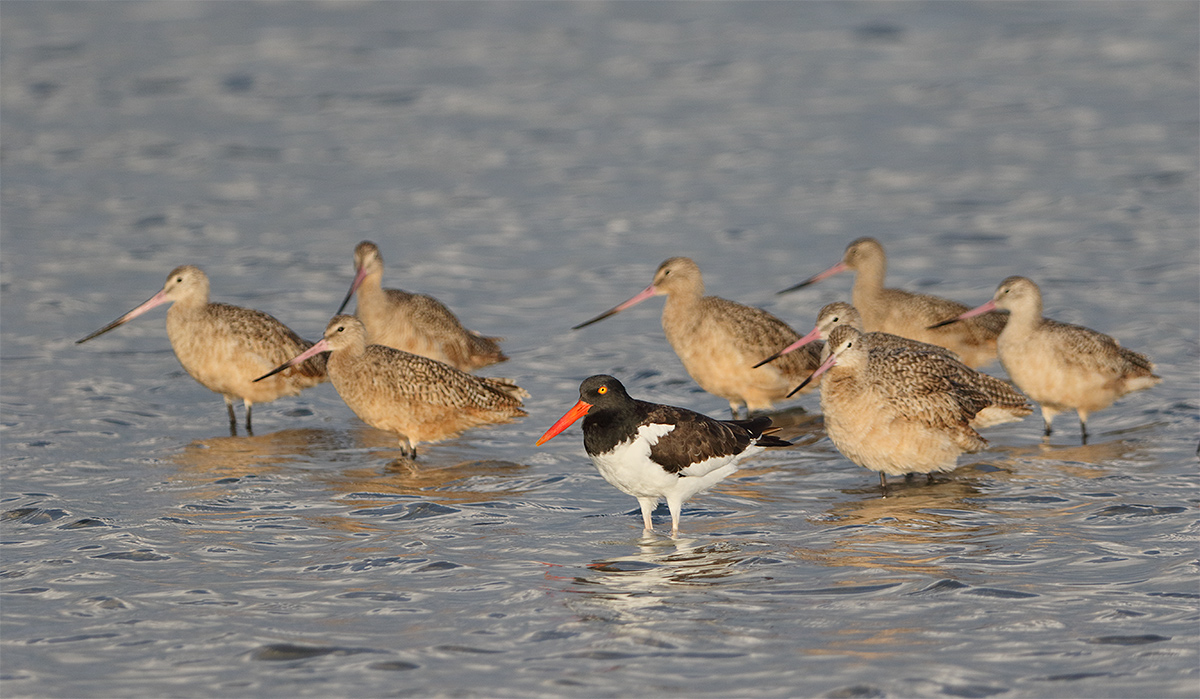
|
|
This image was created at 6:11pm, also on the afternoon of 10 October, on the first-ever BIRDS AS ART Meet-up In-the-Field Workshop. Co-leader Robert Kimbrell kindly loaned me a sturdy off-brand tripod topped with a Wimberley V-2 Tripod head. On that I mounted the Canon EF 200-400mm f/4L IS USM lens (at 383mm) and a beta version of the Canon EOS 7D Mark II . ISO 400. Evaluative metering -1/3 stop as framed: 1/1000 sec. at f/5.6 in Manual mode.
Central sensor/AI Servo Expand/Rear Focus AF on face of the oystercatcher and release. Click here to see the latest version of the Rear Focus Tutorial. Click on the image to see a larger version.
American Oystercatcher with Marbled Godwits
your text and adds
|
Framing Options with the 200-400 with Internal Extender
Here we see that by dis-engaging the internal TC and zooming out a bit I was able to create a mini flock scape that featured the oystercatcher as the primary subject with the godwits making up the supporting cast. Four and one-half good head angles out of eight was as good as I could do….
Facebook
Be sure to like and follow BAA on Facebook by clicking on the logo link upper right. Tanks a stack!
Support the BAA Blog. Support the BAA Bulletins: Shop B&H here!
We want and need to keep providing you with the latest free information, photography and Photoshop lessons, and all manner of related information. Show your appreciation by making your purchases immediately after clicking on any of our B&H or Amazon Affiliate links in this blog post. Remember, B&H ain’t just photography!
…..
Amazon.com
Those who prefer to support BAA by shopping with Amazon may use this link:
Amazon Canada
Many kind folks from north of the border, eh, have e-mailed stating that they would love to help us out by using one of our affiliate links but that living in Canada and doing so presents numerous problems. Now, they can help us out by using our Amazon Canada affiliate link by starting their searches by clicking here. Many thanks to those who have written.
Typos
In all blog posts and Bulletins, feel free to e-mail or to leave a comment regarding any typos or errors. Just be right :).
November 4th, 2014 The Streak Continues: 339
Yesterday was a day of learning more about my relatively new Apple 15.4″ MacBook Pro Notebook Computer with Retina Display (Mid-2014). Less than a week ago I was thisclose to offering my new $3,199.00 notebook for sale for $2100. Today I am fully confident that I will do just fine with my Mac. Thanks to the many who commented and e-mailed offering helpful suggestions and links to websites that offered lists of keyboard shortcuts and other helpful hints. There have been so many that I have not had time to thank everyone individually.
I will be sharing the tale of my transition to the top of the line Mac with y’all here soon.
I enjoyed an easy 3/4 mile swim; the pool was down to 74 degrees. It was not as bad as the ice bath that I enjoyed after dinner. This blog post, the 339th in a row, took less than two hours to prepare and was published from my home at Indian Lake Estates just before 5:30am.
Please Help Support My Work on the BAA Blog
Thanks a Stack! October was a Great Month.
Even without the numerous EOS-7D Mark II sales made with our BAA Affiliate links–pre-orders are not credited until the item ships–October was a very rewarding month. Thanks a stack to all who used our B&H links for purchases large and small.
To show your appreciation for my efforts here, we ask, as always, that you use our the B&H and Amazon affiliate links on the right side of the blog for all of your purchases. B&H Is recommended for you major photography gear purchases, Amazon for your household, entertainment, and general purpose stuff. Please check the availability of all photographic accessories in the BIRDS AS ART Online Store, especially Gitzo tripods, Wimberley tripod heads, and the like. We sell only what I have used, have tested, and can depend on. We will not sell you junk. We know what you need to make creating great images easy and fun. And we are always glad to answer your gear questions via e-mail.


If what you learned here on my blog about the Canon EOS-7D Mark II has inspired you to purchase this great new camera body, please consider using the logo link above to support our efforts here in bringing you the latest, greatest educational materials on daily basis.
|
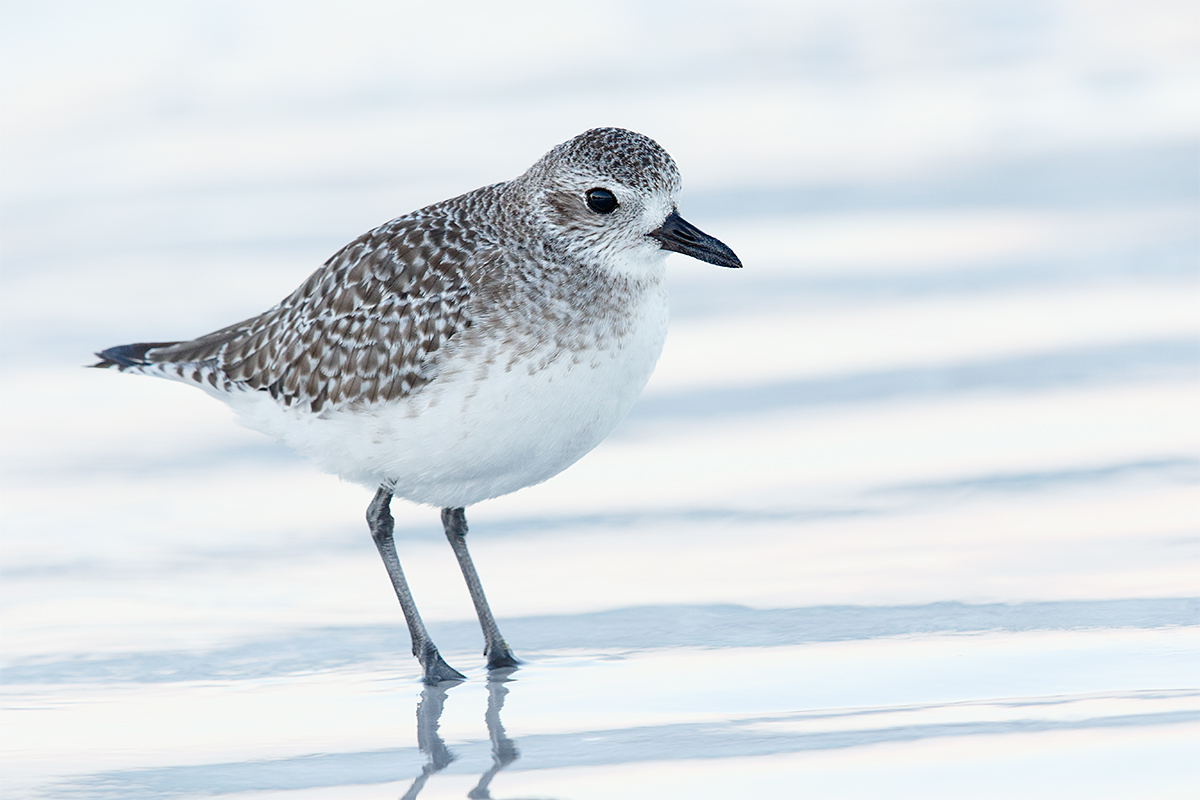
|
|
This image was created at 8:05am in the shade of a large stand of trees on the clear, cold morning of November 2, 2014 at Fort DeSoto Park. I used the Gitzo 3532 LS carbon fiber tripod, the Mongoose M3.6 head, the Canon EF 600mm f/4L IS II USM lens, the Canon Extender EF 1.4X III, and a beta version of the Canon EOS 7D Mark II . ISO 800. Evaluative metering + 2 stops as framed: 1/250 sec. at f/8 in Av mode. AWB.
Central sensor/AI Servo Surround/Rear Focus AF on the bird’s belly was active at the moment of exposure. Click here to see the latest version of the Rear Focus Tutorial. Click on the image to see a larger version.
Image #1: Black-bellied Plover winter plumage posing
|
Ah, the Flag!
As we approached the large flag after the entrance booth at DeSoto, I was happy to see the wind from the NE rather than from the NW as we had had on Saturday. Sunday loomed clear and bright and a NW wind in those conditions is pretty much fatal to bird photography.
As we approached my favorite, dependable location, the exact spot where we had had thousands of shorebirds, terns and gulls just 24 hours ago, there were less than ten birds. They flew away when we took one step towards them…. Some days are diamonds, some days are stone. But Greg was there to learn so we walked along the Gulf looking for a Willet or a Black-bellied Plover to photography. Even those two dependable species were scarce.
Ah, Birds in the Shade
When Greg saw a few birds feeding in the shade, he said, “The light is lousy.” I said, “There is no such thing as lousy light. Only lousy photographers who do not understand how to get the right exposure. With Nikon you will need to add about 1 1/3 stops of light to move the histogram well to the right and get a few blinkies on the background. With Canon I knew that I would need to go with +2 stops or more. “Let’s go: we can make some beautiful images. Watch the breaking waves in the background. Try to get a bird on clean sand with a nice wet sand background.”
He did.
|
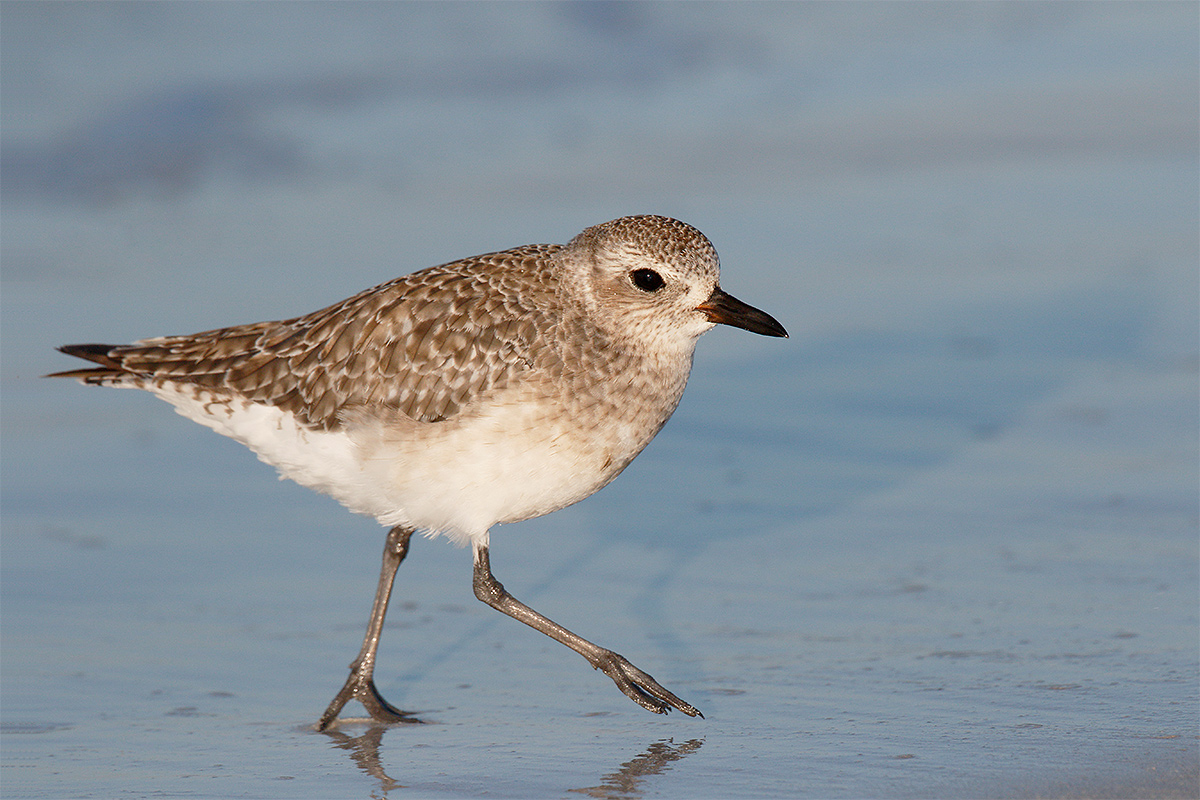
|
|
This image was created on the clear, sunny morning of November 2, 2014 at Fort DeSoto Park. I used the hand held Canon EF 300mm f/2.8L IS II USM lens, with the Canon Extender EF 2X III, and a beta version of the Canon EOS 7D Mark II . ISO 400. Evaluative metering +1/3 stop: 1/4000 sec. at f/6.3 in Av mode. AWB.
One sensor above the Central Zone/AI Servo Surround/Rear Focus AF on the bird’s eye was active at the moment of exposure. Click here to see the latest version of the Rear Focus Tutorial. Click on the image to see a larger version.
Image #2: Black-bellied Plover winter plumage running
|
Ah, Birds in the Sun
With the tide a lot lower than the day before for a variety of reasons, the birds never came in so we got in the car and drove a short distance to a different part of the lagoon in hopes of finding a tame Yellow-crowned Night-Heron for Greg. We did not find one, tame or otherwise. What to photograph? A very few Willets and Black-bellied Plovers. An oystercatcher flew in but as the wind had switched to north by a little bit west it fed along the Gulf surf facing away from us and away from the light. More lessons. We were left to photograph the Willets and the black-bellieds.
Exposure in the bright sun is a whole ‘nother topic. “Greg, with Nikon here you will need to be at either zero or -1/3 stop. Take a few in aperture priority, check your histogram, and when you figure out the perfect exposure, set it manually and you are good to go.” I did the same with the 7D II at +1/3 stop.
I forgot to mention that it was even colder on Sunday morning than it had been on Saturday morning. But it was less windy and we were much better dressed. The only thing missing were the birds. You gotta love nature photography….
Ah, the Big Question!
Which light do you prefer, shade or sun? I have a clear preference.
|

|
|
Morro Bay offers a wealth of very attractive natural history subjects in a variety of attractive settings.
|
2015 Morro Bay 5-DAY BIRDS AS ART Instructional Photo-Tour (IPT): MAR 14 thru MAR 18, 2015: $1999 (Limit: 8.)
Meet and Greet after dinner on your own at 8:00pm on MAR 13.
Join me in one of the most beautiful and scenic places on the planet to photograph a large variety of birds of the sea and shore. As above, the star of the show will be Long-billed Curlew. There will be lots of Marbled Godwits and Willets as well as lots of the smaller shorebird species. Black Oystercatcher is likely and we should get to photograph large flocks of Western Sandpipers in flight over the bay. With any luck we should enjoy some great sunrise and sunset photography. There are lots of gulls including Western, California, and Mew. There is one good location where we should get to photograph Western, Clarke’s, Eared, and Pied-billed Grebe, Lesser Scaup, and Common Loon. We may get to photograph some passerines including Anna’s Hummingbird, Brewer’s Blackbird, and White-crowned Sparrow. And we have a chance for several species of raptors. Yikes, I almost forgot California Poppy. And California Ground Squirrel. Sea Otters are also possible.
This IPT will include five 3 1/2 hour morning photo sessions, five 2 1/2 hour afternoon sessions, five lunches, after-lunch image review and Photoshop sessions, and of course tons of great in-the-field instruction and photographic instruction. To ensure early starts, breakfasts will be your responsibility.
A $499 non-refundable deposit is required to hold your slot for this IPT. You can send a check (made out to “Arthur Morris) to use at BIRDS AS ART, PO Box 7245, Indian Lake Estates, FL, 33855. Or call Jim or Jennifer at the office with a credit card at 863-692-0906. Your balance, payable only by check, will be due on 12/1//2014. If the trip fills, we will be glad to apply a credit applicable to a future IPT for the full amount less a $100 processing fee. If we do not receive your check for the balance on or before the due date we will try to fill your spot from the waiting list. If your spot is filled, you will lose your deposit. If not, you can secure your spot by paying your balance. Please print, complete, and sign the form that is linked to here and shoot it to us along with your deposit check. If you register by phone, please print, complete and sign the form as noted above and either mail it to us or e-mail the scan. If you have any questions, please feel free to contact me via e-mail.
Used Canon EF 800mm f/5.6L IS (Image Stabilizer) USM Lens
Mike Stevens is offering a used Canon EF 800mm f/5.6L IS (Image Stabilizer) USM lens in like-new condition (used just once) for a ridiculously low $7999. The sale includes the front leather hood, the rear dust cap, the original case, a Wimberley P-50 lens plate, and insured shipping to US addresses only. Your lens will be shipped only after your check clears unless other arrangements are made; Paypal is an option.
Please contact Mike via e-mail, by phone at 951-260-2507, or on his cell at 951-821-1600.
The 800 was my go-to super-telephoto lens for about 4 years.
Facebook
Be sure to like and follow BAA on Facebook by clicking on the logo link upper right. Tanks a stack!
Support the BAA Blog. Support the BAA Bulletins: Shop B&H here!
We want and need to keep providing you with the latest free information, photography and Photoshop lessons, and all manner of related information. Show your appreciation by making your purchases immediately after clicking on any of our B&H or Amazon Affiliate links in this blog post. Remember, B&H ain’t just photography!
…..
Amazon.com
Those who prefer to support BAA by shopping with Amazon may use this link:
Amazon Canada
Many kind folks from north of the border, eh, have e-mailed stating that they would love to help us out by using one of our affiliate links but that living in Canada and doing so presents numerous problems. Now, they can help us out by using our Amazon Canada affiliate link by starting their searches by clicking here. Many thanks to those who have written.
Typos
In all blog posts and Bulletins, feel free to e-mail or to leave a comment regarding any typos or errors. Just be right :).
|
|
















